
Enshittification: Why Everything Suddenly Got Worse and What to Do About It
by
Cory Doctorow
Published 6 Oct 2025
The Discipline of Tech Workers The tech labor market is unique. For many decades, tech workers have enjoyed a tremendous amount of labor power, despite working in a sector with extremely low union density. Unions give workers power by solving their collective action problems. When workers bind together into a single bargaining unit, their bosses can’t play them off against one another in order to erode their wages and working conditions. But tech workers’ power came from another source: scarcity. For most of modern history, the tech industry has demanded far more tech workers than the world could supply.
…
This shortage could not be overcome, no matter how much work tech bosses offshored, no matter how many workers they brought in from overseas. Tech workers understood that their bosses needed them more than they needed their bosses. They knew that they could quit anytime, walk across the street, and get a job that was just as good, or better, with a rival firm. (It helped that the center of the tech industry was Silicon Valley, because the California state constitution bans noncompete agreements.) Tech workers knew this, and their bosses knew it. Tech workers knew their bosses knew it, and their bosses knew that their workers knew it. Scarcity gave tech workers enormous bargaining power, so tech bosses got creative.
…
Rather than motivating their workers by threatening them with replacement by more desperate workers willing to accept worse pay and conditions, tech bosses discovered a different, winning strategy: inculcating a sense of mission into tech workers. The self-mythologizing of the tech sector was hugely beneficial to tech bosses. By framing every tech worker as a temporarily embarrassed entrepreneur, a founder-in-waiting who was only drawing a salary to pay the bills until they founded their own startup, tech bosses were able to convince tech workers that they weren’t workers at all. Perhaps the bosses even believed this! Tech bosses converted their workplaces into whimsical “campuses” with gourmet cafeterias, luxury fitness centers, free dry cleaning and massages, and egg-freezing services so that tech workers could stay on the job through their fertile years without ever taking parental leave.

The Smartphone Society
by
Nicole Aschoff
In March 2019, the Department of Housing and Urban Development (HUD) sued Facebook for its ad policy, citing violations of the Fair Housing Act and discriminatory practices against users.31 Highly paid tech workers and the companies that employ them are also creating havoc in the places where these tech firms settle, such as East Palo Alto and San Francisco. In California, for each new tech worker, it is estimated that between two and five supporting jobs are created—dining hall servers, bus drivers, security guards, and cleaners. New jobs are great, but these jobs tend to be low-paid contract gigs. With the skyrocketing rents in communities near and in Silicon Valley caused by increased demand from highly paid tech workers, many ordinary folks find that they no longer can find a place to live in the region.
…
Nothing demonstrates who is valued and who isn’t better than the pay disparity between full-time, permanent employees and “blue-collar,” contract tech workers—workers who don’t receive the pay or benefits enjoyed by full-time employees despite filling critical roles ranging from content moderators and customer support reps to janitors and shuttle bus drivers. In Santa Clara County blue-collar tech workers make an average of $19,900 a year whereas permanent, full-time employees of the same companies make $113,000.8 Blue-collar tech workers have had enough. Facebook cafeteria workers voted to unionize in March 2018. Facebook also agreed to pay all its contract employees $15 an hour, following a broader nationwide push by the Fight for $15 campaign.
…
Many blue-collar tech workers are organizing through Silicon Valley Rising, a community-, faith-, and labor-based coalition created to fight occupational segregation and income inequality. SVR sees the struggles of tech workers as rooted in the broader dislocations and disruptions caused by tech companies’ rapid and unrestrained invasion of Santa Clara County over the past few decades. The coalition calls not only for wage gains but also affordable housing, and an inclusive tech industry; right now only one in ten permanent employees of tech companies are Black or Latino. Low-paid tech workers are fighting for bread and butter, but they aren’t the only workers in the tech industry who are fighting.

Marx at the Arcade: Consoles, Controllers, and Class Struggle
by
Jamie Woodcock
Published 17 Jun 2019
(SlideShare presentation, Research for Media Training North West, Manchester, UK, September 2004), 13. 92Dyer-Witheford and de Peuter, Games of Empire, 63. 93Weststar, O’Meara, and Legault, “Developer Satisfaction Survey 2017 Summary Report,” 12. 94Weststar, O’Meara, and Legault, “Developer Satisfaction Survey 2017 Summary Report,” 17. 95Weststar, O’Meara, and Legault, “Developer Satisfaction Survey 2017 Summary Report,” 18. 96Kirkpatrick, Computer Games and the Social Imaginary, 107. 97Williams, “You Can Sleep Here All Night.” 98Kirkpatrick, Computer Games and the Social Imaginary, 108. Organizing in the Videogames Industry 1“Tech Workers Coalition,” Tech Workers Coalition, 2018, https://techworkerscoalition.org. 2R. K. Upadhya, “Disrupting Disruption: On Intervening against Technological Restructuring,” Notes from Below 2 (March 30, 2018), www.notesfrombelow.org/article/disrupting-disruption. 3Jason Prado, “Prospects for Organizing in the Tech Industry,” Notes from Below 2 (March 30, 2018), www.notesfrombelow.org/article/prospects-for-organizing-the-tech-industry. 4Tech Workers Coalition, “Tech Workers, Platform Workers, and Workers’ Inquiry.” Notes from Below 2 (March 30, 2018), www.notesfrombelow.org/article/tech-workers-platform-workers-and-workers-inquiry. 5Tech Workers Coalition, “Tech Workers, Platform Workers, and Workers’ Inquiry.” 6“Why We Strike,” SAG-AFTRA, 2016, www.sagaftra.org/files/whywestrike.pdf. 7Quoted in Ian Williams, “The Ongoing Voice Actor’s Strike Is More than Just a Little Drama,” Waypoint, December 29, 2016, https://waypoint.vice.com/en_us/article/nznyxq/the-ongoing-voice-actors-strike-is-more-than-just-a-little-drama. 8Quoted in Williams, “The Ongoing Voice Actor’s Strike.” 9Luke Plunkett, “The Video Game Voice-Actor’s Strike Is Over,” Kotaku, November 7, 2017, https://kotaku.com/the-video-game-voice-actors-strike-is-over-1820240476. 10Dante Douglas, “Game Developers Need a Union,” Paste, March 7, 2018, www.pastemagazine.com/articles/2018/03/game-developers-need-a-union.html. 11Quoted in Ethan Gach, “Developers at One French Game Studio Have Been on Strike for a Month,” Kotaku, March 16, 2018, https://kotaku.com/developers-at-one-french-game-studio-have-been-on-strik-1823833426. 12This is a national collective bargaining agreement in France that mainly covers consulting firms. 13Gach, “Developers at One French Game Studio.” 14Quoted in Gach, “Developers at One French Game Studio.” 15Gach, “Developers at One French Game Studio.” 16Quoted in Gach, “Developers at One French Game Studio.” 17“A Black and White Tri-Fold Leaflet,” Game Workers Unite UK, 2018, http://gwu-uk.org/assets/trifold-bw-uk.pdf. 18Matt Kim, “IGDA Director Says Capital, Not Unions, Will Keep Game Development Jobs Secure,” US Gamer, January 19, 2018, www.usgamer.net/articles/igda-director-union-crunch-interview. 19Ian Williams, “After Destroying Lives for Decades, Gaming Is Finally Talking Unionization,” Waypoint, March 23, 2018, https://waypoint.vice.com/en_us/article/7xdv5e/after-destroying-lives-for-decades-gaming-is-finally-talking-unionization. 20Williams, “After Destroying Lives for Decades.” 21Williams, “After Destroying Lives for Decades.” 22Williams, “After Destroying Lives for Decades.” 23Michelle Ehrhardt, “IGDA, Union-Busting and GDC 2018,” Unwinnable, March 22, 2018, https://unwinnable.com/2018/03/22/igda-union-busting-and-gdc-2018. 24Ehrhardt, “IGDA, Union-Busting and GDC 2018.” 25Game Workers Unite, “Game Workers Unite Zine,” Notes from Below 2 (March 30, 2018), www.notesfrombelow.org/article/game-workers-unite-zine. 26Game Workers Unite, “Game Workers Unite Zine.” 27Game Workers Unite, “Game Workers Unite Zine.” 28Quoted in Thomas Wilde, “‘It’s Very David and Goliath’: Inside the Growing Effort to Unionize Video Game Developers,” Geekwire, May 9, 2018, www.geekwire.com/2018/david-goliath-inside-growing-effort-unionize-video-game-developers. 29Quoted in Wilde, “It’s Very David and Goliath.” 30“Prospects for Organising the Videogames Industry: Interview with Game Workers Unite UK,” interview by Jamie Woodcock, Notes from Below 3 (August 16, 2018), https://notesfrombelow.org/article/prospects-for-organising-the-videogames-industry. 31“Prospects for Organising.” 32“Prospects for Organising.” 33“Prospects for Organising.” 34Jamie Woodcock, “Playing for Power,” Jacobin, January 3, 2019, https://jacobinmag.com/2019/01/video-game-workers-unite-union-uk. 35See, for example, articles at https://notesfrombelow.org/.
…
Upadhya, a member of TWC, explained: “Since the 2016 elections in the US, there has been an unprecedented level of visible unrest among workers at all levels in the tech industry, from food service workers to programmers and engineers.”2 For TWC, this unrest has led to tech workers organizing, but it has also spawned cross-sector campaigns at the so-called campus workplaces, with tech workers—who often enjoy better pay, terms, and conditions—supporting the struggles of other groups of service workers. As Jason Prado, a software developer, wrote in an article published in Notes from Below: “Service workers on my company’s campuses have organized and won union contracts, and workers further up the hierarchy have actively supported these efforts.”
…
Notes from Below 2 (March 30, 2018), www.notesfrombelow.org/article/tech-workers-platform-workers-and-workers-inquiry. 5Tech Workers Coalition, “Tech Workers, Platform Workers, and Workers’ Inquiry.” 6“Why We Strike,” SAG-AFTRA, 2016, www.sagaftra.org/files/whywestrike.pdf. 7Quoted in Ian Williams, “The Ongoing Voice Actor’s Strike Is More than Just a Little Drama,” Waypoint, December 29, 2016, https://waypoint.vice.com/en_us/article/nznyxq/the-ongoing-voice-actors-strike-is-more-than-just-a-little-drama. 8Quoted in Williams, “The Ongoing Voice Actor’s Strike.” 9Luke Plunkett, “The Video Game Voice-Actor’s Strike Is Over,” Kotaku, November 7, 2017, https://kotaku.com/the-video-game-voice-actors-strike-is-over-1820240476. 10Dante Douglas, “Game Developers Need a Union,” Paste, March 7, 2018, www.pastemagazine.com/articles/2018/03/game-developers-need-a-union.html. 11Quoted in Ethan Gach, “Developers at One French Game Studio Have Been on Strike for a Month,” Kotaku, March 16, 2018, https://kotaku.com/developers-at-one-french-game-studio-have-been-on-strik-1823833426. 12This is a national collective bargaining agreement in France that mainly covers consulting firms. 13Gach, “Developers at One French Game Studio.” 14Quoted in Gach, “Developers at One French Game Studio.” 15Gach, “Developers at One French Game Studio.” 16Quoted in Gach, “Developers at One French Game Studio.” 17“A Black and White Tri-Fold Leaflet,” Game Workers Unite UK, 2018, http://gwu-uk.org/assets/trifold-bw-uk.pdf. 18Matt Kim, “IGDA Director Says Capital, Not Unions, Will Keep Game Development Jobs Secure,” US Gamer, January 19, 2018, www.usgamer.net/articles/igda-director-union-crunch-interview. 19Ian Williams, “After Destroying Lives for Decades, Gaming Is Finally Talking Unionization,” Waypoint, March 23, 2018, https://waypoint.vice.com/en_us/article/7xdv5e/after-destroying-lives-for-decades-gaming-is-finally-talking-unionization. 20Williams, “After Destroying Lives for Decades.” 21Williams, “After Destroying Lives for Decades.” 22Williams, “After Destroying Lives for Decades.” 23Michelle Ehrhardt, “IGDA, Union-Busting and GDC 2018,” Unwinnable, March 22, 2018, https://unwinnable.com/2018/03/22/igda-union-busting-and-gdc-2018. 24Ehrhardt, “IGDA, Union-Busting and GDC 2018.” 25Game Workers Unite, “Game Workers Unite Zine,” Notes from Below 2 (March 30, 2018), www.notesfrombelow.org/article/game-workers-unite-zine. 26Game Workers Unite, “Game Workers Unite Zine.” 27Game Workers Unite, “Game Workers Unite Zine.” 28Quoted in Thomas Wilde, “‘It’s Very David and Goliath’: Inside the Growing Effort to Unionize Video Game Developers,” Geekwire, May 9, 2018, www.geekwire.com/2018/david-goliath-inside-growing-effort-unionize-video-game-developers. 29Quoted in Wilde, “It’s Very David and Goliath.” 30“Prospects for Organising the Videogames Industry: Interview with Game Workers Unite UK,” interview by Jamie Woodcock, Notes from Below 3 (August 16, 2018), https://notesfrombelow.org/article/prospects-for-organising-the-videogames-industry. 31“Prospects for Organising.” 32“Prospects for Organising.” 33“Prospects for Organising.” 34Jamie Woodcock, “Playing for Power,” Jacobin, January 3, 2019, https://jacobinmag.com/2019/01/video-game-workers-unite-union-uk. 35See, for example, articles at https://notesfrombelow.org/.
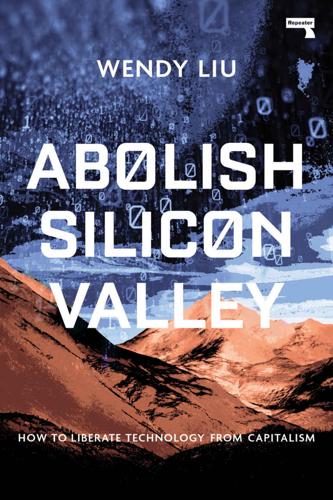
Abolish Silicon Valley: How to Liberate Technology From Capitalism
by
Wendy Liu
Published 22 Mar 2020
This seemed like an altogether worse system than not having debt at all, in a world where education was treated as a social good rather than an individualised investment in one’s earning potential. By October, I learned that I wasn’t the only tech worker suddenly discovering the urgency of progressive politics. Tech Against Trump, a short book published by Logic magazine in 2017, featured stories from fellow tech workers who were startled into caring about politics because of Trump. I discovered the possibility of political action beyond the realm of electoral politics, through building workplace power within a well-trod framework of workers’ rights, and I realised the power of seeing tech workers as workers, with all the political implications associated with the term; even if their job seemed more glamorous than being a coal miner or warehouse worker, they still had grievances which could be addressed through building collective power.
…
I read about labour law and the history of worker activism; I attended protests and joined my first picket line; I started a weekly seminar group on radical politics with speakers ranging from union organisers to cultural studies scholars to left-wing policy makers. I wrote a first-person essay about my disillusionment with the tech industry13, in which I suggested that tech workers should see themselves as workers; it spread like wildfire, and I received emails from people all over the world telling me how much it resonated with them. From across the ocean I watched the surprising wave of tech worker resistance in the heart of Silicon Valley. Tech workers were organising around the identity of worker in a way that I could never have imagined before. Their companies might be worth billions of dollars, but all that wealth wasn’t trickling down to them, and they were carving out an identity separate from that of the people who called the shots.
…
But such trust seemed a little misplaced, given that even minor leaks were treated as career-ending betrayals; I didn’t even want to think about the penalties for whistleblowing or publicly challenging major decisions. It probably goes without saying that none of the software engineers I knew were in a union. What little I knew about organised labour was that unions were for miners and factory workers in previous centuries, not white-collar tech workers in the new information age. Our work wasn’t the same kind of work, and I assumed that meant we didn’t have the same kind of grievances — Google employee complaints were rarely more substantial than resentment over the Meatless Mondays program or the wrong brand of sparkling water in the microkitchens.

Uncanny Valley: A Memoir
by
Anna Wiener
Published 14 Jan 2020
During intermission, we drank plastic cups of white wine and split a bag of candy. Parker was stressed about the erosion of net neutrality. He was working on a campaign to galvanize tech workers, but it wasn’t gaining traction the way he had thought it would. I knew something about net neutrality already, but I let him explain it to me anyway. Nostalgia; old times’ sake. The problem, he said, was that the most important issues facing the tech industry were also the most tedious. It was in their interest to fight, but founders and tech workers didn’t know how to organize. They didn’t have the patience to lobby. They didn’t consider their work political. “They all assume this will just last forever,” he said.
…
As a New Yorker, I had thought I was prepared. I thought I’d seen it all. I felt humbled and naïve—and guilty, all the time. * * * I moved into an apartment in the Castro, joining a man and a woman in their late twenties, roommates who had wiggled their way onto a hand-me-down lease. They were tech workers, too. The woman worked as a midlevel product manager at the social network everyone hated; the man as a data scientist at a struggling solar-energy startup. They were both endurance runners; the data scientist kept a road bike in his bedroom. They had no body fat. They had no art in the apartment, either.
…
Photos of the CEO and my coworkers voluntarily participating in a fear-based endurance event near Tahoe, a massive obstacle course where they swam through dumpsters of ice water and plowed across muddy fields while being administered electric shocks by former Division II athletes. Photos of me, modeling the company T-shirt, thick-necked and grinning. My friends were hardworking and committed, but their vocations were poorly compensated, and against that rubric their life choices were wholly unimpressive. They were the sort of people some tech workers looked down on for not contributing meaningfully to the economy, though the derision cut both ways—if anyone our age had ever introduced himself as an entrepreneur, my friends would have laughed themselves into fits of smug superiority. In any case, my friends’ world was sensuous, emotional, complex.
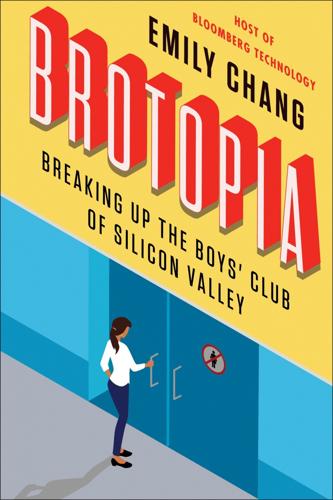
Brotopia: Breaking Up the Boys' Club of Silicon Valley
by
Emily Chang
Published 6 Feb 2018
Some, devoted entirely to sex, may be drug- and alcohol-free (to encourage safety and performance) and demand a balanced gender ratio. Others are very heavy on drugs and women and usually end in group “cuddle puddles,” a gateway to ever-so-slightly more discreet sexual encounters. The path by which women are lured into these sex parties differs. One female tech worker told me she fell into a high-flying, open-minded crowd after attending a party for the Bravo reality show about Silicon Valley. “I was invited to some villa in the city, I had just graduated from college, and it sounded cool and glamorous,” she said. That took her on a series of unexpected adventures, including a sex party where several tech founders and engineers were in attendance and food was being served off the bodies of naked women.
…
Ultimately, this entrepreneur got so fed up that she moved herself and her start-up to New York and left Silicon Valley for good. The women who do say yes to these parties rarely see a big business payoff. “There is a desire to be included and invited to these kinds of things and sometimes it felt like it was productive to go and you could get ahead faster by cultivating relationships in this way,” one female tech worker told me. “Over time, I realized that it’s false advertising and it’s not something women should think is a way to get ahead. It’s very risky—once you’re in that circle, once you decide you want to play the game, you can’t back out. If you really believe that’s going to get you to a serious place in your career, that’s delusion.”
…
HACKING MONOGAMY Remember Susan Fowler, the former Uber engineer who blogged that her manager brought up his nonmonogamous relationship as a way to make a pass at her over the internal company chat system? It’s worth repeating what she wrote in her viral essay: “He was in an open relationship, he said, and his girlfriend was having an easy time finding new partners but he wasn’t.” Open and polyamorous relationships—like the one Fowler’s manager described—are on the rise among many tech workers in Silicon Valley but not working out to everyone’s satisfaction. As Fowler experienced, this new landscape of nonmonogamous dating can infect the workplace with varying results. Uber’s response seemed to suggest that the manager’s invitation to be part of his open sex life was not a big deal.

The New Geography of Jobs
by
Enrico Moretti
Published 21 May 2012
If an overabundance of software jobs creates an excess demand for software engineers in a particular city at a particular time, engineers from all over the country will flock to that city and even out demand and supply. Software engineers tend to be young, well educated, and foreign-born—three groups with particularly high mobility. During the dot-com boom of the late 1990s, there was an enormous demand for high-tech workers in Silicon Valley as hundreds of well-financed startups scrambled to hire new employees, and hundreds of thousands of high-tech workers moved there from all over the United States. During the bust that followed, demand collapsed, and hundreds of thousands moved away. But if the ratio between employers and engineers is the same in San Francisco, Lincoln, and Copenhagen, what attracted Kiel Oleson and Mikkel Svane to San Francisco?
…
Attracting a new scientist, software engineer, or mathematician to a city increases the demand for local services. This in turn means more jobs for cabdrivers, housekeepers, carpenters, nannies, hairstylists, doctors, lawyers, dog walkers, and therapists. These local service workers cluster around high-tech workers, supporting their personal needs. In essence, from the point of view of a city, an innovation job is more than a job. To see how this multiplier effect works in practice, let me introduce you to a small-business owner named Tim James. James is a bookbinder in San Francisco. His clients are mostly local residents and local businesses, so he is clearly part of the non-traded sector.
…
Although James’s shop is definitely low-tech, the performance of his business over the years closely tracks the ups and downs of the NASDAQ, which in turn closely tracks the performance of high-tech firms in San Francisco. James’s business soared during the late 1990s, the dot-com boom years. During that period, high-tech workers flush with cash filled local restaurants and bars, built new houses, and gathered in local gyms, thus vastly increasing the incomes of local service workers, including bookbinders. To keep pace with the rising demand for his products, James hired three new employees and raised everyone’s wages.

How to Kill a City: The Real Story of Gentrification
by
Peter Moskowitz
Published 7 Mar 2017
It also highlighted a huge philosophical gap that’s at the crux of gentrification: the kids believed that because they’d been in the community longer, because this was their routine, because they were on the field first, they had a right to play soccer there. The tech workers believed that because they’d purchased a ticket to the field, it was theirs. In the minds of the tech workers, it seemed, everything was a commodity—not just tacos and apartments, but the city itself. They had the technological access, the know-how, and the money to buy it. The kids did not. This mentality is what New York–based writer and activist Sarah Schulman has called “the gentrification of the mind.”
…
in New Orleans, things seem to be leveling off: Jennifer Larino, “New Orleans–Area Construction Contracts Drop in May,” Times-Picayune, June 27, 2014. Silicon Valley lost more workers than it gained: Georgia Wells, “Silicon Valley Residents Leave for Greener Grass, Cheaper Housing,” Wall Street Journal, March 3, 2016. The share of tech workers living in the Bay Area: Ashley Rodriguez, “Tech Workers Are Increasingly Looking to Leave Silicon Valley,” Quartz, February 29, 2016. Index absentee homeownership, 169–170 Adams, Eric, 208 affordable housing, 29, 144. See also public housing demolition of, 52 lack of government support for, 21, 134, 169, 179 land banking and, 211 in New Orleans, 29 in New York City, 145, 169, 173, 179–180, 190, 199–200, 203–204, 212 racial segregation and, 110 in San Francisco, 131–134=135 SROs as, 135 Airbnb, 61–62, 134, 136, 211 Angotti, Tom, 210 Aristil, Tim, 129 Atlantic Yards (Brooklyn), 174, 202 Back to the City Conference, 32 Baker, Richard, 53 Baldwin, James, 168 ballot initiatives, 211 Beame, Abraham, 191–192 Berlin, 142–143, 184, 214 Berni, Ryan, 43 Bigard, Ashana, 19–23, 26–30, 64 Bing, Dave, 83 Black Lives Matter movement, 214 Blanco, Kathleen, 18, 26, 48–49, 50 de Blasio, Bill, 144, 170, 175, 187–188, 202–203 gentrification and, 201 zoning laws and, 190 Bloomberg, Michael, 41, 169–170, 179, 201–204 Bolaños, Annabelle, 131, 144, 148 Boston, MA, 107 Boyd, Alicia, 198–200, 207, 210 Brash, Julian, 215 Bratton, Bill, 175 Brinkley, Kenny, 103–104 Broder & Sachse, 74, 76 “broken windows” policing, 175 Brooklyn, NY, 8, 176–180, 197–198, 217.
…
A few months before that, Jimmie was walking behind a white man near Dolores Park, a gentrification hotspot a few blocks from Joe’s parents’ house, when the man turned to look at Jimmie and, presumably fearing a robbery, ran through the park and right through an active set of sprinklers, soaking himself. Jimmie’s view of these kinds of people is surprisingly sympathetic: he said that if he had as much money as they do, he’d probably be doing the same thing, living in condos and running from black people. One activist told me he actually feels bad for the tech workers who’ve descended on the city: they pay previously unheard-of sums for small apartments, get shuttled in buses to Palo Alto at 7:00 a.m. and back home at 6:00 p.m. (and often work through the night), take an Uber to whatever restaurant they might be eating at that evening, and then repeat the process the next weekday.

Work Won't Love You Back: How Devotion to Our Jobs Keeps Us Exploited, Exhausted, and Alone
by
Sarah Jaffe
Published 26 Jan 2021
The wannabe Zuckerbergs are their own kind of gig worker, scrambling individually to make a buck, just on a grander scale. 41 Rather than leave to become startup founders, some tech employees have instead taken a page from the Tesla factory workers, or indeed, from the workers who serve them those catered lunches: they’re organizing. The Tech Workers Coalition (TWC) began with an engineer and a cafeteria worker turned organizer who challenged a few of the shibboleths of Big Tech—namely, the idea that different kinds of workers have no interests in common, and the assumption that the programmers have more in common with the Zuckerbergs of the world than they do with the working class. It built slowly for a while, and then, after Trump’s election in 2016, a burst of action drew many new recruits, both to the TWC and to Tech Solidarity, a group begun to help tech workers find ways to act on their anger.
…
Every person who walked out today is an owner, and the owners say: Time’s up.” 46 That organizing was followed by demands, in the summer of 2020, that Google end its contracts with police departments. Tech workers joined in solidarity with protesters across the country, calling for defunding and abolishing policing after a Minneapolis officer killed George Floyd. A letter signed by more than 1,600 Google employees read, in part, “Why help the institutions responsible for the knee on George Floyd’s neck to be more effective organizationally?” Amazon programmers, meanwhile, had been organizing to support the company’s warehouse workers, protesting their dangerous working conditions during the COVID-19 pandemic. In both cases, the tech workers were taking their lead from those on the front lines. 47 Suddenly the tech industry no longer seemed so impenetrable.
…
Let the coder wear his “RESIST” button to the Pentagon, let the developers play games on their work machines, then they’ll be happier to do their work. These “digital artisans,” as Ross called them, were made to feel that they had a level of control over the machines. But unlike the original artisans, whose tools were theirs to control, the tech workers were still laboring for a big employer pocketing the profits. After all, the original Luddites didn’t break machines because they opposed technology, but because the technology was designed to deskill them and make them obsolete. The fun-loving tech workplace, already beginning to be stocked with foosball tables and other games to play, made the programmers feel secure that they were powerful and could never be replaced.

Road to Nowhere: What Silicon Valley Gets Wrong About the Future of Transportation
by
Paris Marx
Published 4 Jul 2022
However, just as the World’s Fair showed only the positive side of the automotive future, the tech industry’s visions also glossed over many problems, including the key question of whether they could ever be properly realized. As Musk received high praise, Tesla workers were suffering with high injury rates, while his green vehicles had to rely on a dirty mineral supply chain. Uber was embraced by tech workers and the journalists who gave it such good press, but in reality cities were swamped with new vehicles and Uber’s driver workforce was exploited. Meanwhile, Google’s self-driving team had internal problems, and as time passed it became clear that it placed far too much faith in the technology—a common theme not just in the present, but throughout the long history of the innovations chronicled in this book.
…
Even as Kalanick and other ride-hailing executives made bold promises for the future they claimed to be ushering in—one of shared mobility instead of car ownership that would ostensibly solve congestion and many other transport problems—the reality was almost the complete opposite. San Francisco is the urban core of Silicon Valley, and unsurprisingly one of Uber’s largest markets. The tech workers of the Bay Area are among the biggest users of the app-based solutions they create, since they exist to solve what they deem to be problems or hinderances in their own lives. So, if Uber was reducing traffic, we would naturally expect to see less congestion in San Francisco—but that is not what researchers have found.
…
Instead, they are people who could easily drive, be driven, or hop in a taxi if they did not want to walk, cycle, or take transit. But those options were not cheap or convenient enough, so they had to blow up the existing system and regulatory framework to serve themselves. Yet, like with the jitneys and the taxis of the 1930s, this is not just a story about the customer or the street. There are also drivers involved; if tech workers and their bosses have been the beneficiaries of Uber, it is the people driving them around who have suffered the consequences. Ride-hailing companies claim their workers are not equivalent to taxi drivers, and so should not be covered by the same rules and regulations even though they provide the same service.

Silicon City: San Francisco in the Long Shadow of the Valley
by
Cary McClelland
Published 8 Oct 2018
The Intel fight had such a huge impact: we were so loud and public about what was going on that people were finally able to hear us. It struck people: gave them a sense of what was happening behind the scenes, made them see what wasn’t so visible. It has been amazing to meet some of them, to share my story, and to see tech workers connecting with us. The other day at Facebook, we needed some show of strength and power to help move the company, because it was kind of at a standstill. So, we decided to have the tech workers come in and stand in the background, just to show the company, Hey, we support these cafeteria workers too. We stand with them. And we want to see them get better benefits. My optimistic self is hoping and praying that there is gonna be a lot more of us fighting that fight—more people who can find their voices and be able to say, “I want a union.”
…
You have people who come here and work in tech, who live in a condo, maybe been here for about a year, and never meet someone who grew up here. The flip side of that is you have people who work in the local taqueria, or they work as a bus driver. They’re born and raised here, have three kids here, and they’ve never met a tech worker. I don’t want to isolate those two groups, but that tends to be the conversation nowadays. Someone says, “You know what? I make a difference. I have five employees. I pay them. I pay my taxes. I pay business taxes. And I contribute every time I go out to eat dinner, every time I use my dry cleaner.”
…
Activists flooded City Hall to urge compliance with Prop M. There were protests on a weekly basis, urging commissioners not to vote a certain way, asking the board to get involved. It was exciting, because you could see the opposition was real. Fast-forward to now, and it’s totally different. Because of Wi-Fi, tech workers can work down the peninsula yet live in San Francisco. They can board a bus and work during their commute each way. So you can’t keep track of workers—for the purpose of calculating how much office space to build, how much housing is needed, how much tax revenue should be received. That’s why everyone is confounded: this isn’t happening within city jurisdictions anymore.

The People vs Tech: How the Internet Is Killing Democracy (And How We Save It)
by
Jamie Bartlett
Published 4 Apr 2018
There are two worlds in Silicon Valley, and they barely ever meet. There’s the exciting start-up open-plan offices, with beanbags, table football, TED Talks and flip-flops, where the region’s half a million tech workers can expect to earn on average well over a hundred thousand dollars a year. (For the biggest companies, the median salary is higher still.) Mostly under 40, they want to live in nearby bustling San Francisco, since Silicon Valley can resemble The Stepford Wives. Each morning, thousands of tech workers hop on private, Wi-Fi-enabled coaches from one of the dozens of pick-up points in San Fran’s increasingly gentrified streets, and head down Highway 101 into Menlo Park (for Facebook), Sunnyvale (for Yahoo) or Mountain View (for Google).
…
Alongside it, though, is another world, inhabited by the people who are left behind in the mad rush towards progress: the ignored women in tech start-ups who complain about misogyny, the Uber drivers who can only afford to live 70 miles away and have to work on zero-hour contracts, the long-time residents who are turfed out so their landlords can rent out their homes on Airbnb. It’s a place where minorities struggle on low-wage service jobs, serving the largely white affluent tech workers. The median house value in both San Francisco and Silicon Valley is now around a million dollars, and the average rent is over three thousand per month for a two-bedroom flat: beyond the reach of almost anyone but tech workers. (The average salary in San Francisco is $46,000, and less if you don’t work for Facebook, Google, etc.) In one of the richest cities in America, 15,000 registered homeless people – one of the highest numbers per capita in the country – struggle on, often with serious mental health and drug addiction problems.
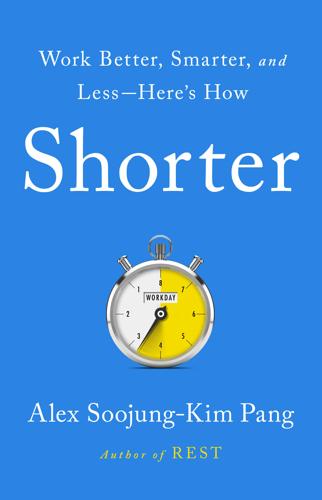
Shorter: Work Better, Smarter, and Less Here's How
by
Alex Soojung-Kim Pang
Published 10 Mar 2020
On Henrik Stenmann, coaching, and evolution, see Mathilde Fischer Thomsen, “Virksomhed har 4-dages Arbejdsuge: ‘Vi Passer på Vores Medarbejdere,’” TV 2 Lorry, February 10, 2017, www.tv2lorry.dk/artikel/virksomhed-har-firdages-arbejdsuge-vi-passer-paa-vores-medarbejdere; “Her er Hemmeligheden Bag en 4-dages Arbejdsuge,” StepStone, February 21, 2017, www.stepstone.dk/virksomhed/videncenter/hr-og-rekruttering/her-er-hemmeligheden-bag-en-4-dages-arbejdsuge?lang=en. On tech workers’ complaints about leadership, see “Tech Workers Say Poor Leadership Is Number One Cause for Burnout,” Ladders, October 30, 2018, www.theladders.com/career-advice/tech-workers-say-poor-leadership-is-number-one-cause-for-burnout; on entrepreneurs and coping, see M. A. Uy et al., “Joint Effects of Prior Start-Up Experience and Coping Strategies on Entrepreneurs’ Psychological Well-Being,” Journal of Business Venturing 28 (2013): 583–597, www.mawder.com/wp-content/uploads/2017/08/2013JBV.pdf.
…
For a few weeks in late 2016, after Pursuit Marketing moved to a four-day workweek, Lorraine Gray noticed a few workers were still coming into the office on Fridays for an hour or two, then disappearing. She soon found out why. “They hadn’t told their wives about the four-day week,” she says, “so they were coming in, doing a few hours, going to the pub together, then going home at five.” The story illustrates an important point: lots of us have friends at work. In a 2018 survey of US tech workers, 60 percent of female respondents and 56 percent of male respondents said that a coworker was one of their best friends. And while work helps us make friends, friends help us work better. Having close friends among your colleagues makes you happier and more engaged with your work, boosts your personal productivity, and improves your ability to cooperate with others on difficult challenges or during trying times.
…
The company’s sales grew substantially after she adjusted her nail polish formula so observant Muslim women could wear it—a change she made after a conversation with a customer about how conventional nail polishes are impervious to water and oil. “I really get to think things through” on her days off, and that gave time for the idea of water- and oil-permeable polish to incubate. (That kind of clarity is good for leaders and companies, but also for the health of workers. In a 2018 survey of tech workers, “poor leadership and unclear direction” was the top cause of burnout.) Taking Wednesday afternoons off also helps Rosie Warin “be strategic and creative and calm and lead the business in a way that’s created a lot of success for us.” The habit of building free time into her day, recognizing the value of rest, and taking rest more seriously provides more time to think strategically and creatively.

Blood in the Machine: The Origins of the Rebellion Against Big Tech
by
Brian Merchant
Published 25 Sep 2023
And you’ve got to indicate to the people who run it, to the people who own it, that unless you’re free, the machine will be prevented from working at all.” The economist William Beveridge, an architect of England’s modern welfare state, was influenced by Charlotte Brontë’s depiction of the Luddite struggle—his 1944 report, “Full Employment in a Free Society,” is subtitled “Misery generates hate.” In 1982, a tech worker going by the pseudonym Gidget Digit wrote a paean to technological sabotage in an article for Processed World, “Sabotage: The Ultimate Video Game”: “What office worker hasn’t thought of dousing the keyboard of her word processor with a cup of steaming coffee [or] hurling her modular telephone handset through the plate glass window of her supervisor’s cubicle,” Considering the enduring popularity of the scene in Mike Judge’s 1999 film Office Space, where workers take out their pent-up aggression against ignorant bosses, layoffs, and corporate drudgery on a copy machine, the answer is likely “very few.”
…
“We have ten to twelve seconds to make a business decision that could take minutes or hours. We need information. They’re not showing you any information other than your location to go pick up.” And they need fair and transparent pay, of course. “Proper compensation, that’s number one.” Another driver, a tech worker and organizer, developed an automated tool of his own to help drivers apply for lost back pay in a system that treated rideshare drivers as pieceworkers. “The form assumes that you do piecework, like picking strawberries. Which makes it brain-breaking to fill in these forms.” He’d made a spreadsheet that a worker could easily use “to fill in the three-page wage time form, to get the overtime business expenses, to fill it out automatically,” even to help input rest breaks and estimate damages.
…
If Uber keeps pushing them down, if the government ignores them, if every party to the growing plight fails to issue them redress—then it would be only reasonable to expect that the app-based workers will only continue to rise in number as the latest great comet gathers steam. Even a Luddite-style uprising is not out of the question. THE NEW LUDDITES “We need a Luddite revolution,” Ben Tarnoff, a tech worker and the founder of Logic magazine, declared in the Guardian in 2019. Today, amid the normalization of Uber and Lyft, the domination of Amazon, the rise of AI-as-a-service startups, and the percolating distrust in tech companies, a growing number of critics, academics, organizers, and writers are explicitly endorsing the Luddites and their tactics.

Listen, Liberal: Or, What Ever Happened to the Party of the People?
by
Thomas Frank
Published 15 Mar 2016
The Obama administration’s Justice Department came into office promising stern action against corporate cartels that fixed prices, which is precisely what the Silicon Valley Techtopus seems to have been doing with tech workers; an official from the Antitrust Division had even announced in a 2009 speech that “the Division has long advocated that the most effective deterrent for hard core cartel activity, such as price fixing, bid rigging, and allocation agreements, is stiff prison sentences.”23 Not this time. When the Justice Department learned about the conspiracy to suppress tech workers’ wages in 2010, it did just about the same thing it had done with the “Too Big to Jail” banks: it filed a civil suit and boldly extracted from the tech companies in question … a promise not to do it again, for five years.
…
It is a matter of legal record that, for years, the CEOs of Apple, Intel, Google, Pixar, and other Silicon Valley firms operated something very much like a cartel against their own employees. In a scandal that journalists now call “the Techtopus,” these worthies agreed to avoid recruiting one another’s tech workers and thus keep those workers’ wages down across the industry. In 2007, in one of the most famous chapters of the Techtopus story, the famous innovator Steve Jobs emailed Eric Schmidt, demanding that this CEO and friend of top Democrats do something about a Google recruiter who was trying to lure an employee away from Apple.
…
When the Justice Department learned about the conspiracy to suppress tech workers’ wages in 2010, it did just about the same thing it had done with the “Too Big to Jail” banks: it filed a civil suit and boldly extracted from the tech companies in question … a promise not to do it again, for five years. (The affected tech workers had more success on their own, filing a class-action lawsuit against four of the big Silicon Valley companies; it was settled for $415 million in 2015.)24 Let’s look again at Uber, the machine for inequality, which has had a damaging effect on many people who drive taxis for a living. It also happens to be a clever innovation. This has made it a basic political test for Democrats: Should they support the company with its ingenious software, or the working people whose livelihoods it threatens?
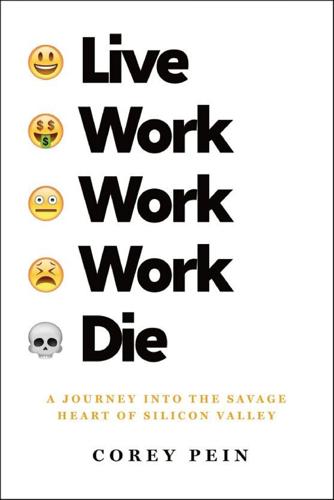
Live Work Work Work Die: A Journey Into the Savage Heart of Silicon Valley
by
Corey Pein
Published 23 Apr 2018
The Condo Hackers were all immigrants or the children of immigrants, and therefore accustomed to getting jerked around. They were also too busy to raise a fuss. They rarely stopped working, even when drinking. The office always followed them home. They fancied themselves budding entrepreneurs, but they were chiefly migrant laborers with MacBook Pros. Like thousands of other tech workers, the foreign-born among them had entered the country on H-1B “specialty occupation” work visas conditional upon their continued employment. Like me, they each had a startup idea. Unlike me, they had professional training, exceptional in-demand skills, and the potential to one day earn a living wage.
…
However bad the boom was for thousands of long-term San Franciscans forced out by high rents, it at least inspired the city’s spraycan artistes. Otherwise sterile yuppie outposts became canvases for elaborate Chicano-style murals depicting the city’s working-class purge. The murals were a neighborhood fixture, but frequently updated, and so they, too, began to depict the Man’s new manifestations, with tech-worker shuttle buses and condo towers surrounded by the righteous masses. Every cloying marketing slogan was subject to petulant revision by the black marker brigades. A few sarcastic strokes improved the sign outside an ostensibly charitable “economic development corporation” in the Mission District, which was buying up apartments around the neighborhood to renovate as offices: The Mission longtimers had no sympathy for robot butlers.
…
and you had a deeply unfashionable job like, say, writer, it behooved you to say “I deliver eyeballs like a fucking ninja.” In my former life I’d have sooner gouged my own eyeballs out than describe myself in such a way, but in postrecession, postboom, postwork, postshame San Francisco, we all did what we had to do to survive. III Gigs Make Us Free I envied the tech workers even as I pitied them. The paychecks weren’t bad at all, and the benefits were downright Dionysian. Their industry was the alien invader that consumed everything it touched. Its radioactive presence may have sterilized the outside world, stifling organic life in all forms, but inside the warm embrace of the mother ship, the worker drones had comfort, stimulation, and plenty.

Super Pumped: The Battle for Uber
by
Mike Isaac
Published 2 Sep 2019
He wanted a cool job, perhaps at one of the startups whose apps populated his iPhone home screen. One of those was Foursquare, a buzzy, location-based mobile check-in startup that had cache among the Valley elite. He tried applying through the front door, but was quickly turned down; Foursquare was inundated with offers from eager would-be tech workers. Instead of giving up, Graves had a better idea. On nights and weekends, he started calling around bars and restaurants in Chicago, pitching owners and managers to sign their businesses up for the Foursquare app. By pretending that he actually worked for the company, Graves managed to sign up thirty new customers in the Chicago area.
…
Reports that Uber employees were hailing Lyfts and then trying to recruit the driver were met with disgust—something that confused Kalanick and Uber employees. Business, they thought, was supposed to be a competition. Logan Green, Lyft’s CEO, was a good tactician. But Kalanick outmaneuvered his rivals every single time. And he felt fine trouncing his competition. One prime example: Kalanick’s network of spies in the Valley—mostly made up of other tech workers and venture capitalists—picked up early rumors of Lyft’s new carpooling service. To get the jump on Lyft, Kalanick tasked his chief product officer, Jeff Holden, to drop everything and copy the carpooling feature immediately. Uber announced the impending launch of “Uberpool,” a carpooling feature, mere hours before Lyft announced the product it had invented.
…
But while the election cast a pall over tech in general, the night also served as the turning point for Uber in particular. The company’s troubles did not stem from the election, of course, nor did they cause the result, but they were soon caught up in the chaos that followed. The maelstrom marked the beginning of one of the worst twelve-month periods in American corporate history. When the tech workers awoke on the morning after the election, their mental image of themselves—as bastions of youth and democratic idealism, helping to create a more efficient, healthier, more connected country—had been shattered. Donald John Trump was the president of the United States. The thrice-married real estate mogul who spent the last decade taking birther-conspiracy potshots at Barack Obama on Twitter was now the commander in chief.

The Contrarian: Peter Thiel and Silicon Valley's Pursuit of Power
by
Max Chafkin
Published 14 Sep 2021
advanced artificial intelligence: Steven Levy, “Inside Anduril, Palmer Luckey’s Bid to Build a Border Wall,” Wired, June 11, 2018, https://www.wired.com/story/palmer-luckey-anduril-border-wall/. posted the same message: Kari Paul, “Tech Workers Protest Data Mining Firm Palantir for Role in Immigrant Arrests,” The Guardian, May 13, 2019, https://www.theguardian.com/us-news/2019/may/13/tech-workers-palantir-immigration-protest-github. cut ties with it: Tom McKay, “Dozens Arrested at #JewsAgainstICE Protest at Amazon Store in NYC,” Gizmodo, August 11, 2019, https://gizmodo.com/dozens-arrested-at-jewsagainstice-protest-at-amazon-st-1837156701.
…
In August 2000, The Guardian wrote that Flooz had a chance of realizing “Hayek’s dream of companies challenging governments for the right to issue money,” referring to Friedrich Hayek, the great libertarian economist. Those two companies wouldn’t run into serious trouble until the end of the year. Few noticed the crash, in fact, until the fall, when the first dot-coms started running out of money. Pets.com announced, suddenly, that it was insolvent, the launch parties grew scarcer, and tech workers began nervously checking a new parody news site, FuckedCompany.com. But Thiel had noticed. In fact, almost as soon as he’d raised the $100 million and just before the bubble began to burst, he disappeared. He stopped coming to the office and cut off regular contact with his staff and the board.
…
The company had also secretly helped create a second database, the Analytical Framework for Intelligence, which creates individual risk scores that the Customs and Border Protection agency uses to evaluate travelers and immigrants. These disclosures—combined with Thiel’s support of Trump—generated intense outcry, first within Silicon Valley and then beyond it. In January, the Tech Workers Coalition, an activist group, had staged a march in front of Palantir headquarters to protest the company’s work with Trump. Two months later, after the FALCON story broke, a group of protestors showed up at Thiel’s home in San Francisco carrying signs that read: palantir: wake up! you are complicit, don’t build software for mordor and peter thiel is a vampire.

The New Class Conflict
by
Joel Kotkin
Published 31 Aug 2014
Robert Marquand, “Fast, Cheap, and in English, India Clerks for the World,” Christian Science Monitor, April 30, 1999. 131. Economic Policy Institute, “EPI Analysis Finds No Shortage of STEM Workers in the United States,” press release, April 24, 2013, http://www.epi.org/press/epi-analysis-finds-shortage-stem-workers; Joshua Wright, “Supply of Tech Workers Greater Than Estimated Demand,” New Geography, September 1, 2011, http://www.newgeography.com/content/002411-supply-tech-workers-greater-than-estimated-demand. 132. Sarah McBride, “Special Report: Silicon Valley’s Dirty Secret—Age Bias,” Reuters, November 27, 2012, http://www.reuters.com/article/2012/11/27/us-valley-ageism-idUSBRE8AQ0JK20121127. 133. Andrew S.
…
For this group, the rest of society, he suggested, exists only “as images and stereotypes.”5 Progressive theorists, such as Ruy Teixeira, have suggested that, in the evolving class structure, the traditional middle and working classes are of little importance compared to the rise of a mass “upper-middle class” consisting largely of professionals, tech workers, academics, and high-end government bureaucrats.6 The Economic Decline of the Yeomanry All this suggests what could be seen as the proletarianization of the Yeoman class. In the four decades since 1971, the percentage of those earning between two-thirds and twice the national median income has shrunk, according to Pew, from over sixty to barely fifty percent of the population.
…
The 1099 Economy: The Rise of a New Yeomanry? There are promising signs that many in the Yeomanry are seeking to establish something of a digital version of the rural homestead. Encompassing people writing apps, doing technical consulting, and working in the information sector, the numbers of self-employed tech workers have surged between 2005 and 2010. The percentage of such employees in information sectors grew 15 percent during this period.85 Tech is not the only area where the 1099 economy is expanding. According to the U.S. Census Bureau, there were 21.4 million self-employed Americans in 2008, and recent data from EMSI suggests that the figures might be even higher.
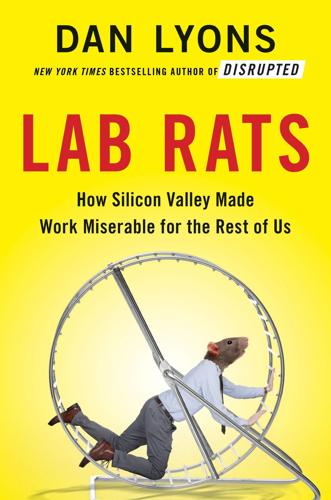
Lab Rats: How Silicon Valley Made Work Miserable for the Rest of Us
by
Dan Lyons
Published 22 Oct 2018
“Appalachian Transition in Action.” Social Enterprise Alliance, January 17, 2017. https://socialenterprise.us/2017/01/17/appalachia-maced. Epilogue: Can Zebras Fix What Unicorns Have Broken? Coren, Michael J. “Silicon Valley Tech Workers Are Talking About Starting Their First Union in 2017 to Resist Trump.” Quartz, March 24, 2017. https://qz.com/916534/silicon-valley-tech-workers-are-talking-about-starting-their-first-union-in-2017-to-resist-trump. “FAQs Purpose Economy.” Purpose. http://purpose-economy.org/en/faqs/. Le, Phuong. “Seattle Divided as Leaders Halt Tax on Companies Like Amazon.” Associated Press, June 13, 2018. https://apnews.com/606ff14719bb4cf4a397cf2d79008992.
…
No one in their right mind believes this is a healthy way to run a company. Job Insecurity and Your Brain Anim Aweh sees the victims of these Silicon Valley sweatshops in her practice as a therapist in the Bay Area. “Some people here are making a ton of money, but their work is demanding,” says Aweh, a twenty-seven-year-old social worker who counsels young tech workers. She works a lot with people of color, who face unique challenges in notoriously undiverse Silicon Valley. “They’re told to work long hours. They’re competing against one another. It’s a rat race. One woman I work with said, ‘The expectation is that you should just work hard, not work smart. Just do, do, do, do—until you can’t do anymore.’”
…
I don’t think you have what it takes! People in Silicon Valley are not worried about workaholism. In fact, they celebrate it. Some think young techies aren’t working hard enough. Michael Moritz, a famous venture capitalist at Sequoia Capital, recently wrote a piece in the Financial Times urging American tech workers to keep up with their counterparts in China, who work fourteen-hour days, six days a week, while taking hardly any vacation time and seeing their kids only a few minutes a day. In the Valley, hustle has become a hot new buzzword. People wear hustle T-shirts, and attend hustle boot camps. Once a year, several thousand people pay $300 each to attend Hustle Con, a conference where expert hustlers teach wannabe hustlers how to hustle—which is in itself a hustle.
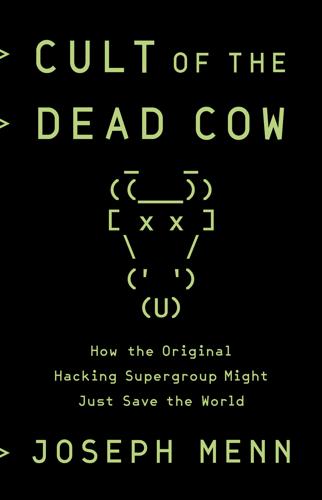
Cult of the Dead Cow: How the Original Hacking Supergroup Might Just Save the World
by
Joseph Menn
Published 3 Jun 2019
The biggest challenge was getting people to the polls. It helped, O’Rourke said, that Texans hate phonies, so he didn’t hide that he opposed Trump’s planned border wall, thought Trump should be impeached, and supported abortion rights, the legalization of marijuana, and gun control, as did most Bay Area tech workers. He was already fighting in the House to overrule Trump’s Federal Communications Commission and restore net neutrality, which kept internet access providers from favoring some content over others. O’Rourke didn’t have to contrast his frankness with Cruz’s flexibility. Everyone there knew the incumbent had declined to endorse candidate Trump after he attacked Cruz’s wife’s looks and suggested Cruz’s father had been involved in John F.
…
Laird moved to the city in 2009 and spent three years there helping the community without pay. He worked on security in the Dalai Lama’s office and helped build up local expertise. Then he spent two more years in Bangalore at an internet policy nonprofit. Hacktivismo inspired hundreds or thousands of individuals and groups. Many had stories like Nathan Freitas’s. A New York tech worker at the turn of the millennium, Freitas first heard about Tibetan repression from concerts headlined by the Beastie Boys. Through a work acquaintance, in the late 1990s he stumbled across a tiny Tibetan group in the Hell’s Kitchen neighborhood that had only one modem and needed assistance setting up an office network.
…
Tristan Harris, a former design ethicist at Google, formed the Center for Humane Technology and warned that Facebook and YouTube had let some of the world’s most powerful instances of artificial intelligence figure out how to keep people watching, and that the answer had been to show outrage and extremism. Rank-and-file tech workers forced Google to drop a contract to provide artificial intelligence for analysis of Pentagon drone footage that could be used in automated targeting, and protests spread through Silicon Valley over tech employers’ contracts with border authorities who separated children from immigrant parents.

Exponential: How Accelerating Technology Is Leaving Us Behind and What to Do About It
by
Azeem Azhar
Published 6 Sep 2021
High-Technology Multipliers, Employment and Wages in Britain’, Research Policy, 48(9), November 2019, 103803 <https://doi.org/10.1016/j.respol.2019.05.012>. 87 ‘Trade Union’, OECD.Stat <https://stats.oecd.org/Index.aspx?DataSetCode=TUD>. 88 Ben Tarnoff, ‘The Making of the Tech Worker Movement’, Logic Magazine, 4 May 2020 <https://logicmag.io/the-making-of-the-tech-worker-movement/full-text/> [accessed 3 April 2021]. 89 Irina Ivanova, ‘Amazon Picks Twitter Fight with Bernie Sanders and Elizabeth Warren amid Union Campaign’, CBS News, 26 March 2021 <https://www.cbsnews.com/news/amazon-bernie-sanders-elizabeth-warren-union-vote/> [accessed 29 March 2021]. 90 Bethan Staton, ‘The Upstart Unions Taking on the Gig Economy and Outsourcing’, Financial Times, 18 January 2020 <https://www.ft.com/content/576c68ea-3784-11ea-a6d3-9a26f8c3cba4> [accessed 12 January 2021]. 91 ‘Table 5.
…
That’s a Problem.’, Business Insider, 10 October 2020 <https://www.businessinsider.com/tiktok-ban-hearings-politicians-senators-know-nothing-about-tech-2020-10> [accessed 12 April 2021] Stoltenberg, Jens, ‘Nato Will Defend Itself’, Prospect Magazine, 27 August 2019 <https://www.prospectmagazine.co.uk/world/nato-will-defend-itself-summit-jens-stoltenberg-cyber-security> [accessed 12 March 2020] Tarnoff, Ben, ‘The Making of the Tech Worker Movement’, Logic Magazine, 4 May 2020 <https://logicmag.io/the-making-of-the-tech-worker-movement/full-text/> [accessed 3 April 2021] Thelen, Kathleen, How Institutions Evolve: The Political Economy of Skills in Germany, Britain, the United States, and Japan (Cambridge, UK: Cambridge University Press, 2004) <https://doi.org/10.1017/CBO9780511790997> Thiel, Peter, ‘Competition Is for Losers’, Wall Street Journal, 12 September 2014 <https://online.wsj.com/articles/peter-thiel-competition-is-for-losers-1410535536> [accessed 9 October 2020] Thurner, Stefan, Peter Klimek and Rudolf Hanel, Introduction to the Theory of Complex Systems (Oxford: Oxford University Press, 2018) <https://www.oxfordscholarship.com/view/10.1093/oso/9780198821939.001.0001/oso-9780198821939> [accessed 19 July 2020] Tisné, Martin, ‘It’s Time for a Bill of Data Rights’, MIT Technology Review, 14 December 2018 <https://www.technologyreview.com/2018/12/14/138615/its-time-for-a-bill-of-data-rights/> [accessed 8 October 2020] Tufekci, Zeynep, ‘YouTube, the Great Radicalizer’, New York Times, 10 March 2018 <https://www.nytimes.com/2018/03/10/opinion/sunday/youtube-politics-radical.html> [accessed 18 October 2020] Turck, Matt ‘The Power of Data Network Effects’, Matt Turck [blog], 2016 <https://mattturck.com/the-power-of-data-network-effects/> [accessed 3 August 2020] UBS, The Food Revolution, July 2019 <https://www.ubs.com/global/en/ubs-society/our-stories/2019/future-of-food/_jcr_content/mainpar/toplevelgrid_1749059381/col1/linklist/link.1695495471.file/bGluay9wYXRoPS9jb250ZW50L2RhbS91YnMvZ2xvYmFsL3Vicy1zb2NpZXR5LzIwMTkvZm9vZC1yZXZvbHV0aW9uLWp1bHkucGRm/food-revolution-july.pdf> Van Reenen, John, and Christina Patterson, ‘Research: The Rise of Superstar Firms Has Been Better for Investors than for Employees’, Harvard Business Review, 11 May 2017 <https://hbr.org/2017/05/research-the-rise-of-superstar-firms-has-been-better-for-investors-than-for-employees> [accessed 2 September 2020] Van Reenen, John, Christina Patterson, Lawrence Katz, David Dorn and David Autor, ‘The Fall of the Labor Share and the Rise of Superstar Firms’, CEP Discussion Paper No. 1482, October 2019 <http://cep.lse.ac.uk/pubs/download/dp1482.pdf> van Zanden, J.
…
Complex technologies – from biotech to artificial intelligence to chip design – need not just one but many specialists working together.29 And only cities can bring them together. Most of the high-tech urban areas in the Exponential Age are living proof of the way talented people from across sectors flock to cities – a process known as ‘agglomeration’. Every year, thousands of tech workers migrate from around the world to San Francisco. As a result, technology companies are willing to shell out for the eye-watering cost of doing business in San Francisco (or London, or Paris) because they are getting the benefit of an incredibly skilled labour pool. Otherwise, they would move to smaller towns or the countryside and enjoy a lower cost of living.

Your Computer Is on Fire
by
Thomas S. Mullaney
,
Benjamin Peters
,
Mar Hicks
and
Kavita Philip
Published 9 Mar 2021
For decades, computing companies have tried to convince all white-collar workers that they were management, or aligned with management, and so did not need to argue with those at the top, or need unions to help press for change. As recent events in the tech industry have shown, nothing could be further from the truth. From Google to Kickstarter, tech workers have begun to see that, if they don’t have a real voice in deciding the direction of the company, they don’t have any control over the harms created by the products they make. As individuals, their voices can be easily ignored, as the Boeing example shows. As a group, however, tech workers—and citizens—have power. As the cases of Project Dragonfly and Project Maven at Google show, worker pushback can shut down projects and save lives. As the Google Walkout showed, until more people speak up it is still more acceptable to pay a sexual harasser millions of dollars to leave than it is to pay women an equal wage or give them equal opportunities to stay.
…
This history is of crucial importance today because it is not that unusual: the British reliance on sexist hiring and firing practices, and on the association of technical work with low-status workers but powerful managerial work with high-status workers, has been a common pattern in the postindustrial West. The manner in which government leaders and industry officials worked together to standardize and codify a gendered underclass of tech workers, and then to later upskill that work once the managerial power of computers became clear, was not evolutionary or accidental. It was an intentional set of systems design parameters intended to ensure that those who held the most power in predigital society, government, and industry continued to hold that power after the “computer revolution.”
…
Contract negotiations in Germany are typically held at the state level between the regional union representatives and the regional representatives of the employer association. 29. “Das Haus und das Werk,” IBM Deutschland (December 1954): 2. 30. “Wir sprechen miteinander,” 1–2; and “Herr Hörrmann über Arbeits-, Lohn-, Produktionsprobleme,” IBM Deutschland (September 1954): 3–4. 31. Jeff J. Roberts, “Tech Workers Will Get Average of $5,770 under Final Anti-Poaching Settlement,” Fortune (September 3, 2015), http://fortune.com/2015/09/03/koh-anti-poach-order/. 32. For further reading, see Sareeta Amrute, Encoding Race, Encoding Class: Indian IT Workers in Berlin (Durham, NC: Duke University Press, 2016). 8 Siri Disciplines Halcyon M.

Futureproof: 9 Rules for Humans in the Age of Automation
by
Kevin Roose
Published 9 Mar 2021
After a few months stuck indoors with screens as our only social conduits, many of us felt a strong pull back to the physical world. Some students stuck taking virtual classes started complaining that they weren’t learning anything or having any fun. White-collar workers confined to their homes began itching to return to the office, where they could more easily collaborate with their teams and advance their careers. (One tech worker I know grumbled that “nobody is getting promoted over Zoom.”) People who had been satisfied with virtual interactions during the pandemic’s early months began flouting social distancing rules in order to eat at restaurants, drink at bars, and attend concerts and church services with their friends.
…
American tech companies like Google and Facebook swooped in to hire some of the company’s workers, and local start-ups and big Canadian companies caught most of the rest. Today, the Waterloo economy is thriving, with a higher median household income and a lower unemployment rate than it had during RIM’s heyday. Part of Waterloo’s quick recovery is related to the fact that many of the laid-off RIM workers were tech workers with in-demand skills. But tech skills don’t explain the entire phenomenon, because RIM’s nontechnical employees also got back on their feet quickly. I spent a week in Waterloo, talking to local government officials, former BlackBerry workers, and community leaders about how the city recovered from BlackBerry’s collapse.
…
We can step into the conversation, learn the details of the power structures that are shaping technological adoption, and bend those structures toward a better, fairer future. Personally, I’m on Team Bagley. I think we have a moral duty to fight for people, rather than simply fighting against machines, and I believe that for those of us who aren’t tech workers, that duty extends to supporting ethical technologists who are working to make AI and automation a liberating force rather than just a vehicle for wealth creation. I call this strategy “arming the rebels,” not because I think resisting technological exploitation should involve violence of any kind, but because I think it’s important to support the people fighting for ethics and transparency inside our most powerful tech institutions by giving them ammunition in the form of tools, data, and emotional support.
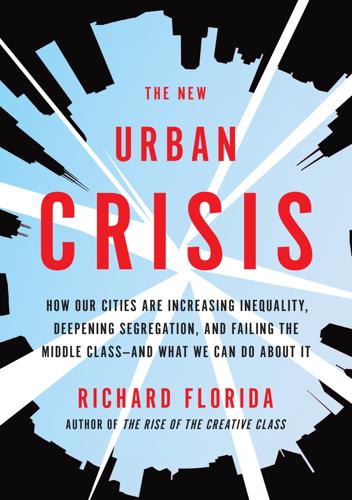
The New Urban Crisis: How Our Cities Are Increasing Inequality, Deepening Segregation, and Failing the Middle Class?and What We Can Do About It
by
Richard Florida
Published 9 May 2016
But even though the vast majority of creatives are not truly wealthy (Byrne, Smith, and Moby excepted), they are relatively advantaged by the standards of most urbanites and most Americans. This becomes abundantly clear when we take into account the amount of money that artists and cultural creatives have left over after paying for housing. In New York, artists and other cultural creatives have, on average, $52,750 left over after paying for housing, less than tech workers ($65,900) and business and financial professionals ($88,770), but nearly three times more than service workers ($17,860). In LA, artists and other cultural creatives have a similar amount left over ($53,760), less than techies ($64,350) and business professionals ($75,870), but three and a half times more than members of the service class ($15,350).
…
But a competitor that managed to avoid sprawl would have real leverage.”20 He was right—and that’s exactly what’s happening today. Still, as technology companies and the techies who work for them head back to the cities, they are increasingly being blamed for the deepening problems of housing affordability and urban inequality. In spring 2014, protests broke out in Oakland against the private buses that shuttled tech workers from their homes in the city’s gentrifying urban core to their jobs in the corporate campuses of Silicon Valley. “You are not innocent victims,” a flyer that was handed out to the bus passengers read. “You live your comfortable lives surrounded by poverty, homelessness and death, seemingly oblivious to everything around you, lost in the big bucks and success.”
…
Two-thirds of San Francisco residents who participated in an April 2014 survey said that techies were “squeezing out others” and making the city less diverse and more exclusive. But nearly three-quarters (73 percent) of them said they believed that tech companies were good for the city, and more than half (56 percent) said the city should continue to nurture and attract them.26 Of course, the migration of high-tech startups and tech workers into urban neighborhoods does put pressure on real estate, and this is especially the case in San Francisco. But tech companies are also huge drivers of innovation, economic progress, jobs, and the much-needed tax revenues that cities can use to address and mitigate the problems that come with them.

Palo Alto: A History of California, Capitalism, and the World
by
Malcolm Harris
Published 14 Feb 2023
That part did not happen, and it’s easy to understand why: You can’t improve the well-being of the working class with the money you get from sabotaging the well-being of the working class. Unfortunately, tech workers used their own products. Crabby platforms grew by tearing up the social foundation, the way hydrolickers carved away at that Placer County mining town until the whole thing was ready to slide down the hill. Airbnb undermined the hospitality industry, and the ride-share companies had the same effect on transportation. Instead of eating big-tip lunches at white-cloth restaurants, tech workers ordered fast-casual from an app, perhaps using one to order, another to pay, and a third to deliver.
…
Servant apps like TaskRabbit and Postmates allowed users to summon contractors for miscellaneous jobs—IKEA bought the former in 2017, and the cannibal crab Uber nabbed the latter in 2020. Other than food and labor, Amazon could deliver the rest, and Bezos was working on those, too. Instead of other people’s pay, tech workers sunk their money into real estate. Silicon Valley home prices doubled.29 The tech workers also reinvested in their own sector via stock options and venture bets, tying capital back up in start-up gambling, where it could subsidize appified low-wage pseudo-luxury services.x The tech-industry concept consultant Venkatesh Rao labeled this rent-a-servant lifestyle “premium mediocre,” and it describes the users of the services courted by the Twitter tax break well: “Premium mediocrity is a pattern of consumption that publicly signals upward mobile aspirations, with consciously insincere pretensions to refined taste, while navigating the realities of inexorable downward mobility with sincere anxiety,” Rao writes.
…
They ended up with two different corporate strategies, and occasionally became business opponents, but they personified the same historical forces. They weren’t serving the public, and they didn’t need approval from clean-shaven authoritative professor-administrators like Fred Terman or military bureaucrats like Bob Taylor, which left them and the cohort of tech workers they hired free to smell bad. (Historian Charles Petersen describes the transition as one from “bureaucratic” to “nerd” masculinity.)41 These repellent young men were the tools that got capital from the crisis of the 1960s to the “greed is good”’80s, and an unwillingness to wash and feed oneself began to seem indicative of programming skill and economic value.
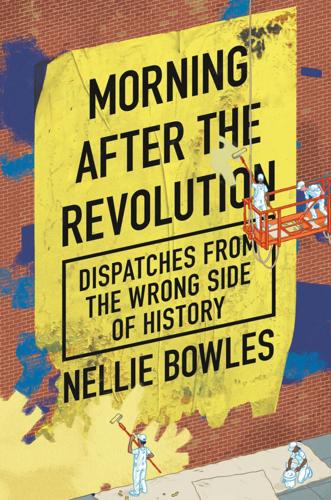
Morning After the Revolution: Dispatches From the Wrong Side of History
by
Nellie Bowles
Published 13 May 2024
Plans for one nineteen-unit development geared toward the middle class were halted in 2022 because, among other issues raised by the neighbors, the building would have increased overall shadow coverage on Dolores Park by 0.001 percent. The cost of real estate hit crisis levels in the 2010s, as ambitious grads from all over the world crammed into the hills to work in the booming tech industry. Soon, there was nowhere for them to live. Tech workers moved into RVs, parked alongside the poor and unhoused. Illegal dorms sprang up. Well-paid young people gentrified almost every neighborhood in town. In 2018, when London Breed was elected mayor at the age of forty-three, she had only just stopped living with a roommate; she couldn’t afford to live alone.
…
Before the school board vote, the last local recall in San Francisco was in 1983. There has not been this level of conflict at farmers’ markets, where dueling signature-gatherers face off across from the organic-dog-treat kiosk, in almost forty years. This is, in part, because until recently many San Franciscans were afraid. If a tech worker complained, they were reviled. If an aging hippie complained, they were a racist old nut. It was easier to blame all of our issues on outsiders—those Silicon Valley interlopers who came in and ruined the city. The drugs, the homelessness, the crime—blame the Google employees who skewed the city’s condo market and brought in their artisanal chocolates, their scooters, their trendy barbers.
…
At least they seemed to accept that it needed fixing. For so long, San Francisco has been too self-satisfied to address the slow rot in virtually all of its institutions. But nothing’s given me more hope than the rage and the recalls. “San Franciscans feel ashamed,” said Michelle Tandler, a local tech worker who’s documented the city’s decline on social media. “I think for the first time people are like, ‘Wait, what is a progressive? . . . Am I responsible? Is this my fault?’ ” San Franciscans are now saying: We can want a fairer justice system and also want to keep our car windows from getting smashed.

Selfie: How We Became So Self-Obsessed and What It's Doing to Us
by
Will Storr
Published 14 Jun 2017
As we drove back to the Rainbow Mansion, I told Jeremy that there was a particular species of tech worker I was especially interested in tracking down. Just as the culture in which we’re suspended forms a generalized ‘perfect self’ for us to compare ourselves to, so every cell of that culture also generates its own specialized iteration of it. In 1943 Jean-Paul Sartre noticed that there was a cultural concept of the perfect waiter just as there are models of the perfect teacher, the perfect pop star, the perfect politician, the perfect parent and the perfect boss. In Silicon Valley there’s a model of ideal self that many younger tech workers aspire to be that’s become significantly influential throughout the West.
…
Workshops based on Esalen programmes were highly popular at the university, having been attended by eight hundred members of the community. These programmes became so successful that funding was received to teach Esalen techniques across the Bay Area at elementary and secondary schools, with more than fifty thousand participants. Esalen would remain popular with tech workers for many years, with one 1985 Esquire story reporting ‘scientists, engineers and entrepreneurs from Silicon Valley’ being regular guests. Such was its lasting influence, Tim O’Reilly, the man who in 2005 christened the internet’s social media phase ‘Web 2.0’, would eventually comment, ‘The internet today is so much an echo of what we were talking about at Esalen in the 70s.’
…
There was a Sunday evening atmosphere; recycling bins, concrete Buddhas and men in shorts with prominent veins riding expensive bicycles. Finally, the train stopped at Sunnyvale, where you alight for Cupertino, home of Apple. I took a taxi up a winding hill to the Rainbow Mansion, a large cream house with a terracotta roof that was now an ‘intentional community’ made up of bright young tech workers. My search for the self had taken me, once again, to the Western world’s edge. Now that I’d landed in the present day, I had the opportunity to meet selves that should be, if the ideas I’d been pursuing were correct, made up of so many of the lives of their ancestors. Being born and raised in the 1980s and 1990s, these were thoroughbred neoliberals, the kinds of people that many of the cultural leaders of our past, from Aristotle to Stewart Brand, via Ayn Rand and her Collective, should in theory recognize and think of as good.
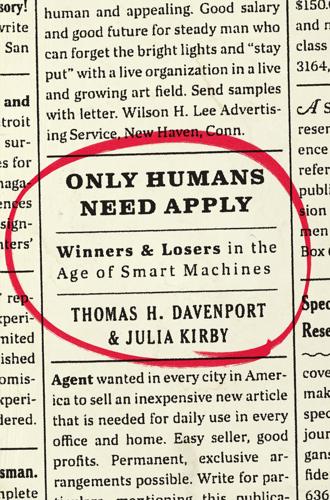
Only Humans Need Apply: Winners and Losers in the Age of Smart Machines
by
Thomas H. Davenport
and
Julia Kirby
Published 23 May 2016
Not only is this poor worker performing a task that could be better done by a machine, but she is gaining no ability to work in any better capacity by doing it. In dramatic contrast, look at the set of policies Finland has used to deal with the dislocation of laid-off tech workers after the failure of Nokia. As the New York Times reports, when Nokia started laying off employees in droves, “politicians started providing government grants, entrepreneurship programs and other training to help the thousands of laid-off tech workers start their own companies.” Beyond that, Finland has encouraged other global companies to open offices there to take advantage of this newly available talent pool, and compelled Nokia to do more than it would have otherwise to support its former employees.
…
John Seely Brown, “Cultivating the Entrepreneurial Learner for the 21st Century,” keynote presentation at the 2012 Digital Media and Learning conference in San Francisco, March 1, 2012. 11. Mark Scott, “After Nokia Layoffs, Tech Workers in Finland Regroup and Refocus,” New York Times, August 9, 2015, http://www.nytimes.com/2015/08/10/technology/after-nokia-layoffs-tech-workers-in-finland-regroup-and-refocus.html. 12. National Trust for Historic Preservation, “HOPE Crew—Hands-On Preservation Experience: Engaging a New Generation of Preservationists,” https://savingplaces.org/hope-crew/#.VjLRoLerTIU. 13.
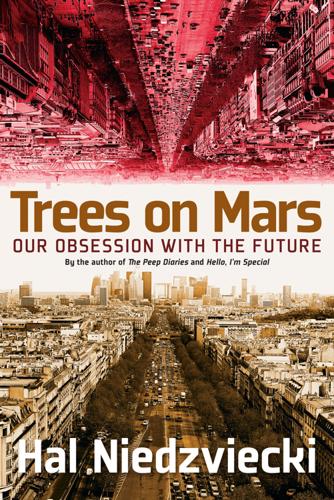
Trees on Mars: Our Obsession With the Future
by
Hal Niedzviecki
Published 15 Mar 2015
“Google: Global Annual Revenue 2014 | Statistic,” Statista, accessed April 15, 2015, http://www.statista.com/statistics/266206/googles-annual-global-revenue/. 33. Mike Swift, “Google Will Hire at Least 6,000 Workers ‘across the Board’ in 2011,” accessed April 15, 2015, http://www.mercurynews.com/ci_17194423?nclick_check=1. 34. Patrick Mcgeehan, “Half of New York’s Tech Workers Lack College Degrees, Report Says,” The New York Times, April 1, 2014, http://www.nytimes.com/2014/04/02/nyregion/half-of-new-yorks-tech-workers-lack-college-degrees-report-says.html. 35. “Where the Jobs Are | Inside Higher Ed,” accessed April 24, 2014, http://www.insidehighered.com/quicktakes/2014/04/23/where-jobs-are#sthash.J4L8nNW5.dpbs. 36. Arlene Dohm and Lynn Shniper, “Occupational Employment Projections to 2016,” Monthly Labor Review, November 1, 2007, http://www.bls.gov/opub/mlr/2007/11/art5full.pdf. 37.
…
Neil Rae, an executive at the tech company Transcom, tells a New York Times reporter that their quest to “fill technical-support positions” has shifted away from college graduates to “kids living in their parents’ basement.” Companies are more and more willing to hire from less prestigious universities and the ranks of the dropouts and disaffected gamers. In New York City, a study estimated that more than half of the city’s 300,000 or so tech workers don’t have a college degree.34 There’s a lot at stake, since shortages seem endemic. A 2014 analysis of available jobs by the Georgetown University Center on Education and the Workforce finds that “the most in-demand jobs are for applications software developers and computer systems analysts.”35 The US Department of Labor predicted that the number one sought-after employee in 2016 will be the Network Systems and Data Communications Analyst.
…
He writes of going on a hunt for someone to answer the question “why, during the decades of the personal computer and the Internet, the American economy has grown so slowly, average wages have stagnated, the middle class has been hollowed out, and inequality has surged?” He poses the question to a wide range of tech workers in the Bay Area and reports that “few of them had given the topic much consideration.” But when pressed for an answer, most brushed it off, wondering “if it was really true” or saying that this was just a temporary blip. Sam Lessin, who at the time was leading Facebook’s “identity product group,” tells Packer that, essentially, people are going to, or perhaps already, need less money because “as communication technology gets less expensive,” we’ll be able to “entertain each other and interact with each other and do things for each other much more efficiently.”

Coders: The Making of a New Tribe and the Remaking of the World
by
Clive Thompson
Published 26 Mar 2019
If they weren’t hiring women, it must be because women just didn’t have enough in-born logic or grit. And on top of that were actual bursts of flat-out harassment. One coworker called her a “cunt” to one of her friends; and although Google took some action in response to her complaint, in the end, she didn’t feel they took it seriously enough. Then there was a tech worker for another firm who started feeling her up on a flight to a conference—“He was treating me like a part of the in-flight entertainment,” Huston says. And there was the coder from another Google office who would stalk young female interns so persistently that a female Googler sent a memo to the women in her office warning others about him when he was traveling to visit: “Please stay away from him.”
…
(Across Slack’s worldwide offices, women were 34.3 percent of those in technical jobs; in their US offices, 12.8 percent were from “underrepresented racial and/or ethnic backgrounds”; and 8.3 percent identified as LGBTQ. Later, she moved on to be a senior engineering manager for Patreon.) Levels of harassment are high, too, for LBGTQ employees in tech. When the Kapor Center for Social Impact surveyed tech workers to find out why they’d voluntarily left a tech job, 24 percent of LBGTQ workers said they’d experienced “public humiliation or embarrassment” at work. They were also the group in the survey that reported the highest rates of being bullied, at 20 percent. (Fully 64 percent said bullying “contributed to their decision to leave.”)
…
Other coders at Google posted in support of him on their internal forums. Nearly every female coder I spoke to had stories of coworkers citing the same research Damore did, dilating on how nature has decreed rigid male and female roles. When Kelly Ellis, that former Google coder, tweeted about sexual harassment she’d experienced, a tech worker emailed her to explain it was all evolution at work—“We have hundreds of thousands of years of evolutionary history to deal with. Men are wired to approach you as an egg donor first.” There are pretty clearly self-serving reasons why some programmers prefer to believe that biology explains why men are employed in coding far more than women.

Kitten Clone: Inside Alcatel-Lucent
by
Douglas Coupland
Published 29 Sep 2014
It’s a dry 90 degrees Fahrenheit inside, but the T-shirted young men who minister to these warm, purring boxes seem oblivious to the mineshaft-like temperature. I’m told that it’s time to take my photo for this book, so I try to be with it, saying, “Let’s do it here by these 7710 SR-c12 routers,” to which a tech worker rolls his eyes and says, “That’s not a 7710 SR-c12 router; it’s a 7710 SR-c4.” Whoops. I’m soon off to see Amélie Lamothe, a young systems quality assurance engineer from Ottawa who’s been with the company for five years and has a vinyl WALL-E figurine in her cubicle. She is also a taekwon-do black belt, but she tells me she considers herself to be an introvert.
…
By this I mean that they don’t have the latest Android or iPhone; they’ve got a 2002 Motorola coal-burning flip phone in the bottom drawer, which is kept solely to communicate with spouses or for emergencies. When I mention this relative absence of smart phones, the universal response is that like many tech workers, they totally compartmentalize their lives and don’t want work contaminating real life, and vice versa. The last thing they want when they’re dealing with information all day is more information. I also note from photos in cubicles that, unlike the somewhat geriatric Bell Labs staffers, most of Alcatel-Lucent’s Kanata employees seem to be in the life stage when they’re having children.

San Francisco Like a Local
by
DK Eyewitness
Published 4 Oct 2021
With outdoor heaters and a kitchen serving restaurant-worthy grub, it’s the ideal spot for a long summer night, or a date if you don’t mind the lively atmosphere. g Rooftop Bars g Contents Google Map B RESTAURANT & BAR Map 3; 720 Howard Street, Yerba Buena; ///accent.coherent.tennis; www.bsanfrancisco.com Nestled atop the Moscone Convention Center, B is a wonderland of views, dollar oysters, and seasonal cocktails. Patrons – a melting pot of tech workers, groups of animated girlfriends, and suited-up businessmen – sit out on the modern terrazzo after a hard day’s work and watch the sun set over Yerba Buena Gardens, drinks in hand. Suffice to say that B makes for a perfect upscale, yet casual backdrop for a date night. » Don’t leave without trying the Paloma – a citrus-heavy drink with a hint of elderflower.
…
g Alfresco Fitness g Contents Google Map Kadampa Meditation Center SF Map 4; 3324 17th Street, Mission Dolores; ///ocean.cracks.years; www.meditationinsanfrancisco.org Suffice to say we could all use a little (or a lot) more calm these days, so a meditation class at Kadampa Meditation Center SF should sit high on anyone’s list. All of the center’s drop-in meditation classes are perfectly suited for busy urban people, whether they’re an exhausted tech worker or continent-crossing traveler. As you might expect from a blissed-out meditation center, it’s inclusive and welcoming. g OUTDOORS g Contents Wonderful Walks San Franciscans are an outdoorsy bunch. When you live where mountains and forests meet the sea, it’s hard to resist getting stuck into nature.

System Error: Where Big Tech Went Wrong and How We Can Reboot
by
Rob Reich
,
Mehran Sahami
and
Jeremy M. Weinstein
Published 6 Sep 2021
Perhaps most tellingly, some tech CEOs are now calling openly for federal regulation on questions concerning data privacy, facial recognition, Section 230 of the Communications Decency Act, and the development of AI. These are early indications that a new relationship between government and the tech sector is a real possibility. Grassroots efforts by researchers and tech workers are increasingly focused on achieving socially beneficial outcomes from technology. The AI researcher Joy Buolamwini founded the Algorithmic Justice League to call attention to the often-malign effects of algorithms on marginalized populations. Tech workers are organizing within their own companies to bring social protections to gig workers. In the wake of the livestreamed Christchurch massacre, nongovernmental organizations around the world banded together with governments to create the Christchurch Principles, an effort to promote social media governance that better supports democracy and human rights.
…
The results were predictable: “Imagine a meal made of the milk left in the bottom of a bowl of cut-rate cereal, the liquid thickened with sweepings from the floor of a health food store, and you have some sense of what it is like to consume the protein-packed shakes that have replaced Flamin’ Hot Cheetos and Red Bull in the diets of some tech workers in Silicon Valley.” Summoning up a small bit of charity, he concluded, “These instant meals are meant for work warriors for whom good and delicious food is secondary to perfect and unassailable engineering.” It’s not hard to spot some problems with Soylent. It may be a hyper-efficient means of meeting one’s daily nutritional needs while drastically cutting down on the time required to prepare and eat regular food.
…
It brings gustatory pleasure. It provides social connection. It sustains and transmits cultural identity. A world in which Soylent spells the end of food also spells the loss of these values. Maybe you don’t care about Soylent; it’s just another product in the marketplace that no one is required to buy. If tech workers want to economize on time spent grocery shopping or a busy person faces the choice between grabbing an unhealthy meal at a fast-food joint or bringing along some Soylent, why should anyone complain? In fact, it’s a welcome alternative for some people. That’s fine. Engineering has obviously brought humanity lots of good.
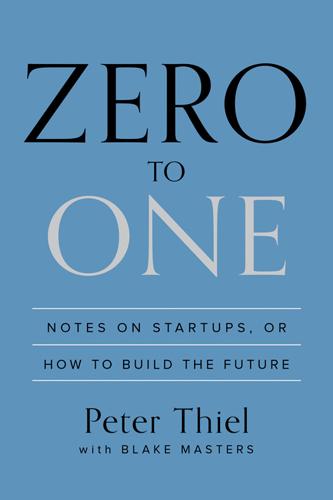
Zero to One: Notes on Startups, or How to Build the Future
by
Peter Thiel
and
Blake Masters
Published 15 Sep 2014
WHAT’S UNDER SILICON VALLEY’S HOODIES From the outside, everyone in your company should be different in the same way. Unlike people on the East Coast, who all wear the same skinny jeans or pinstripe suits depending on their industry, young people in Mountain View and Palo Alto go to work wearing T-shirts. It’s a cliché that tech workers don’t care about what they wear, but if you look closely at those T-shirts, you’ll see the logos of the wearers’ companies—and tech workers care about those very much. What makes a startup employee instantly distinguishable to outsiders is the branded T-shirt or hoodie that makes him look the same as his co-workers. The startup uniform encapsulates a simple but essential principle: everyone at your company should be different in the same way—a tribe of like-minded people fiercely devoted to the company’s mission.

The Internet Is Not the Answer
by
Andrew Keen
Published 5 Jan 2015
And then there’s what the San Francisco–based writer Rebecca Solnit dubs, collectively, “the Google Bus.”30 These are sleeker and more powerful buses, menacingly anonymous in their absence of any identifying marks, with the same kind of opaque, tinted windows that masked the Battery from the prying eyes of the outside world. Unlike the Muni’s legacy buses, the Google Bus isn’t for everyone. It is a private bus designed to transport tech workers from their expensive San Francisco homes down to the offices of Google, Facebook, and Apple. Google alone runs more than one hundred of these daily buses, which make 380 trips to its Googleplex office in Mountain View.31 These luxurious, Wi-Fi-enabled private buses—which, in total, make around four thousand daily scheduled pickups at public Bay Area bus stops—have been superimposed on top of San Francisco’s public transit grid by tech companies that have even begun to employ private security guards to protect their worker-passengers from irate local residents.32 The Google Bus has sparked such animosity from locals that, in December 2013, protesters in West Oakland attacked one of them, smashing a rear window and so outraging Tom Perkins that he compared the glass breaking to Kristallnacht in Nazi Germany.33 And, as if to mark the twenty-fifth anniversary of the Web, 2014 is the year that these demonstrations have become more politically organized and coherent.
…
Google alone runs more than one hundred of these daily buses, which make 380 trips to its Googleplex office in Mountain View.31 These luxurious, Wi-Fi-enabled private buses—which, in total, make around four thousand daily scheduled pickups at public Bay Area bus stops—have been superimposed on top of San Francisco’s public transit grid by tech companies that have even begun to employ private security guards to protect their worker-passengers from irate local residents.32 The Google Bus has sparked such animosity from locals that, in December 2013, protesters in West Oakland attacked one of them, smashing a rear window and so outraging Tom Perkins that he compared the glass breaking to Kristallnacht in Nazi Germany.33 And, as if to mark the twenty-fifth anniversary of the Web, 2014 is the year that these demonstrations have become more politically organized and coherent. They are even spreading outside the Bay Area, with antigentrification protests taking place in February 2014 in Seattle against private Microsoft buses.34 Kristallnacht it certainly isn’t. Rather than racial genocide, the Bay Area’s problem is the ever-widening economic inequality between tech workers and everyone else. In many ways, failure is as endemic here as it is in Rochester. “After decades in which the country has become less and less equal,” mourns the Palo Alto–born-and-bred George Packer, “Silicon Valley is one of the most unequal places on earth.”35 Figures from the Chapman University geographer Joel Kotkin suggest that the Valley has actually hemorrhaged jobs since the dot-com crash of 2000, losing some forty thousand jobs over the last twelve years.36 A 2013 report by Joint Venture Silicon Valley confirms Kotkin’s findings, adding that homelessness in Silicon Valley has increased by 20% between 2011 and 2013 and reliance on food stamps has reached a ten-year high.37 In Santa Clara County, the geographical heart of Silicon Valley, the poverty rate shot up from 8% in 2001 to 14% in 2013, with the food stamp population jumping from 25,000 in 2001 to 125,000 in 2013.
…
Eviction, Ex-Tenant Says,” San Francisco Chronicle, January 22, 2014. 52 Ibid. 53 Casy Miner, “In a Divided San Francisco, Private Tech Buses Drive Tension,” NPR.org, December 17, 2013. 54 Andrew Gumbel, “San Francisco’s Guerrilla Protest at Google Buses Wells into Revolt,” Observer, January 25, 2014. 55 Carmel DeAmicis, “BREAKING: Protesters Attack Google Bus in West Oakland,” Pando Daily, December 20, 2013. 56 Robin Wilkey, “Peter Shih ‘10 Things I Hate About You’ Post Draws San Francisco’s Ire, Confirms Startup Stereotypes,” Huffington Post, August 16, 2013. 57 Jose Fitzgerald, “Real Tech Worker Says SF Homeless ‘Grotesque,’ ‘Degenerate,’ ‘Trash,’” San Francisco Bay Guardian, December 11, 2013. 58 Yasha Levine, “Occupy Wall Street Leader Now Works for Google, Wants to Crowdfund a Private Militia,” Pando Daily, February 7, 2014. 59 J. R. Hennessy, “The Tech Utopia Nobody Wants: Why the World Nerds Are Creating Will Be Awful,” Guardian, July 21, 2014. 60 Krissy Clark, “What Did the Tech CEO Say to the Worker He Wanted to Automate?

Squeezed: Why Our Families Can't Afford America
by
Alissa Quart
Published 25 Jun 2018
I stared at this koan, hoping the young woman wearing the shirt while restocking WeWork’s coffee was living it out somewhere else, and I thought about how many parents I knew, both younger and middle-aged ones, had bought into this maxim, to a mixed end. How are we all supposed to survive doing what we love? What will become of the rest of the world? The exhortation can even feel coercive, when applied to the lot of journalists, for instance, or start-up tech workers and other employees in floundering but “creative” businesses. They labor long hours for low salaries doing jobs whose glamour or promise of renown is meant to be their own reward. Americans may well be marinating in an atmosphere of “cruel optimism,” as the scholar Lauren Berlant wrote in her book of the same name, an atmosphere that “exists when something you desire is actually an obstacle to your flourishing.”
…
After all, due to the scarcity of rentable or buyable housing in many cities, it is now common for teachers and other professionals living in places like San Francisco to seek second jobs, like the Uber drivers we met previously. As Princeton sociologist and demographer Douglas Massey has written, many families living in costly American cities or surrounding suburbs and towns are feeling the effects of the rise of the digital economy on the cost of real estate. With the rise of that sector, well-paid tech workers moved into urban centers, altering the composition of these areas. The companies themselves sometimes moved in as well, forming mini-metropolises within already au courant places, as Amazon has done with its headquarters in Seattle. The working poor and the struggling middle class then increasingly move to the outskirts—the outer parts of boroughs or the inner suburbs or the uncool far-flung commuter towns like Vallejo, which is thirty-two miles (via a backbreaking commute) from San Francisco.
…
Robot’s Alderson is given to deadpan enraged voice-overs about the horrors of the contemporary human condition. “Since when did ads infect our family albums?” Alderson said. “Since when did one become greater than ninety-nine?” This is also true for HBO’s Silicon Valley, which examines the huge gap between ramen-eating, couch-surfing, low-end tech workers and their 1 percent tech-guru overlords—the show’s main source of drama and humor. The absurd tech-titan excesses in Silicon Valley—the venture capital toga parties, the private Kid Rock concerts—are starkly contrasted with life on the lower rungs, where a desperate aspirant pitches his app to customers at the liquor store where he works.

Ready to Run: Unlocking Your Potential to Run Naturally
by
Kelly Starrett
Published 20 Oct 2014
recommended mobility exercises for a supple thoracic spine Start wailing on your T-spine and shoulders with these gems: T-Spine Global Smash (see here) T-Spine Double-Ball Strip (see here) Anterior Shoulder (see here) BRIEFING Every weekday morning in San Francisco, herds of high-tech workers line up at street corners, waiting for the charter bus to swing by and load them up for their daily trip to Silicon Valley. They take their seats on the bus and jack into the Wi-Fi with their laptops, but you see them getting their start while waiting for the bus, many of them hunched up, shoulder rolled, heads hanging out over the cliff, at one with their iPhones, either reading or texting.
…
Of these two images, which sounds like it’s doing more damage to the body? A day laborer in India transporting bricks to a construction site in a basket perched on top of her head. A computer programmer hunched over his laptop with a 7-ounce baseball cap on his head. For the sake of connection, let’s say he’s one of the tech workers waiting for the Google bus on the corner of 18th and Dolores in San Francisco’s Mission District. He starts his day with his head hanging over his phone, and then he climbs into a window seat on the bus and spends the rest of the day caving his head and shoulders over a computer. Let me put it this way: In this comparison, the woman in her sari carrying bricks is showing off the power of midline stabilization.

Riding for Deliveroo: Resistance in the New Economy
by
Callum Cant
Published 11 Nov 2019
Uphadya, are discussing overcoming the vertical isolation of software engineers by organizing ‘technoscientific’ points of production.28 This organization could be structured industrially (organizing all workers in one industry, rather than all workers in one job role), and so recompose different layers of the working class into one united front against the black box and the bosses.29 Together, couriers and tech workers would have much more leverage than either group on their own. The disconnect of these two workforces is a key point that allows Deliveroo to systematically exploit workers on the ground and systematically control workers in its HQ. But industrial-scale organization at Deliveroo could go even further than that: workers in the Deliveroo customer service call centres, cleaning the Deliveroo offices, and guarding the Deliveroo sites all have the same interests as us.
…
But they have much more in common with worse-off white-collar workers. Purely in terms of the relation to the means of production themselves, there exists an underlying possibility for solidarity between the two in the same way that there exists the possibility for alliance between Deliveroo workers and tech workers. As the Greek socialist theorist Nicos Poulantzas put it back in the 1970s, ‘organising such strata, incorporating them in trade unions, engaging them in collective practices and demands and breaking the ideology that they are “middle class” or “professionals” is indeed one of the most important stakes of class struggles today’.12 This professional segment, balancing dangerously on a cliff edge just above the rest of the working class, is no less important today.

Genius Makers: The Mavericks Who Brought A. I. To Google, Facebook, and the World
by
Cade Metz
Published 15 Mar 2021
“There are no laws or required standards”: Ibid. Their letter was signed by twenty-five artificial intelligence researchers: Ibid. CHAPTER 16: WEAPONIZATION inside the Clarifai offices in lower Manhattan: Kate Conger and Cade Metz, “Tech Workers Want to Know: What Are We Building This For?” New York Times, October 7, 2018, https://www.nytimes.com/2018/10/07/technology/tech-workers-ask-censorship-surveillance.html. On Friday, August 11, 2017, Defense Secretary James Mattis: Jonathan Hoffman tweet, August 11, 2017, https://twitter.com/ChiefPentSpox/status/896135891432783872/photo/4. Launched by the Defense Department four months earlier, Project Maven was an effort: “Establishment of an Algorithmic Warfare Cross-Functional Team,” Memorandum, Deputy Secretary of Defense, April 26, 2017, https://dodcio.defense.gov/Portals/0/Documents/Project%2520Maven%2520DSD%2520Memo%252020170425.pdf [inactive].
…
a group of independent academics addressed an open letter: “Workers Researchers in Support of Google Employees: Google Should Withdraw from Project Maven and Commit to Not Weaponizing Its Technology,” International Committee for Robot Arms Control, https://www.icrac.net/open-letter-in-support-of-google-employees-and-tech-workers/. “As scholars, academics, and researchers who study, teach about, and develop information technology”: Ibid. a front-page story about the controversy: Scott Shane, Cade Metz, and Daisuke Wakabayashi, “How a Pentagon Contract Became an Identity Crisis for Google,” New York Times, May 30, 2018, https://www.nytimes.com/2018/05/30/technology/google-project-maven-pentagon.html.
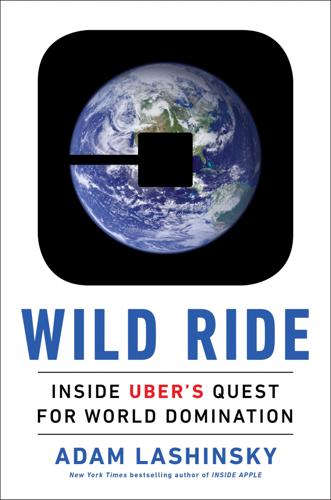
Wild Ride: Inside Uber's Quest for World Domination
by
Adam Lashinsky
Published 31 Mar 2017
Kalanick and his colleagues briefly hole up in a private room to complete their call as a crowd of one thousand overwhelmingly youthful employees of Chinese Internet companies waits in a strobe-lit hall with loudspeakers blaring. Despite Uber’s underdog status in China, Kalanick is a rock star to the young, Internet-savvy Chinese audience. Obsessed with all things digital and entrepreneurial, the tech workers know well the story of Uber’s global success and its efforts in China. Even though Didi outshines it at home, Uber has carved out a sizable piece of the market, and Kalanick is a boldface name for the audience. The packed ballroom is skeptical but intrigued by Kalanick’s maverick reputation and record of persistence.
…
(My $12 car wash and $9.99 case of bottled water meant I was still in the hole.) I was also out of position, as I now would have to head back toward a busier section of town for my next ride, which I found twenty-five unproductive minutes later near San Francisco’s City Hall. This time my passengers were two twentysomething tech workers who discussed a meeting they had just completed and were heading to one or the other’s apartment to continue working. I don’t know anything more about them because they ignored me completely, something I’ve done countless times with my Uber and taxi drivers. That one-mile ride lasted a mere six minutes, and the passenger who exited from the right side of my vehicle neglected to close the door all the way but was long gone before I could get his attention.
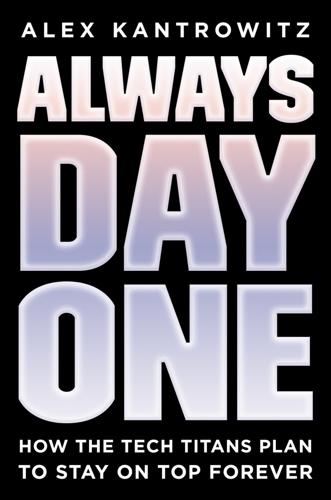
Always Day One: How the Tech Titans Plan to Stay on Top Forever
by
Alex Kantrowitz
Published 6 Apr 2020
an international letter against the use of AI for autonomous warfare: “Lethal Autonomous Weapons Pledge.” Future of Life Institute. https://futureoflife.org/lethal-autonomous-weapons-pledge/. “Hey, I left the Defense Department”: Tarnoff, Ben. “Tech Workers Versus the Pentagon.” Jacobin. Jacobin, June 6, 2018. https://jacobinmag.com/2018/06/google-project-maven-military-tech-workers. about a dozen Googlers resigned: Conger, Kate. “Google Employees Resign in Protest Against Pentagon Contract.” Gizmodo. Gizmodo, May 14, 2018. https://gizmodo.com/google-employees-resign-in-protest-against-pentagon-con-1825729300.
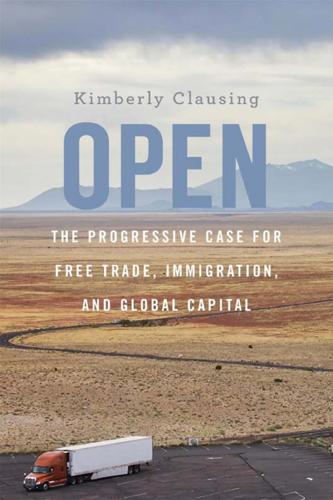
Open: The Progressive Case for Free Trade, Immigration, and Global Capital
by
Kimberly Clausing
Published 4 Mar 2019
If such a policy increased the number of foreign students too steeply, reducing slots at US universities for native-born students, limits could be set accordingly, or the US education system could expand. Of course, there are other ways to increase skilled immigration, such as simply increasing the number of H1-B visas. Many highly qualified workers are forced to leave the country because they are not successful in the H1-B visa lotteries. One in eight tech workers in the United States is here because of an H1-B visa, and there is a shortage of native workers with the skills required in math, science, and technical positions.45 Still, there are serious arguments that the H1-B program would benefit from reforms in the allocation process.46 A Balanced Immigration Policy While the above policy would bring more highly-skilled immigrants into the United States, a balanced immigration policy would serve our economy’s many needs for immigrants.
…
Those who planned to return home cited family as an important motivator. See Xueying Han and Richard P. Appelbaum, “Will They Stay or Will They Go?: International STEM Students Are Up for Grabs,” Ewing Marion Kauffman Foundation, 2016. 45. For a discussion of recent aspects of this problem, see Deanne Fitzmaurice and Katie Benner, “Meet the Foreign Tech Workers Left in Limbo by Trump,” New York Times, April 19, 2017. 46. Moni Basu, “Why the Highly Coveted Visa That Changed My Life Is Now Reviled in America,” CNN.com. June 4, 2017. 47. William A. Kandel, “US Family-Based Immigration Policy,” R43145, Congressional Research Service, February 9, 2018. 48.
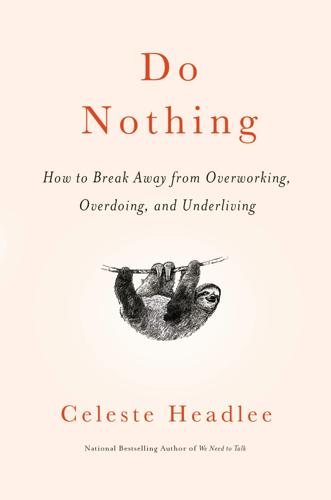
Do Nothing: How to Break Away From Overworking, Overdoing, and Underliving
by
Celeste Headlee
Published 10 Mar 2020
We’ve seen the same results in the financial world, where online research on any topic makes you more confident in your overall knowledge and more likely to bet on what you think you know by investing based more on self-assurance than on actual data. Perhaps the most damning piece of evidence in the debate over technology is the large number of tech workers who restrict their kids from using smartphones and tablets. Athena Chavarria of Facebook told the New York Times, “I am convinced the Devil lives in our phones and is wreaking havoc on our children.” Steve Jobs famously did not allow his own kids to use iPads, saying that he and his wife limited the technology their kids used at home.
…
One of the founders of Twitter, Evan Williams, gave his kids actual books instead of tablets, and Chris Anderson, former editor of Wired, has said he severely limits screen time in his home because he is painfully aware of the damage tech can do. “I’ve seen it in myself,” he said. “I don’t want to see that happen to my kids.” Tech workers and software developers are partly responsible for the addictive nature of our devices, so it’s no wonder they’re concerned about the impact that tech has on their families. This should give us all pause when we consider how much we use smartphones and tablets. Would you eat a meal that the chef wouldn’t serve to his own family?

Four Battlegrounds
by
Paul Scharre
Published 18 Jan 2023
Democratic nations have many advantages over authoritarian regimes in a long-term contest to shape how AI is used. Collectively, democratic nations have greater talent, military power, and control over critical technologies. Yet this power is fragmented among different countries and actors, including governments, corporations, academics, and tech workers. Democratic societies will need to manage their internal divisions to harness their strength. Democratic governments will need to work with tech firms to govern surveillance technology to ensure that authoritarian regimes or corporations don’t undermine individual liberties. National security experts who want to stem the flow of AI technology to competitor nations will need to work with academics who favor openness.
…
Just outside the tree-lined campus of Tsinghua University, China’s answer to MIT, lies Zhongguancun, one of China’s tech hubs that vie for the title of “China’s Silicon Valley.” The massive tech park is populated with gleaming office buildings, green spaces, ponds, and throngs of young engineers in English language T-shirts, heads down in their phones. At one Chinese start-up I visited, the cafeteria was packed at dinnertime with tech workers who seemingly never went home. China’s tech culture is notoriously hardworking, with employees expected to work “996”: 9 a.m. to 9 p.m., six days a week. Yet the open office spaces I saw were still full at 9 p.m., crumpled food wrappers next to workers’ computers as they toiled into the night.
…
In education, they were building AI applications to automatically grade papers, personalize education resources, and customize study plans. They cheerily explained their AI would increase teaching efficiency. In medicine, iFLYTEK fielded in 2018 an AI-based diagnostic system to aid doctors in treating 900-plus diseases. Most Chinese tech workers, like those in other countries, just want to get rich. The vast majority of conversations I had with AI researchers in China were about the beneficial uses of AI in society, in improving efficiency, productivity, health, safety, and quality of life. The challenges that Chinese AI innovators are grappling with are largely the same as their counterparts elsewhere.
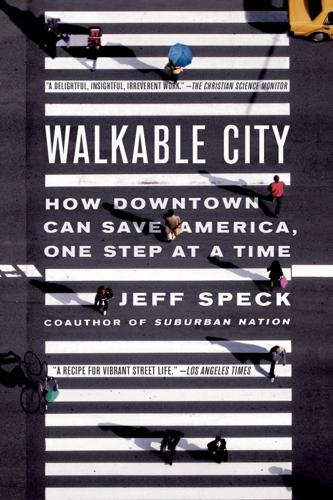
Walkable City: How Downtown Can Save America, One Step at a Time
by
Jeff Speck
Published 13 Nov 2012
Doherty and Leinberger, “The Next Real Estate Boom.” 27. Ibid. 28. Leinberger, “Federal Restructuring.” 29. Catherine Lutz and Anne Lutz Fernandez, Carjacked, 207. 30. Leinberger, Option, 77–78, and “Here Comes the Neighborhood”; Jeff Mapes, Pedaling Revolution, 143. 31. Jon Swartz, “San Francisco’s Charm Lures High-Tech Workers.” 32. David Brooks, Lecture, Aspen Institute; and David Brooks, “The Splendor of Cities.” 33. Mapes, 268. 34. Jonah Lehrer, “A Physicist Solves the City,” 3. 35. Ibid., 4. 36. Hope Yen, “Suburbs Lose Young Whites to Cities”; Leinberger, Option, 170. 37. Ibid. WHY JOHNNY CAN’T WALK 1. Jim Colleran, “The Worst Streets in America.” 2.
…
“Stress That Doesn’t Pay: The Commuting Paradox.” Institute for Empirical Work in Economics, University of Zurich, Switzerland, ideas.repec.org/p/zur/iewwpx/151.html. Summers, Nick. “Where the Neon Lights Are Bright—and Drivers Are No Longer Welcome.” Newsweek, February 27, 2009. Swartz, Jon. “San Francisco’s Charm Lures High-Tech Workers.” USA Today, December 6, 2010. The Segmentation Company, “Attracting College-Educated, Young Adults to Cities.” Prepared for CEOs for Cities, May 8, 2006. Transportation for America. Dangerous by Design 2011. Undated. Troianovski, Anton. “Downtowns Get a Fresh Lease.” The Wall Street Journal, December 13, 2010.

Lurking: How a Person Became a User
by
Joanne McNeil
Published 25 Feb 2020
Some of the writers who sprang to Sandberg’s defense early on have casually disavowed her book; others quietly distanced themselves from it. Goldberg even echoed Grant’s original points in a review of Ivanka Trump’s 2017 book Women Who Work. Lean In was a publicity machine, but real results were coming out of existing feminist activism in technology. Communities of women tech workers, several steps ahead of Sandberg, were inclusive, adapting to the needs of queer and trans people, disabled people, and people of color, and aware of how aspects of identity exacerbate sexism. Among these groups were the feminist hackerspace Double Union, an unconference called AdaCamp, and a blog and wiki called Geek Feminism, which included an exhaustive number of articles with information like how to write a code of conduct to use at a conference, or the best practices of explaining nonbinary inclusion in “women’s spaces.”
…
Google’s “Year in Search 2017” is available on YouTube, in addition to its other annual roundups. Eric Schmidt called multiple results a “bug” in an interview with Charlie Rose in 2005, which is further considered in a Washington Post piece by Gregory Ferenstein (“Google, Competition and the Perfect Result,” January 4, 2013). Nitasha Tiku has reported on activism at Google (“Why Tech Worker Dissent Is Going Viral,” Wired, June 29, 2018). An interview with Guillaume Chaslot, one of the engineers who worked on the recommendation system, in The Guardian (“‘Fiction is outperforming reality’: how YouTube’s algorithm distorts truth,” February 2, 2018) provides more information on how hateful content and misinformation spreads on the platform.
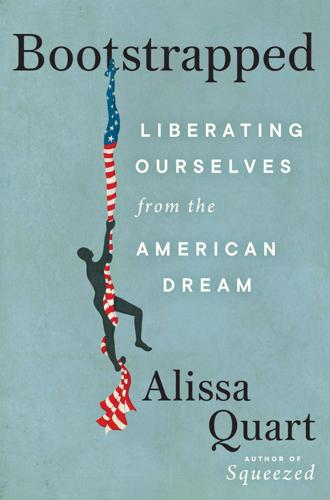
Bootstrapped: Liberating Ourselves From the American Dream
by
Alissa Quart
Published 14 Mar 2023
Our jobs, for example, are now “flexible,” because we are the ones contorting ourselves to work at all hours, or we were professionally “nimble” because we were trying to survive on freelance gigs. The lingo around living paycheck to paycheck routinely tried to make the dreary carousel of contemporary life sound more fun. “These words have gained a strange kind of prestige from downwardly mobile, college-educated tech workers,” said John Patrick Leary, the author of Keywords: The New Language of Capitalism. It was part of what Reddit’s founder, Alexis Ohanian, has called “hustle porn,” cheerleading multiple jobs and their backbreaking exertions, giving a cheerful spin to the full 30 percent of Americans who do something else for pay in addition to their full-time jobs, according to an NPR/Marist survey.
…
Chapter 10: The Con of the Side Hustle $39 billion by March 2021: Erin Griffith, “Instacart Raises $265 Million, More Than Doubling Its Valuation to $39 Billion,” New York Times, March 2, 2021, https://www.nytimes.com/2021/03/02/technology/instacart-raises-265-million.html. “These words have gained a strange kind of prestige from downwardly mobile, college-educated tech workers”: John Patrick Leary, Keywords: The New Language of Capitalism (Chicago: Haymarket Books, 2019). 30 percent of Americans who do something else for pay in addition to their full-time jobs, according to an NPR/Marist survey: “A Close-Up Look at Contract Workers,” NPR, January 22, 2018, https://www.npr.org/2018/01/22/579629353/a-close-up-look-at-contract-workers.

JPod
by
Douglas Coupland
Published 30 Apr 2007
People confuse children with angels: make it work for you. You asked for it. Part Three Part Three Breakfast Is for Losers Five Months Later Kwantlen College Learning Annex Course 3072-A Assignment: Write about What You Know . . . and the People You Know "All Rise and Pray to the Hug Machine" Meeting Today's New Tech Worker by Kaitlin Anna Boyd Joyce After having worked at my current tech firm for the larger part of a year, I have come to the conclusion that my co-workers aren't so much idiots as they are fellow citi2ens in the thrall of various modes of persistent low-grade autism. The clinical definition is that they are suffering from mild versions of "pervasive development disorders" or "sensory integration dysfunctions."
…
Perhaps the broadest way of understanding the world of the high-functioning autistic is to treat all stimuli that impact on the human body not as sensory input but as information bombardment. Most people are able to sift out the day's excess information without ever thinking about it, but to the tech worker exhibiting autistic—okay, let's just say the word: geek—to most geeks, a hug is not a hug, it's the physical equivalent of holding a novelty marine foghorn up to the ear and blasting it directly into the central nervous system. When you hug a geek, you're overloading them in a manner they find intolerable.

Power, for All: How It Really Works and Why It's Everyone's Business
by
Julie Battilana
and
Tiziana Casciaro
Published 30 Aug 2021
According to the organizers, more than 60 percent of all Google offices, amounting to thousands of employees, participated in the walkouts.52 The same day, they published an article in The Cut articulating five key demands: an end to forced arbitration; a commitment to end pay and opportunity inequity; a publicly disclosed sexual harassment transparency report; a clear, uniform, globally inclusive process for reporting sexual misconduct; and changes in organizational governance, including shifting the Chief Diversity Officer to report directly to the CEO and appointing an employee representative to the Board.53 In February 2019, Google announced that it would meet one of the walkout’s key demands by ending forced arbitration for employee disputes.54 Yet no announcement was made on Project Dragonfly until July 16, 2019, when Google executive Karan Bhatia announced before the U.S. Senate Judiciary Committee that the project had been canceled.55 The story of the Google employees is only one example of the many petitions and protests that tech workers have since been organizing to pressure their companies to act more ethically, not only at Google, but also at Amazon, Facebook, Salesforce, Microsoft, and Apple.56 Many have also proposed innovations and tried to orchestrate their adoption, because they realize that the tools they build are political.
…
Cicilline, Investigation of Competition in Digital Markets: Majority Staff Report and Recommendations, United States House of Representatives Subcommittee on Antitrust, Commercial and Administrative Law of the Committee of the Judiciary, 2020. 39 Fernando Belinchón and Moynihan Qayyah, “25 Giant Companies That Are Bigger than Entire Countries,” Business Insider, July 25, 2018, https://www.businessinsider.com/25-giant-companies-that-earn-more-than-entire-countries-2018-7. 40 Jenny Odell, How to Do Nothing: Resisting the Attention Economy (New York: Melville House, 2021). 41 Dell Cameron and Kate Conger, “Google Is Helping the Pentagon Build AI for Drones,” Gizmodo, June 1, 2018, https://gizmodo.com/google-is-helping-the-pentagon-build-ai-for-drones-1823464533. 42 Meredith Whittaker, in discussion with the authors, September 2020. 43 Scott Shane and Daisuke Wakabayashi, “ ‘The Business of War’: Google Employees Protest Work for the Pentagon,” New York Times, April 4, 2018, https://www.nytimes.com/2018/04/04/technology/google-letter-ceo-pentagon-project.html. 44 Reuters, “Google to Halt Controversial Project Aiding Pentagon Drones,” NBC News, June 2, 2018, https://www.nbcnews.com/news/military/google-halt-controversial-project-aiding-pentagon-drones-n879471. 45 Lulu Chang, “As Google Continues Its Work on a Military Project, a Dozen Employees Resign,” Digital Trends, June 2, 2018, https://www.digitaltrends.com/business/google-employees-letter-to-ceo-war/. 46 Davey Alba, “Google Backs Away from Controversial Military Drone Project,” BuzzFeed, June 1, 2018, https://www.buzzfeednews.com/article/daveyalba/google-says-it-will-not-follow-through-on-pentagon-drone-ai. 47 Sundar Pichai, “AI at Google: Our Principles,” Google, June 7, 2018, https://blog.google/technology/ai/ai-principles/. 48 Ryan Gallagher, “Google Plans to Launch Censored Search Engine in China, Leaked Documents Reveal,” The Intercept, August 1, 2018, https://theintercept.com/2018/08/01/google-china-search-engine-censorship/. 49 Find a copy of the open letter in the New York Times archive here: https://int.nyt.com/data/documenthelper/166-dragonfly-letter/ae6267f0128f4facd183/optimized/full.pdf#page=1. 50 “Open Letter: Google Must Not Capitulate on Human Rights to Gain Access to China,” Amnesty International, August 28, 2018, https://www.amnesty.org/en/latest/news/2018/08/open-letter-to-google-on-reported-plans-to-launch-a-censored-search-engine-in-china/. 51 Taylor Telford and Elizabeth Dwoskin, “Google Employees Worldwide Walk Out over Allegations of Sexual Harassment, Inequality within Company,” Washington Post, November 1, 2018, https://www.washingtonpost.com/business/2018/11/01/google-employees-worldwide-begin-walkout-over-allegations-sexual-harassment-inequality-within-company; Ryan Mac, “Disgraced Google Exec Andy Rubin Quietly Left His Venture Firm Earlier This Year,” BuzzFeed, October 13, 2019, https://www.buzzfeednews.com/article/ryanmac/andy-rubin-playground-global-google-quiet-departure. 52 Sam Byford, “Google Employees Worldwide are Walking Out Today to Protest Handling of Sexual Misconduct,” The Verge, November 1, 2018, https://www.theverge.com/2018/11/1/18051026/google-walkout-sexual-harassment-protest. 53 Telford and Dwoskin, “Google Employees Worldwide Walk Out.” 54 Daisuke Wakabayashi, “Google Ends Forced Arbitration for All Employee Disputes,” New York Times, February 21, 2019, https://www.nytimes.com/2019/02/21/technology/google-forced-arbitration.html. 55 “Google’s Project Dragonfly ‘Terminated’ in China,” BBC News, July 17, 2019, https://www.bbc.com/news/technology-49015516. 56 Johana Bhuiyan, “How the Google Walkout Transformed Tech Workers into Activists,” Los Angeles Times, November 6, 2019, https://www.latimes.com/business/technology/story/2019-11-06/google-employee-walkout-tech-industry-activism. On the importance of paying attention to such employee rebellions, see David Courpasson and Jean-Claude Thoenig, When Managers Rebel, 1st ed.

San Francisco Like a Local: By the People Who Call It Home
by
Dk Eyewitness
Published 5 Apr 2023
With outdoor heaters and a kitchen serving restaurant-worthy grub, it’s the ideal spot for a long summer night, or a date if you don’t mind the lively atmosphere. g Rooftop Bars g Contents Google Map B RESTAURANT & BAR Map 3; 720 Howard Street, Yerba Buena; ///accent.coherent.tennis; www.bsanfrancisco.com Nestled atop the Moscone Convention Center, B is a wonderland of views, dollar oysters, and seasonal cocktails. Patrons – a melting pot of tech workers, groups of animated girlfriends, and suited-up businessmen – sit out on the modern terrazzo after a hard day’s work and watch the sun set over Yerba Buena Gardens, drinks in hand. Suffice to say that B makes for a perfect upscale yet casual backdrop for a date night. » Don’t leave without trying the Paloma – a citrus-heavy drink with a hint of elderflower.

The Raging 2020s: Companies, Countries, People - and the Fight for Our Future
by
Alec Ross
Published 13 Sep 2021
Google maintains corporate offices in dozens: Giovanni Legorano, “Google Reaches $333 Million Tax Settlement in Italy,” Wall Street Journal, May 4, 2017, https://www.wsj.com/articles/google-agrees-306-million-tax-settlement-in-italy-1493901007. The surrounding neighborhood: Art Patnaude, “Tech Workers Flock to Dublin’s Silicon Docks,” Wall Street Journal, May 28, 2015, https://www.wsj.com/articles/tech-workers-flock-to-dublins-silicon-docks-1432822827; Fiona Reddan, “Top 1000: Apple Overtakes CRH to Become Ireland’s Largest Firm,” Irish Times, May 10, 2018, https://www.irishtimes.com/business/top-1000-apple-overtakes-crh-to-become-ireland-s-largest-firm-1.3488309.

That Will Never Work: The Birth of Netflix and the Amazing Life of an Idea
by
Marc Randolph
Published 16 Sep 2019
People in Santa Cruz are typically against development. They’ve opposed widening the roads. They don’t want it to grow. Growth is God, over the Santa Cruz mountains. But in Santa Cruz, it’s vulgar. I wanted some of Santa Cruz’s laid-back ethos for my company. I didn’t want to attract just the same group of ambitious young tech workers from over the hill. I wanted freethinkers, people who were slightly outside the box. I wanted things to be different. I wanted life balance—for me and for my co-workers. I wanted Santa Cruz’s access to trails and waves and a more relaxed way of life, and I didn’t want to have to spend two hours every day commuting to Palo Alto.
…
By spring of ’98 he’d gotten tired of his classmates at Stanford and had been focusing most of his energy running a different venture: Technology Network. TechNet was a lobbying group that combined Reed’s two overriding passions: the tech world and educational reform. It pushed for better protections for tech companies against lawsuits from shareholders, easier visa requirements for foreign tech workers, and improvements to math and science education. Reed was a big believer in charter schools and was using the group to advocate for them, donating money to a growing number of politicians. Frankly, he had enough to worry about. But I was still relieved when he dunked his head underwater and swam to the other end of the pool.
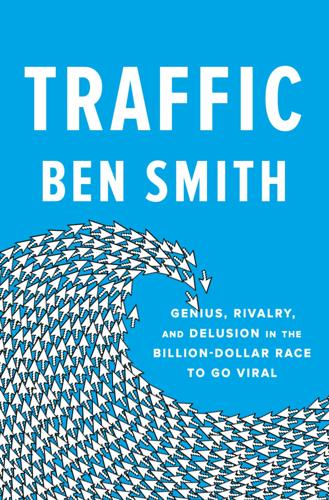
Traffic: Genius, Rivalry, and Delusion in the Billion-Dollar Race to Go Viral
by
Ben Smith
Published 2 May 2023
He spent more than a decade fantasizing that Kinja, the tech platform, would be his real business—not just a bunch of blogs. Maybe that explains why Nick decided to launch Valleywag. It’s hard to explain it otherwise. The site never got much traffic, peaking around two million visitors a month. It didn’t sell many ads. It didn’t even generate the kinds of anonymous comments you’d see on Jezebel or Gawker—too many tech workers understood how IP addresses worked, how traceable they could be. It was, Nick always knew, “never commercial.” The advertisers in lucrative Silicon Valley publications were venture capital and law firms—not the consumer brands Batty sold to. But Valleywag was, in some ways, the most personally significant of the Gawker sites to Nick Denton.
…
Only one writer had really figured out how to drive attention to it, and that was a goofily optimistic New Yorker named Nicholas Carlson. The answer lay not in the sex lives of unattractive technologists and financiers but in slideshows, and in particular slideshows of the awesome new offices that tech workers occupied—big open-plan spaces, with Ping-Pong tables and colorful couches. Valleywag readers couldn’t get enough of that. Nick Denton viewed that kind of coverage as “supine,” an opinion that has now become conventional. His own coverage of some of the country’s most powerful men was, if anything, ahead of its time.
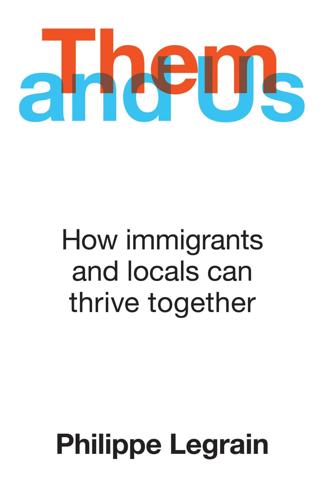
Them and Us: How Immigrants and Locals Can Thrive Together
by
Philippe Legrain
Published 14 Oct 2020
When then British prime minister Margaret Thatcher enticed Nissan to open the first Japanese car plant in Europe in Sunderland in 1986, Nissan insisted on bringing in Japanese managers; the factory also employed 8,000 locals in 2019.6 The presence of talented foreigners can also help attract international capital. As tech workers move to Toronto, the Canadian city is attracting more venture capital flows too. Through their business networks, skilled migrants also tend to boost exports to their country of origin, as well as foreign investment there.7 Their knowledge of foreign markets is particularly helpful for small exporting businesses, notably in Sweden.8 Moreover, migrants increasingly lead global businesses.
…
When she realised that her daughter Disha, a university student who had lived in the US since she was six, might be sent back to India when she turned twenty-one and was no longer covered by her mother’s temporary work visa, she had had enough. Canada gave the family permanent residence in eight months. ‘It’s so nice to be in a country where you feel you belong,’ said Disha.48 As the US turns away talented tech workers, Toronto’s appeal is growing. In 2017 it added more tech talent than the San Francisco Bay Area (which includes Silicon Valley), Seattle and Washington DC combined.49 Meanwhile, venture capital investment in Toronto-based start-ups more than quadrupled between 2013 and 2018.50 Among those flocking there are Canadians who had previously moved to Silicon Valley to work.
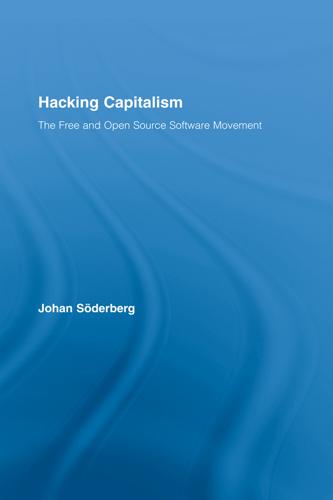
Hacking Capitalism
by
Söderberg, Johan; Söderberg, Johan;
The media image of hackers as apolitical, juvenile pranksters belittles the issues at stake: “While only a small number of computer users would categorize themselves as ‘hackers,’ there are defensible reasons for extending the restricted definition of hacking down and across the case hierarchy of systems analysts, designers, programmers, and operators to include all high-tech workers—no matter how inexpert—who can interrupt, upset, and redirect the smooth flow of structured communications that dictates their position in the social networks of exchange and determines the pace of their work schedules.”74 Employees crashing the computer systems of their employers gives a clear indication of that hacking can be an act of labour resistance.
…
In announcing the rise of a different class, Negri, Hardt, and others, are contributing to a two-hundred-year-old tradition with roots both in the liberal and the socialist camps. Liberals have invariably heralded the new social stratum as the bearer of an end to class conflicts, while radicals of course have made the very opposite judgement.28 Revolutionary hopes were attached to the high-tech worker already in the 1960s when Serge Mallet wrote about the New Working Class. The subjectivity of the young workers in the automated factory, Mallet attested, was particularly disposed to seeing through the contradictions of the capitalist system.29 Thirty years down the road, Maurizio Lazzarato makes a similar argument about workers in the cutting-edge sector of our day.

Chokepoint Capitalism
by
Rebecca Giblin
and
Cory Doctorow
Published 26 Sep 2022
Making contractual terms unenforceable is a powerful weapon indeed, and it’s a measure that in the US can take place at the state (not federal) level, where lawmakers are typically more responsive to voters. Take California, where noncompete agreements are unenforceable “as against public policy.” This means that tech workers can abandon companies whose founders turn out to be toxic and found competing companies without worrying about lawsuits from their former employers. That one legal quirk is the reason California has a tech industry: the first Silicon Valley company, Shockley Semiconductor Laboratory, was founded by the Nobel laureate William Shockley, who invented the method for making semiconductors out of silicon (without Shockley’s work, we’d still be using gallium arsenide in our electronics, and “Gallium Arsenide Valley” doesn’t have quite the same ring).
…
In the US, one is the Computer Fraud and Abuse Act (CFAA).2 This Reagan-era cybersecurity law has been distorted through high-priced cases brought by the likes of Facebook, which has argued that violating its terms and conditions should be viewed as a criminal act of hacking. Then there’s noncompete agreements, which lock up tech workers who might defect from a controlling company to a liberating one; trade secrecy, which lets companies sue rivals that rely on “secrets” to make compatible products; and binding arbitration, which deprives customers and suppliers of a day in court to object to these practices. New dirty tricks are also always on the horizon: Oracle v.

The Equality Machine: Harnessing Digital Technology for a Brighter, More Inclusive Future
by
Orly Lobel
Published 17 Oct 2022
Jason Sockin, Aaron Sojourner, and Evan Starr, “Non-Disclosure Agreements and Externalities from Silence,” working paper, August 30, 2021, https://papers.ssrn.com/sol3/papers.cfm?abstract_id=3900285. 8. Queenie Wong, “Meet the CEO Behind Blind, an Anonymous Chat App That Has Tech Workers Talking,” SiliconValley.com, January 25, 2018, https://www.siliconvalley.com/2018/01/25/meet-the-ceo-behind-blind-an-anonymous-chat-app-that-has-tech-workers-talking. 9. Svenja Dube and Chenqi Zu, “The Disciplinary Effect of Social Media: Evidence from Firms’ Responses to Glassdoor Reviews,” Journal of Accounting Research 59, no. 5 (December 2021): 1783. 10. Victoria Turk, “This Bot for Workplace Harassment Takes the Bias out of Reporting,” Wired (UK), October 9, 2018, https://www.wired.co.uk/article/julia-shaw-spot-ai-workplace-harassment-reporting-startup. 11.

The Code: Silicon Valley and the Remaking of America
by
Margaret O'Mara
Published 8 Jul 2019
It had to be stopped before it did any further damage.11 For all the competitive spin when it came to talking about who had the best product, however, Netscape and its allies didn’t want to draw much public attention to their campaign to get the government to help. At first, they lobbied very quietly. Even though the TechNet crowd was persuading Congress to side with them on nearly every issue those days—from more tech-worker visas to R&D tax credits to e-commerce sales taxes—they initially didn’t get much headway when it came to their case against Microsoft. The White House had little relish for going up against a booming tech giant whose founder was one of the richest and most admired men in America. The thirteen-year slog of the IBM suit further dampened government interest in high-tech antitrust, as did the case of the existing Microsoft consent decree, which already was outdated by the time it went into place.
…
Already facing criticism for the pressure their growth had placed on the housing market, Facebook and Google announced that they would build apartments and town houses to house their employees nearby, company towns in the mold of Pullman and Ford, updated for the twenty-first century. As if in call-and-response to the new welfare capitalism, campaigns to organize tech workers gained momentum, pushing to expand white-collar tech’s perks and pay to its massive, contingent workforce, the shuttle-bus drivers and gig workers and coders for hire. Drive beyond the sandstone-and-tile shimmer of Stanford, the obelisk of the Hoover Tower (still pointing straight up!), and the Stanford Shopping Center, developed on university land back in the 1950s and now home to every designer brand imaginable.
…
Vice President Al Gore and President Bill Clinton at the first Net Day in Concord, Calif., 1996. The Internet era created new opportunities for Indian IT workers and companies. Infosys training session, Bangalore, 2000. Amazon.com founder and CEO Jeff Bezos poses before the Seattle skyline at company headquarters, 2001. Young tech workers flocked to “pink slip parties” in the wake of the dot-com crash. A red dot on your name tag meant you were looking for a job. San Francisco, 2001. Google cofounders Sergey Brin (left) and Larry Page (right) with CEO Eric Schmidt (center), shortly before the company’s 2004 IPO. Presidential candidate Barack Obama talks to a young journalist after a town hall meeting at Google, 2007.

Naked Economics: Undressing the Dismal Science (Fully Revised and Updated)
by
Charles Wheelan
Published 18 Apr 2010
The relatively high taxation necessary to support a strong social safety net falls most heavily on those with productive assets, including human capital, making countries like France a good place to be a child born into a poor family and a bad place to be an Internet entrepreneur (which in turn makes it a bad place to be a high-tech worker). Overall, policies that guarantee some pie for everybody will slow the growth of the pie itself. Per capita income in the United States is higher than per capita income in France; the United States also has a higher proportion of children living in poverty. Having said all that, reasonable people can disagree over the appropriate level of social spending.
…
Boeing sells aircraft to India, Microsoft sells software to Europe, McKinsey & Company sells consulting services to Latin America. Again, this is more good news for people who know how to design a fuel-efficient jet engine or explain total quality management in Spanish. On the other hand, it puts our low-tech workers in competition with low-priced laborers in Vietnam. Nike can pay workers $1 a day to make shoes in a Vietnamese sweatshop. You can’t make Boeing airplanes that way. Globalization creates more opportunities for skilled workers (Naked Economics is published in eleven languages!) and more competition for unskilled workers.
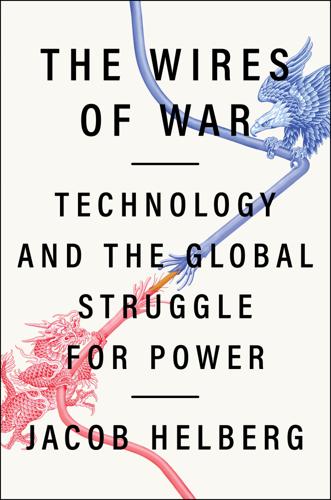
The Wires of War: Technology and the Global Struggle for Power
by
Jacob Helberg
Published 11 Oct 2021
Baime, Arsenal of Democracy: FDR, Detroit, and an Epic Quest to Arm an America at War (New York: Houghton Mifflin Harcourt, 2014), 73. 73 Ibid., 85. 74 Arthur Herman, Freedom’s Forge: How American Business Produced Victory in World War II (New York: Random House, 2013), 249. 75 Lee, AI Superpowers, e-book, 348. 76 Smith, Tools and Weapons, 11. 77 Adam Satariano, “The World’s First Ambassador to the Tech Industry,” New York Times, September 3, 2019, https://www.nytimes.com/2019/09/03/technology/denmark-tech-ambassador.html. 78 Esmy Jimenez, “ ‘We Won’t Build It’: Northwest Tech Workers Struggle With Company Ties to Immigration Enforcement,” Northwest Public Broadcasting, January 14, 2020, https://www.nwpb.org/2020/01/14/we-wont-build-it-northwest-tech-workers-struggle-with-company-ties-to-immigration-enforcement/. 79 Michael Steinberger, “Does Palantir See too Much?,” New York Times, October 23, 2020, https://www.nytimes.com/interactive/2020/10/21/magazine/palantir-alex-karp.html. 80 Alex Karp, “Opinion: I’m a tech CEO, and I don’t think tech CEOs should be making policy,” Washington Post, September 5, 2019, https://www.washingtonpost.com/opinions/policy-decisions-should-be-made-by-elected-representatives-not-silicon-valley/2019/09/05/e02a38dc-cf61-11e9-87fa-8501a456c003_story.html. 81 Trae Stephens, “The Ethics of Defense Technology Development: An Investor’s Perspective,” Medium, December 4, 2019, https://medium.com/@traestephens/the-ethics-of-defense-technology-development-an-investors-perspective-45c71bf6e6af. 82 Michael Brown and Pavneet Singh, “China’s Technology Transfer Strategy: How Chinese Investments in Emerging Technology Enable a Strategic Competitor to Access the Crown Jewels of U.S.
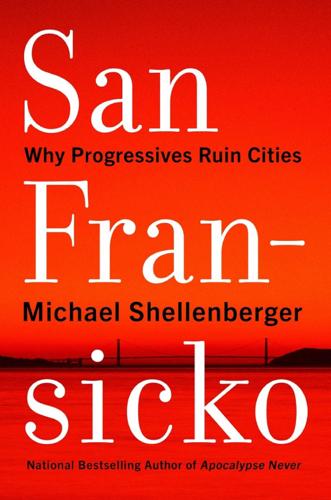
San Fransicko: Why Progressives Ruin Cities
by
Michael Shellenberger
Published 11 Oct 2021
You’ll need an income source.”18 Rising overdose deaths, the vacuum of leadership and vision, and the sheer disruption caused by the COVID-19 pandemic made some people wonder if the crisis had created a real opportunity for change on the West Coast. When I asked her what she thought was possible, given how many reform-minded tech workers had left San Francisco, Riva said, “It does feel like the end of an era, and makes me sad.” At the same time, she said, “There’s a lot of people trying to think like, how do we fix this?”19 In normal times, we pay our taxes and expect that, in return, police will prevent and investigate crimes, sidewalks and streets will be as clean and clear as possible, and our children can expect from their schools a decent education.
…
“No Safe Place: The Criminalization of Homelessness in US Cities,” National Law Center on Homelessness and Poverty, July 16, 2014, www.homelessnesslaw.org. 13. Justin Keller, “Open letter to SF Mayor Ed Lee and Greg Suhr (police chief),” Justin Keller (blog), February 15, 2016, www.justink.svbtle.com. 14. Julie Carrie Wong, “San Francisco Tech Worker: ‘I Don’t Want to See Homeless Riff-Raff,’” Guardian, February 17, 2016, www.theguardian.com. 15. Richard Rothstein, Color of Law: A Forgotten History of How Our Government Segregated America (New York: Liveright, 2017). 16. Bruce Mitchell and Juan Franco, “HOLC ‘Redlining’ Maps: The Persistent Structure of Segregation and Economic Inequality,” National Community Reinvestment Coalition, March 20, 2018, www.ncrc.org/holc. 17.

Tools and Weapons: The Promise and the Peril of the Digital Age
by
Brad Smith
and
Carol Ann Browne
Published 9 Sep 2019
Both institutions have benefited from each other’s success and a strong partnership between them, demonstrating in a dramatic way the symbiotic relationship that often exists between the tech sector and leading universities. See Taylor Soper, “Univ. of Washington Opens New Computer Science Building, Doubling Capacity to Train Future Tech Workers,” Geekwire, February 28, 2019, https://www.geekwire.com/2019/photos-univ-washington-opens-new-computer-science-building-doubling-capacity-train-future-tech-workers/. Back to note reference 11. “AP Program Participation and Performance Data 2018,” College Board, https://research.collegeboard.org/programs/ap/data/participation/ap-2018. Back to note reference 12.

Automation and the Future of Work
by
Aaron Benanav
Published 3 Nov 2020
That’s Good for the US, Bad for Poor Countries,” Wall Street Journal, February 16, 2018; Kevin Sneader and Jonathan Woetzel, “China’s Impending Robot Revolution,” Wall Street Journal, August 3, 2016; Saheli Roy Choudhury, “China Wants to Build Robots to Overtake Its Rivals—But It’s Not There Yet,” CNBC, August 16, 2018; Brahima Coulibaly, “Africa’s Race against the Machines,” Project Syndicate, June 16, 2017; AFP, “Tech to Cost Southeast Asia Millions of Jobs, Doom ‘Factory Model,’ Warns WEF,” AFP International Text Wire, September 12, 2018. 48 Hallward-Driemeier and Nayyar, Trouble in the Making?, pp. 93–6. Global employment in the IT and call center sectors also seems set to decline as cloud-based computing obviates the need for firms to develop and monitor their own websites and online databases; large Indian IT firms are already shedding jobs. See Simon Mundy, “India’s Tech Workers Scramble for Jobs as Industry Automates,” Financial Times, May 27, 2017. 49 Nathaniel Meyersohn, “Grocery Stores Turn to Robots during the Coronavirus,” CNN Business, April 7, 2020. See also John Reed, Mercedes Ruehl, and Benjamin Parkin, “Coronavirus: will call centre workers lose their ‘voice’ to AI?

Pedigree: How Elite Students Get Elite Jobs
by
Lauren A. Rivera
Published 3 May 2015
Consequently, hiring involved some skills matching between job requirements and applicant qualifications, but also included (and frequently prioritized) cultural and emotional matching between evaluators and candidates. There is burgeoning evidence to suggest that these types of processes are not unique to the EPS world; instead, they are more general features of American labor markets. Whether they are hiring restaurant servers, fashion models, or high-tech workers, US employers emphasize their personal feelings of fit, chemistry, and like-mindedness, often over applicants’ prior work experience and job-specific skills.8 Together, these findings call attention to the fundamentally interpersonal nature of hiring. Mainstream sociological models present employers’ decisions as resulting from applicants’ characteristics.
…
In addition, the consumption patterns they needed to keep up with their peers and create a desirable lifestyle for themselves (e.g., vacations, fitness and grooming, membership to social clubs, and participation in charity circuits) and their children (e.g., extracurricular activities, paid child care, private schools, and personal tutors)—kept them watching their balance statements and made them feel constrained. A New York Times article several years ago described similar trends on the West Coast among the “working-class millionaires” of Silicon Valley; high-tech workers who made seven figures per year, but saw themselves as underprivileged because they were surrounded by people who made eight or nine figures.10 Thus, a crucial obstacle in using people’s perceptions of their own social position to study social class is that, in many Americans’ eyes, being upper class or elite means the freedom from thinking about monetary constraints and/or having no one richer to which to compare oneself.

The Future Is Asian
by
Parag Khanna
Published 5 Feb 2019
Asians’ superior academic standing in college admissions has generated major lawsuits against prestigious universities such as Harvard, with aggrieved whites claiming that Asians benefit from affirmative action policies that whites now seem to need to guarantee sufficient representation in universities and Asians demanding that admissions criteria be more meritocratic rather than artificially limiting their enrollment through racial quotas.12 It is safe to say that Silicon Valley would not be what it is today without Asians. With their level of educational attainment, Indian immigrants (72 percent of whom arrive in the United States with a bachelor’s degree or higher) now account for 70 percent or more of the United States’ annual quota of H-1B visas. The influx of hundreds of thousands of tech workers from southern India has made Telugu the fastest-growing language in America. According to the researcher Vivek Wadhwa, from 1995 to 2004, 53 percent of tech start-ups in the Valley were founded by at least one foreigner, overwhelmingly Asians.13 The campuses of Google and Facebook are tech equivalents of UN headquarters, with canteens offering cuisines from Arabic to Japanese.14 Indians in particular are not only powerfully represented in the tech workforce but also highly networked through organizations such as The Indus Entrepreneurs (TiE).
…
Across Europe, hotels and facilities are so understaffed that they cut back on services (yet resist automating them). Many of Germany’s industrious provinces require thousands of workers that could come only from southern Europe or Asia. Nationwide, Germany is seeking 200,000 nurses by 2020 and is actively recruiting Filipinos to care for its elderly. At the same time, Indian tech workers have become highly sought after to staff European companies. Even after establishing an institute in the United Kingdom to train more British engineers, Dyson still needs at least three thousand engineers for the company’s flagship manufacturing center in England. In the war for talent, Asians are being snapped up.

Fulfillment: Winning and Losing in One-Click America
by
Alec MacGillis
Published 16 Mar 2021
The more prosperity concentrated in certain cities, the more it concentrated within certain segments of those cities, exacerbating long-standing imbalances or driving those of lesser means out altogether. Dystopian elements in cities such as San Francisco—the homeless defecating on sidewalks in a place with $24 lunch salads and one-bedroom apartments renting for $3,600 on average; high-paid tech workers boarding shuttles to suburban corporate campuses while lower-paid workers settled for 200-square-foot “micro-apartments” or dorm-style arrangements with shared bathrooms or predawn commutes from distant cities such as Stockton—were a feature of both local and national inequality. The growing imbalance of wealth was making life harder in both sorts of places.
…
The Transit Riders Union built a coalition and soon had its first big win—the city council unanimously passed an income tax on the city’s wealthiest households, part of a wave of progressive legislation that also included laws mandating a $15 minimum wage and paid leave. The tax would face a challenge but it was a start, the first income tax passed in the state in over eighty years. Next, the coalition took on homelessness. In September 2017, it held a rally under the banner of Housing for All, with new coalition members—even a group of concerned tech workers calling themselves Tech 4 Housing—and a call for new revenue to tackle the problem. A few weeks later, the council’s more liberal members responded with a proposal for an “employee hours tax”—a tax on businesses with gross revenue above $5 million, which would bring in $25 million for affordable housing, shelter, and homelessness services.
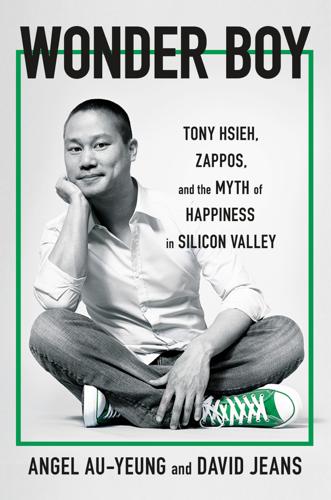
Wonder Boy: Tony Hsieh, Zappos, and the Myth of Happiness in Silicon Valley
by
Angel Au-Yeung
and
David Jeans
Published 25 Apr 2023
Then he envisioned building an element of Silicon Valley in the neighborhood, where innovators and technologists could come, create, and invent, without fear of failure. To sweeten the arrival—and supercharge the development—new citizens would have a place to stay, sometimes for months at a time, for free. At the time, there was only one residential building that could seem appealing to young millennials and tech workers arriving in the run-down neighborhood. The Ogden was a 248-unit luxury condominium building that towered above the corner of Las Vegas Boulevard and Ogden Avenue, virtually a halfway point between the former City Hall building to the north and Fremont Street to the south. From a distance, the white facade of the building stood as one of the most visible markers of downtown.
…
Tyler and David had rented the cottage via Airbnb for the long weekend; it was the first time they’d been able to get away with friends since the pandemic had started. As the reggae played, Tyler stared after the two men who’d just walked past, and noticed one of them wasn’t wearing shoes—an odd sight in a ritzy town where financial advisors and tech workers in polo shirts and vests line the sidewalks. He exchanged a glance with David as they realized the two men had turned around and were now walking back toward them. One man was taller and looked to be about fifty, with long gray-streaked hair that dangled over his shoulders, giving him the look of an older “hippie guy,” Tyler recalled.
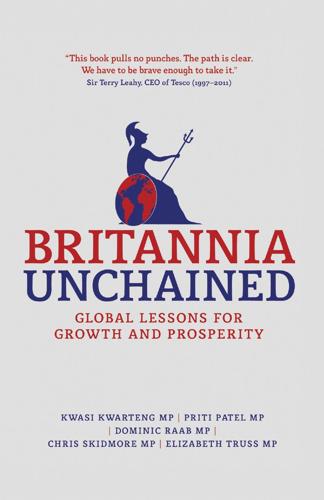
Britannia Unchained: Global Lessons for Growth and Prosperity
by
Kwasi Kwarteng
,
Priti Patel
,
Dominic Raab
,
Chris Skidmore
and
Elizabeth Truss
Published 12 Sep 2012
With this influx of talent, Israel effectively imported a class of highly skilled innovators. The antipathy towards individual enterprise that typified the sclerotic Soviet Union, along with deep-rooted antisemitism, fuelled a population shift of unparalleled importance. It was estimated in 2009 that immigrants from the former Soviet Union represented half of the high-tech workers in Israel.19 It is not too much of a stretch to suggest that the sort of people inclined to travel thousands of miles to a small, isolated, desert country – without even knowledge of the language – might possess exactly the sort of boldness that scientific discovery relies upon. Binyamin Netanyahu declared that this influx of talent ‘rescued’ Israel, and should be treated as ‘one of the greatest miracles that ever happened to the state’.

The Psychology of Money: Timeless Lessons on Wealth, Greed, and Happiness
by
Morgan Housel
Published 7 Sep 2020
The person who grew up in poverty thinks about risk and reward in ways the child of a wealthy banker cannot fathom if he tried. The person who grew up when inflation was high experienced something the person who grew up with stable prices never had to. The stock broker who lost everything during the Great Depression experienced something the tech worker basking in the glory of the late 1990s can’t imagine. The Australian who hasn’t seen a recession in 30 years has experienced something no American ever has. On and on. The list of experiences is endless. You know stuff about money that I don’t, and vice versa. You go through life with different beliefs, goals, and forecasts, than I do.

Tailspin: The People and Forces Behind America's Fifty-Year Fall--And Those Fighting to Reverse It
by
Steven Brill
Published 28 May 2018
Despite repeated calls from reformers to modernize the system, it has not been changed significantly since 1949, leaving little to attract smart, ambitious people starting their careers because, as one GAO report put it, the system emphasizes “time in position, rather than performance.” Generally, starting tech workers can expect to make 30 percent to 50 percent less in the government than they will in the private sector, assuming they can be induced to consider what most would regard as an uncool civil service job. Agencies lucky enough to find cyber security specialists who want to answer the government’s call for help have to work around a classification and pay system that obviously did not contemplate when it was set up seventy years ago that a star with one or two years of experience at a Silicon Valley firm should be a high-priority hire.
…
national workforce was thirty-four: Juliet Eilperin, “Trump Freezes Hiring of Many Federal Workers,” Washington Post, January 23, 2017, https://www.washingtonpost.com/powerpost/trump-freezes-hiring-of-federal-workers/2017/01/23/f14d8180-e190-11e6-ba11-63c4b4fb5a63_story.html?utm_term=.116fddfeae6a. fifteen pay categories: The General Schedule Classification and Pay is available on the Office of Personnel Management website: https://www.opm.gov/policy-data-oversight/pay-leave/pay-systems/general-schedule/. starting tech workers: Interview with Max Stier. often impractical preference: See the Veterans Services page on the Office of Personnel Management: https://www.opm.gov/policy-data-oversight/veterans-services/vet-guide-for-hr-professionals/. an average of ninety days: Joe Davidson, “Federal Hiring Remains a Work in Progress After Many Fixes,” Washington Post, October 4, 2016, https://www.washingtonpost.com/news/powerpost/wp/2016/10/04/federal-hiring-remains-a-work-in-progress-after-many-fixes/?

The Land of Hope and Fear: Israel's Battle for Its Inner Soul
by
Isabel Kershner
Published 16 May 2023
Even the opening words of the Declaration of Independence, “The Land of Israel was the birthplace of the Jewish people,” posed problems, she said, noting that the Jewish people came into being when they received the Torah from God at Mount Sinai, in the desert peninsula that was now part of Egypt, and that “a Jew is a person who goes in the path of the Torah and its commandments.” Most crucially, she added, “We cannot possibly identify with a Jewish state whose laws are contrary to the Torah of Israel.” Avigayil, Hananel’s younger sister, was equally proud of her heritage but life had taken her on a different route. A former high-tech worker and a divorced mother of two, she had become a prominent activist for social change within the ultra-Orthodox community and was working as a public relations consultant. At thirty-one, she was also close to completing an Open University degree in sociology and anthropology. She had not abandoned ultra-Orthodoxy and wanted to be counted as part of the community, embracing its goodness while also calling out its retrograde aspects, representing an alternative voice from within.
…
Tsofen, a nonprofit of Jewish and Arab high-tech professionals and economists dedicated to promoting the industry among the Arab population, found that Arab employees represented about 3.5 percent of Israel’s high-tech workforce, despite constituting about 21 percent of the population. Though the number of Arab employees in high-tech had tripled from 2,200 in 2012 to 6,100 in 2019, a Bank of Israel report found that Jewish high-tech workers earned on average 31 percent more than their Arab counterparts, in part because more Arab employees worked in branches servicing the industry rather than in actual programming or engineering. The start-up nation was more of a split-up nation and the other Israel was also struggling to live up to the image of a futuristic, high-tech powerhouse.

The Passenger
by
AA.VV.
Published 23 May 2022
In 2018, at the Food Bank of Monterey County, much of the twelve million pounds (5.5 million kilograms) of emergency food assistance it provided was donated by agricultural companies. By far the greatest difficulty facing Salinas families, though, is the disappearance of affordable rental housing. In recent years, tech workers from the Bay Area have been relocating to Monterey County, and there are currently plans for a commuter rail line that would run from the heart of Silicon Valley to Salinas. This influx of higher-earning tenants into an already congested market has led to a rise in rents, which, in turn—together with the exclusionary zoning, no-fault evictions, and barriers to new construction that have beleaguered the rest of the state—is creating unprecedented housing instability among Salinas’s working poor.

Blockchain Chicken Farm: And Other Stories of Tech in China's Countryside
by
Xiaowei Wang
Published 12 Oct 2020
Weiyang’s entire approach is crudely transparent—food, like engineers, can be a pipeline and sourcing issue, solved through increased vertical integration. NetEase has set up numerous massive online open courses (MOOCs) to create a population of skilled workers for recruiting directly into their company, addressing the existing shortage of skilled high-tech workers. Similarly, Weiyang skips the step of working with sources, instead creating its own source of high-quality pork, further eliminating any point of failure. 3. On my way to visit the Alibaba headquarters in Hangzhou, I stop in the chaotic inland city of Guiyang, a tech boomtown that is building at a frenetic rate.
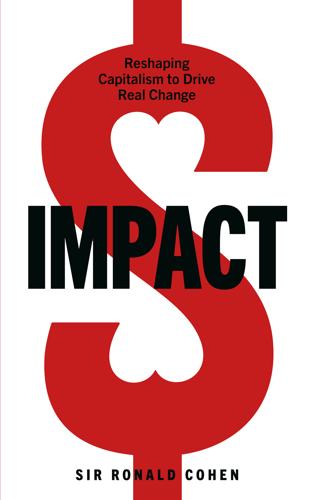
Impact: Reshaping Capitalism to Drive Real Change
by
Ronald Cohen
Published 1 Jul 2020
v=f_P1uoV8R6Q 49 Ibid. 50 https://www.reuters.com/article/nigeria-unemployment-idUSL5N10T29Q20150902 51 https://www.techcityng.com/tolu-komolafe-andela-superwoman/ 52 https://africacheck.org/reports/nigerias-unemployment-rate-18-8-widely-tweeted/ 53 https://www.nytimes.com/2017/10/10/business/andela-start-up-coding-africa.html 54 https://www.cnn.com/videos/tv/2016/11/01/exp-gps-1030-andela-interview.cnn 55 https://medium.com/the-andela-way/hello-world-class-completing-the-andela-fellowship-ace88447d27e 56 https://borgenproject.org/tag/tolulope-komolafe/ 57 https://venturebeat.com/2019/02/11/andela-will-use-ai-to-pair-african-developers-with-high-growth-startups/ 58 https://www.bloomberg.com/news/articles/2019-01-23/al-gore-s-firm-leads-100-million-round-in-african-startup-andela 59 https://www.newyorker.com/magazine/2015/07/20/new-guys 60 https://www.ozy.com/rising-stars/if-she-has-her-way-the-next-bill-gates-will-come-from-lagos/71949 61 https://techcrunch.com/video/andelas-christina-sass-on-growing-tech-talent-in-africa/ 62 Ibid. 63 https://www.forbes.com/sites/forbestreptalks/2018/01/12/andela-aims-to-solve-the-developer-shortage-with-tech-workers-from-africa/#45b9af91764e 64 https://techcrunch.com/video/andelas-christina-sass-on-growing-tech-talent-in-africa/ 65 https://techmoran.com/2015/06/25/spark-capital-makes-first-african-investmentleads-series-a-funding-for-andela/ 66 https://techcrunch.com/video/andelas-christina-sass-on-growing-tech-talent-in-africa/ 67 https://www.prnewswire.com/news-releases/andela-raises-40m-to-connect-africas-engineering-talent-with-global-technology-companies-300533747.html 68 https://www.economist.com/special-report/2017/11/09/technology-may-help-compensate-for-africas-lack-of-manufacturing 69 https://www.bloomberg.com/news/articles/2019-01-23/al-gore-s-firm-leads-100-million-round-in-african-startup-andela 70 https://lifestyle.thecable.ng/tolu-komolafe-andela-programming/ 71 https://www.washingtonpost.com/news/parenting/wp/2017/03/09/reading-writing-and-hunger-more-than-13-million-kids-in-this-country-go-to-school-hungry/ 72 https://www.nytimes.com/2010/01/24/us/24sfpolitics.html?

Avogadro Corp
by
William Hertling
Published 9 Apr 2014
A few seconds later the door was opened by a young man, dressed in an old T-shirt and shorts. He appeared bleary eyed, and in the background Sean could hear what sounded like World of Warcraft. Looking past the man, Sean could see a game controller on the couch and what appeared to be a Costco sized bag of Doritos. All the signs of a newly laid off tech worker, Sean thought to himself. “Hello, how can I...” The young man trailed off, and blinked a couple of times. He looked back into the house, as though he couldn’t believe the visitor could be there for him. He turned back to Sean. “I’m Sean Leonov,” Sean said, introducing himself. “You must be Pete Wong.
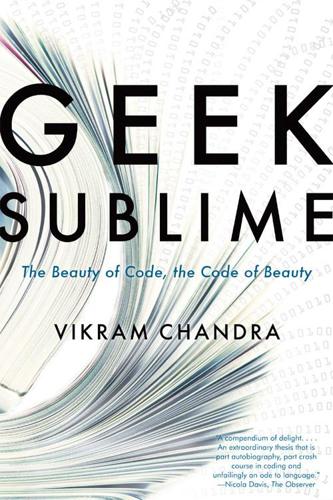
Geek Sublime: The Beauty of Code, the Code of Beauty
by
Vikram Chandra
Published 7 Nov 2013
We don’t want a short order chef, we want a Lord of the Flies, carried by wolves into civilization and raised in a French kitchen full of copper-bottomed pots and fresh-picked herbs.35 “A Lord of the Flies in a French kitchen” neatly catches the geek machismo and extraordinary privilege that are essential ingredients in the cultural paradox that is Silicon Valley. Wages are so high here, Rebecca Solnit reports, that “you hear tech workers complaining about not having time to spend their money.”36 Depending on which San Francisco neighborhood you live in, your rent rose by anywhere from 10 percent to 135 percent over 2012, driven up by young techies outbidding each other.37 In the booming restaurants and cafés, there’s a general disdain for government, which is often described as fatally broken, in desperate need of “disruption,” that condition beloved of programmers and venture capitalists.
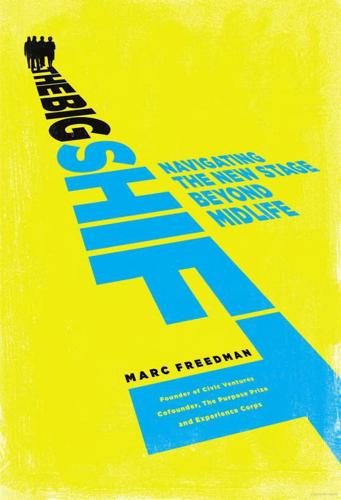
The Big Shift: Navigating the New Stage Beyond Midlife
by
Marc Freedman
Published 15 Dec 2011
The company has since launched vehicles to help employees transition to jobs in government and the nonprofit sector. Meanwhile, onetime math teacher and former Paramount Pictures CEO Sherry Lansing has created the EnCorps Teaching program in California, enabling companies to help former engineering and high-tech workers move into new chapters teaching math and science in public schools. As the Encore Fellowship initiative underscores, Hewlett-Packard has likewise been a pioneer in corporate innovation for the new stage, backing the first fellowship pilot in Silicon Valley. Now Intel, Agilent, and other major corporations have joined in the effort, helping former employees take important steps toward a new stage—simultaneously extending their impact in the community.

The Best Interface Is No Interface: The Simple Path to Brilliant Technology (Voices That Matter)
by
Golden Krishna
Published 10 Feb 2015
This is the way Xerox’s original invention of the graphical user interface was laughed out of the boardroom. Or how about Knight Ridder’s iPad-like device—nearly two decades ahead of its time16—which was so disliked by the newspaper company’s executives that they quickly dissolved the internal, forward-thinking group that created the product. Tech workers aren’t fired for being safe; but while remaining safe, tech companies die. Look at our user base. Blackberry will always be the world’s most popular smartphone. Let’s not change anything. So while we sometimes recall and retell technological history through effortless tales, the reality is that many meaningful technology accomplishments at the most influential companies are the result of successful internal political wins, a slow climb of convincing the right people in the right place at the right time that a good idea is actually good.
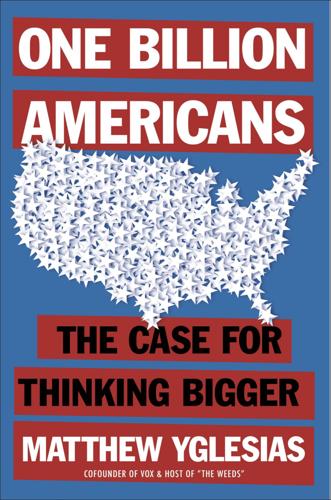
One Billion Americans: The Case for Thinking Bigger
by
Matthew Yglesias
Published 14 Sep 2020
And those incremental residents will have all the usual benefits we’ve rehearsed over and over again—a stronger local tax base, more demand for local services, property values high enough to build wealth and support a local construction industry, as well as higher productivity for native workers. Beyond the obvious case of tech workers, National Renewal Visas could be used to recruit medical professionals, teachers, accountants, and other skilled professionals giving businesses based in cities that opt in to the program a leg up. And over time, some visa recipients would launch their own businesses. Most likely these would mostly be modest undertakings, but at least a few of them could turn into high-growth start-ups that would naturally be attractors for both native-born workers and immigrants.
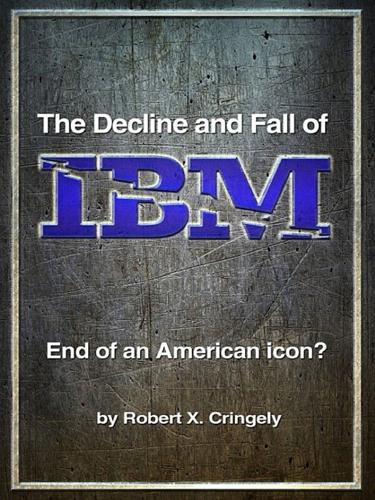
The Decline and Fall of IBM: End of an American Icon?
by
Robert X. Cringely
Published 1 Jun 2014
If 100% of your corporate objective is to pump the stock price (with 0% in creating a skilled and loyal workforce) you will OF COURSE find a penny or two here and there if you need it to make your quarter. Sometime in the next five years, IBM will have a earnings miss, and that will be followed by certain inquiries into accounting practices, followed by restatement of earnings for prior periods. Put it in the bank. Khadijah / May 6, 2012 / 5:48 am Competent tech workers must be a priority I used to work on a lot of outsourcing jobs for IBM, particularly in server and storage management. Although the “billable hours” mindset and foreign labor issues are important, the more immediate issue is having a competent staff in the first place. Although IBM has a lot of warm bodies, the simple fact of the matter is that IBM does not have enough competent staff to deliver on all its outsourcing contracts.

Subscribed: Why the Subscription Model Will Be Your Company's Future - and What to Do About It
by
Tien Tzuo
and
Gabe Weisert
Published 4 Jun 2018
I think Nicholas Carr could have easily been right—thanks to rampant commodification, the tech industry could have been relegated to a steady if underwhelming sector of the global economy. Until 1996 most of the jobs in the tech industry were in manufacturing—you went to work at a fabrication plant, not a hip start-up office. Today nearly 80 percent of tech workers are in services. When an industry embraces this shift, it finds growth. CHAPTER 7 IOT AND THE FALL AND RISE OF MANUFACTURING During the early days of Zuora, we would often sit around a dinner table with a bottle of wine and try to stump ourselves—what can’t you subscribe to? Media and software moving to subscriptions was a no-brainer, but that was all just ones and zeros.

After the New Economy: The Binge . . . And the Hangover That Won't Go Away
by
Doug Henwood
Published 9 May 2005
That touches on an issue that's very important to all the productivity analyses: do we have good measures of hours worked? The BLS, for example, assumes that white-collar workers in high-tech put in a normal forty-hour w^eek. But according to a survey by Info World (emailed to subscribers on February 14, 2003), just 11% of tech workers work "regular" hours; 43% "occasionally" put in extra hours, 18% do so "frequently, and 27% are on call twenty-four hours a day. That's one of the beauties of technology—thanks to laptops, PDAs, and ceU phones, you can never leave the office, because it foUows you everywhere. Trying to quantify the contributions of computers and other high-tech stuff to economic growth is probably a symptom of statistical fetishism at its most advanced.
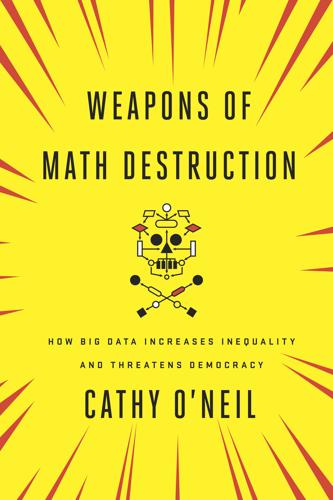
Weapons of Math Destruction: How Big Data Increases Inequality and Threatens Democracy
by
Cathy O'Neil
Published 5 Sep 2016
Following the New York Times report in 2014, Democrats in Congress promptly drew up bills to rein in scheduling software. But facing a Republican majority fiercely opposed to government regulations, the chances that their bill would become law were nil. The legislation died. In 2008, just as the great recession was approaching, a San Francisco company called Cataphora marketed a software system that rated tech workers on a number of metrics, including their generation of ideas. This was no easy task. Software programs, after all, are hard-pressed to distinguish between an idea and a simple string of words. If you think about it, the difference is often just a matter of context. Yesterday’s ideas—that the earth is round, or even that people might like to share photos in social networks—are today’s facts.

The Global Auction: The Broken Promises of Education, Jobs, and Incomes
by
Phillip Brown
,
Hugh Lauder
and
David Ashton
Published 3 Nov 2010
“It seems undeniable,” suggests Paul Krugman, a Nobel Prize winner, “that the increase in the skill premium in the advanced world is primarily the result of skillbiased technological change.”35 Other luminaries like Lawrence Summers reaffirmed this view, claiming that “most of the observed increases in income inequality in the American economy are due to new technology rather than increased trade,” although he does recognize the threat of the global auction.36 The idea that new technologies usually demand higher levels of skill has led economists to present education and technology as a race in which the supply of educated workers needs to keep up with technology-led demand; otherwise, a shortage of skilled workers will lead to a polarization of incomes.37 A major study by Claudia Goldin and Lawrence Katz documents how the supply of educated workers kept pace with demand for much of the twentieth century, which they called the century of human capital. But around 1980, they chart a slowdown in the supply of educated workers while the introduction of new information technologies increased demand for hi-tech workers. This mismatch between supply and demand is used to explain the polarization of incomes between higher- and lower-skill workers, as employers were forced to raise the salaries of qualified employees. As Katz suggests, information technologies are “complementary to workers at the top, a substitute for workers in the middle,” and of little relevance to those at the bottom of the income ladder.38 In line with human capital theory, their remedy is more high-quality education for American 126 The Global Auction workers to close the gap between the supply and demand for skilled labor not simply because it would increase the wages of a large proportion of the workforce but also reduce the cost of skilled labor already in the job market.

12 Bytes: How We Got Here. Where We Might Go Next
by
Jeanette Winterson
Published 15 Mar 2021
The tech gender gap is far less apparent in India, where women enthusiastically take coding courses and degrees in computer science. India is hardly a feminist utopia, but women have been encouraged to take up programming work because it is seen as something a woman can do at home, and that can be fitted in around childcare. Around 34% of tech workers are female, and most of those are under 30. But while the enthusiasm is there, and the capacity is there, the gender pay gap is dramatic. Indian women get hired, but most are not making it past entry roles and into management. A 51% intake of women at entry level translates into 25% at management level, and only 1% at the very top
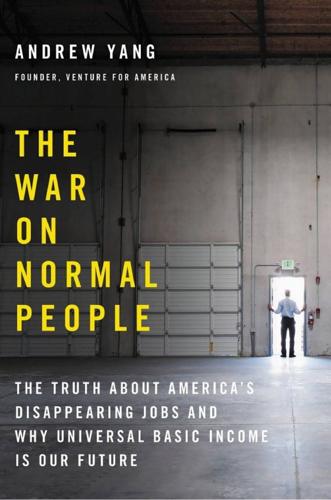
The War on Normal People: The Truth About America's Disappearing Jobs and Why Universal Basic Income Is Our Future
by
Andrew Yang
Published 2 Apr 2018
In San Francisco and Silicon Valley, they don’t advertise where they went to school but the prices are just as exorbitant. Very normal-looking houses go for $2 million plus in Palo Alto and Atherton. The corporate headquarters of Google, Facebook, Airbnb, and Apple are insider tourist attractions. For the average tech worker, you wake up and drive from a leafy suburb to a grounded spaceship and stay there to eat the subsidized gourmet dinner. Or maybe you bike to your downtown office or take the dark-windowed company bus from San Francisco and tap out emails with headphones on. You think about money and housing a lot but don’t talk about it.
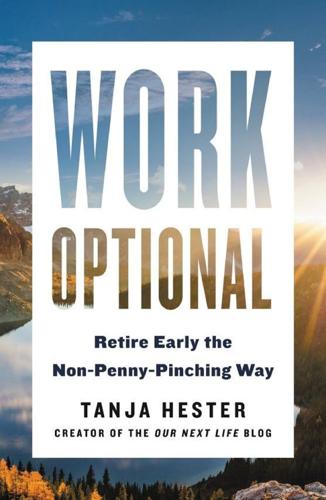
Work Optional: Retire Early the Non-Penny-Pinching Way
by
Tanja Hester
Published 12 Feb 2019
There was a time when I wouldn’t have believed it, but I have since seen it with my own eyes. Every few months, a news story comes out about some family earning six figures who feels like they’re just scraping by. You’ve probably seen the headlines. The family in Manhattan earning $500,000 a year who lives paycheck to paycheck. The tech worker in San Francisco making $200,000 who feels broke because the cheapest apartment she can find costs $6,000 a month. These stories always elicit plenty of well-deserved eyerolls from the vast majority of people who manage to get by just fine on a whole lot less than those folks. But I’ll confess: I understand how this happens, because we experienced a taste of it before we got serious about saving.

Rebel Ideas: The Power of Diverse Thinking
by
Matthew Syed
Published 9 Sep 2019
They had established companies such as Sylvania, Clevite, CBS-Hytron and Raytheon. These firms accounted for a third of the entire nation’s transmitting and special-purpose receiving tubes and a quarter of all solid state devices. In 1987, fifteen years after the song was written, this gap was reversed. Now, Silicon Valley employed more than three times as many tech workers as Route 128. By 2000, the isolated corporate-islands of Boston had all disappeared, somewhat like the technology on Tasmania. We should note that competition between firms (even insular firms) is a form of information discovery at the level of the system. When institutions go head to head, we find out which ideas work and which do not.

I Hate the Internet: A Novel
by
Jarett Kobek
Published 3 Nov 2016
“San Francisco, your future is a vast ethnic ghetto! The Mark Zuckerbergs of the world are working on immigration reform. They don’t give a fuck about Latinos but they love using Latinos as a disguise for their agenda! Their goal is to replace their existing workforce with workers from Asian countries. Because tech workers from Asia will work for one-third the salary! All the low level cogs in the tech industry are so fucked up their own asses that while they were hosting public mournings for net neutrality, they failed to get anything like a political education! They have no idea what’s happening to them! They can’t conceive of the natural path of business!
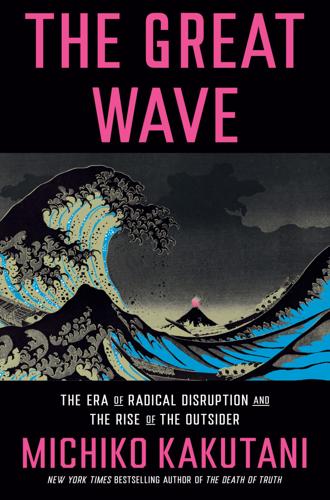
The Great Wave: The Era of Radical Disruption and the Rise of the Outsider
by
Michiko Kakutani
Published 20 Feb 2024
In Israel in 2023, hundreds of thousands of protesters flooded into the streets to demonstrate against Prime Minister Benjamin Netanyahu’s efforts to undercut the power of the Supreme Court—moves that would remove an essential check on parliament and give Netanyahu and his far-right coalition increased power to set the country’s agenda. The protesters who warned that the prime minister’s power grab would undermine Israel’s very identity as a democracy represented a broad swathe of the population including students, teachers, business leaders, tech workers, and members of trade unions and the military. The focus of Netanyahu’s right-wing government on buttressing settlements on the West Bank not only escalated tensions with Palestinians but also diverted Israeli resources away from security concerns associated with Gaza. Hamas’s terrorist massacre of Israeli civilians, experts observed, seemed meant to provoke an Israeli response—resulting in massive death and destruction in Gaza—that would inflame the Arab world, and undermine negotiations between Israel and Saudi Arabia aimed at normalizing relations

The Power Law: Venture Capital and the Making of the New Future
by
Sebastian Mallaby
Published 1 Feb 2022
Available at SSRN: ssrn.com/abstract=1654719 or dx.doi.org/10.2139/ssrn.1654719; and Evan Starr, “The Use, Abuse, and Enforceability of Non-compete and No-Poach Agreements,” Feb. 2019 Issue Brief, Economic Innovation Group. Surveying the literature, Starr cites the telling example of Hawaii, which banned enforcement of non-competes for tech workers in 2015. The result was an increase in labor mobility within the state, with average job tenure falling by 11 percent, implying additional cross-pollination of ideas and more dynamic matching between tech-worker skills and emerging opportunities. A fair verdict would seem to be that nonenforcement of non-compete provisions is healthy for venture-driven trial-and-error startup ecosystems, but that it is not a decisive variable in determining success.

Drowning in Oil: BP & the Reckless Pursuit of Profit
by
Loren C. Steffy
Published 5 Nov 2010
He got the idea from serving on the board of Intel, the California microprocessor manufacturer.20 Intel’s chips were buried deep inside personal computers, and few computer buyers were aware of them. The company launched an aggressive ad campaign, slapping labels on PCs declaring, “Intel Inside.” It made flashy television ads with dancing tech workers in colorful “bunny suits,” the dust-free protective gear worn inside clean rooms. Within a few years, Intel became one of the best-known consumer brands, and Browne was captivated. “People don’t ask whether BP is inside. Maybe some day they will,” he declared in an article in the Harvard Business Review.21 He set about changing BP’s image, starting with the name itself.

Dogfight: How Apple and Google Went to War and Started a Revolution
by
Fred Vogelstein
Published 12 Nov 2013
The one downside of working in Silicon Valley after college used to be living in suburban Mountain View, Palo Alto, or Sunnyvale. City life in San Francisco wasn’t worth the more than two hours of driving it required to live there. Google’s buses, which all have Wi-Fi, make those commutes not only tolerable but some of the most productive hours of the day. So many high-tech workers now live in San Francisco that some of the newest technology companies have followed them. A decade ago companies such as Zynga and Twitter would have automatically located in Silicon Valley. When they started more than six years ago, they located in San Francisco. Benchmark Capital, a top venture capital firm, just opened its first office in their neighborhood too.
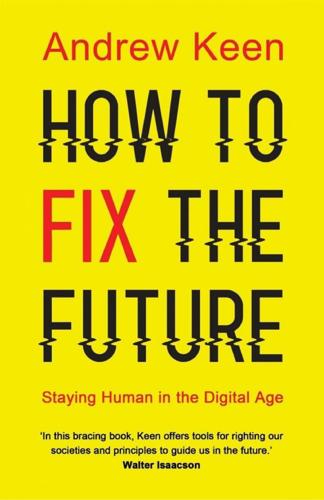
How to Fix the Future: Staying Human in the Digital Age
by
Andrew Keen
Published 1 Mar 2018
One of the world’s leading authorities on technological unemployment is Martin Ford, the Silicon Valley–based author of the acclaimed Rise of the Robots: Technology and the Threat of a Jobless Future,11 which won the Financial Times’ business book of the year award in 2015. Over lunch at a Greek restaurant packed with tech workers in the Silicon Valley city of Sunnyvale, Ford tells me that he imagines the tipping point in terms of mass unemployment will come in fifteen or twenty years’ time, with the crisis hitting low- and high-wage jobs in parallel, particularly such service center jobs as driver, store assistant, and office worker.

Off the Edge: Flat Earthers, Conspiracy Culture, and Why People Will Believe Anything
by
Kelly Weill
Published 22 Feb 2022
For Marshalek, all specifics of Earth’s shape were under consideration until he reached its edge. “I think it’s infinite until proven otherwise,” he said. “If there’s a dome, which many Flat Earthers believe in, I myself want to go out there and see that, take a chunk of the dome.” Like Hughes, Marshalek was making steady, even worrying progress toward setting off on his mission. A tech worker for a major New York City bank, he already had most of the funds saved for his planned expedition by the time we spoke in May 2019. He intended to reach the South Pole (or whatever’s out there) by snowkiting, a technique that involves riding skis while clinging to a large kite or sail that captures the wind.
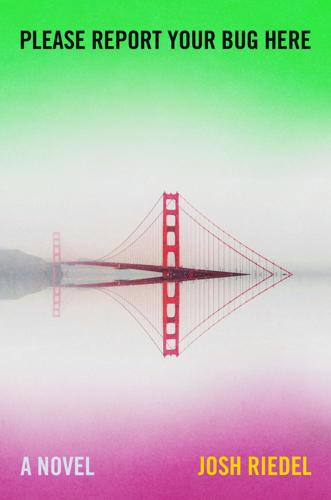
Please Report Your Bug Here: A Novel
by
Josh Riedel
Published 17 Jan 2023
Back in my room, I opened a tiny bottle of Hibiki 17 from the minibar and swished the whisky around in my mouth while I pulled up another famous scene, where Bill Murray films the Suntory commercial. I gave up on my experiment. I conceded that I would have to wake up early, find Robert, and go through the motions of my existence as a corporate tech worker. * * * I fell asleep with my computer open. In the morning, I touched my trackpad to check the time, and Bill Murray was still there, beside me. I rolled over in bed and reached for my phone on the nightstand. The tower is international orange, like the GG bridge, Isabel texted. We texted back and forth, until eventually she asked, “Can you call?”
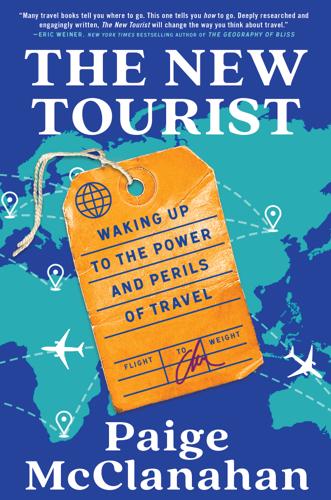
The New Tourist: Waking Up to the Power and Perils of Travel
by
Paige McClanahan
Published 17 Jun 2024
Ada Colau was voted out of office earlier in the year, and she tells me the city’s new mayor is much more in favor of growth in tourism. But Mar’s biggest concern is that Barcelona continues to operate according to an economic model that relies on attracting huge numbers of outsiders—whether as tourists or foreign tech workers—to keep its economy going. But then Mar is excited about something, too: she’s begun working with a network of ten European cities to help them revitalize their city centers. Some of the cities are struggling under the weight of tourism, while others are eager to welcome more visitors. It’s a fascinating discussion, she says, and she hopes the cities in the network will be able to learn from Barcelona’s experiences.
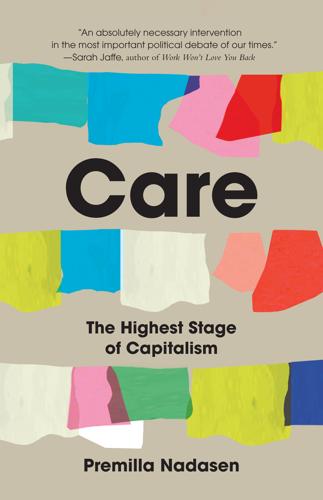
Care: The Highest Stage of Capitalism
by
Premilla Nadasen
Published 10 Oct 2023
It provides health care, vacation time, and eighteen weeks of paid family leave for new mothers and six weeks for new fathers. New parents get “child-bonding bucks” to help with the cost of diapers, food, and formula. Google office buildings have a “Mother’s Room,” backup babysitting, a parent support group, and a parent guru. They also have free infant childcare and onsite childcare for tech workers at their main campus. Google’s benefits cater to the needs of its most privileged employees rather than the least privileged. For example, the company runs four childcare centers at its California campus for employees. But, the childcare workers employed in these centers cannot realistically take advantage of the childcare benefit because of their long commutes, since the cost of housing near Google headquarters is prohibitive.

Disrupted: My Misadventure in the Start-Up Bubble
by
Dan Lyons
Published 4 Apr 2016
The company will go public, and the VCs will make a killing, and the founders will have pocketed their millions. But employees will get little or nothing. By December 2015 Bloomberg will be writing about this phenomenon, in an article headlined, “Big IPO, Tiny Payout for Many Startup Workers.” It might be difficult to feel sympathy for tech workers whining that their company went public and they didn’t become millionaires. It depends on your perspective, and whether you view options as a bonus—a potential windfall—or as part of your compensation. Start-up workers often forgo part of their salary in order to get options and view their options as part of their pay.
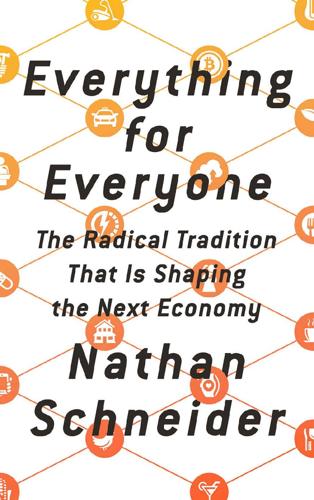
Everything for Everyone: The Radical Tradition That Is Shaping the Next Economy
by
Nathan Schneider
Published 10 Sep 2018
David de Ugarte, “Tipologías de las Cooperativas de Trabajo,” El Jardín Indiano (September 18, 2011); Sebastiano Maffettone et al., “Manifesto” (2012), www.cooperativecommons.coop/index.php/en/manifesto; Janelle Orsi, “The Next Sharing Economy” (October 17, 2014), youtube.com/watch?v=xpg4PjGtbu0; her call was echoed in Brian Van Slyke and David Morgan, “The ‘Sharing Economy’ Is the Problem,” Grassroots Economic Organizing (July 3, 2015); see a directory of North American tech worker co-ops at techworker.coop and coops.tech for the UK; for accounts of the rationale for tech co-ops, see Brian Van Slyke, “The Argument for Worker-Owned Tech Collectives,” Fast Company (November 20, 2013), and Gabrielle Anctil, “Can Coops Revolutionize the Tech Industry?” Model View Culture 34 (March 16, 2016). 16.
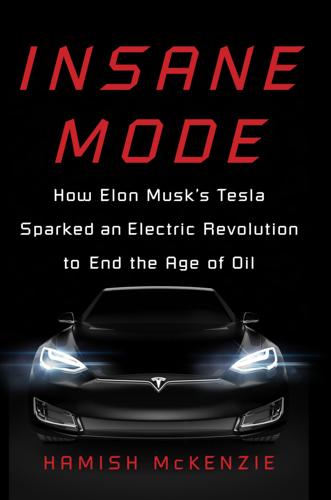
Insane Mode: How Elon Musk's Tesla Sparked an Electric Revolution to End the Age of Oil
by
Hamish McKenzie
Published 30 Sep 2017
And the coolest Internet companies had moved east to Wangjing, congregating around the Zaha Hadid–designed SOHO shopping complex, made up of three impossible-to-miss curved towers that emerge from the ground like the fins of mechatronic whales. Zhongguancun was old-school; Wangjing was new-school. At SOHO, you could find hot app companies such as discount shopping giant Meituan and Ele.me, China’s largest food delivery start-up. At lunchtime, you would be confronted with a rush of tech workers in their twenties sprawling across SOHO’s outdoor plaza in search of food. In the center of the complex was an expansive dancing fountain, with soothing music emanating from hidden speakers. I asked my guide, a young marketing executive at the electric car start-up Singulato Motors, why there was music of mysterious provenance playing so loudly at lunchtime.
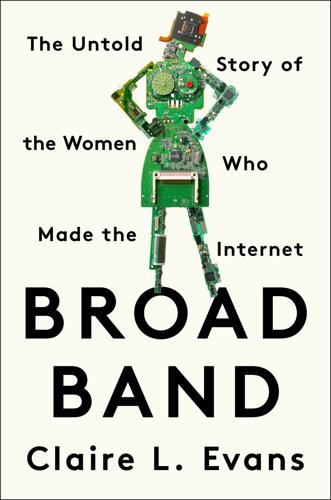
Broad Band: The Untold Story of the Women Who Made the Internet
by
Claire L. Evans
Published 6 Mar 2018
Every day, it posted new industry “fucks,” rating each by severity: layoffs, distressing press releases, and empty offices. One hundred severity points and the company was retired to the Fucked Company Hall of Fame, and likely went bankrupt in real life, but bets could be placed on each progressive lurch toward the end. Nervous tech workers used the site as a barometer, and some even played the game themselves. After the turn of the millennium, the only way to make money on the dot-coms was to gamble on the specifics of their demise. In December 2000, Fucked Company posted a new notice: Women.com, my favorite site for reading about what chicks like, laid off 85 beautiful, bikini-clad ladies.

Late Bloomers: The Power of Patience in a World Obsessed With Early Achievement
by
Rich Karlgaard
Published 15 Apr 2019
Seth Matarasso, a San Francisco–based plastic surgeon: When Matarasso first opened shop in San Francisco, he found that he was mostly helping patients in late middle age: former homecoming queens, spouses who’d been cheated on, spouses looking to cheat. Today, his practice is far larger and more lucrative than he could have ever imagined. He sees clients across a range of ages….Matarasso routinely turns away tech workers in their twenties. A few months ago, a 26-year-old came in seeking hair transplants to ward off his looming baldness. Robert Withers, a consultant who helps Silicon Valley workers over forty with their job searches, recommends that older applicants have a professional photographer take their LinkedIn photos to help disguise their age.
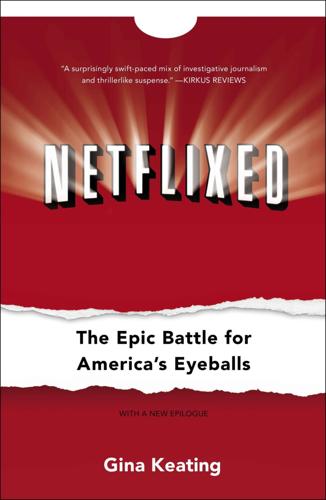
Netflixed: The Epic Battle for America's Eyeballs
by
Gina Keating
Published 10 Oct 2012
Plus, Hastings’s forays into political activism were becoming much more interesting. He helped organize the Palo Alto–based Technology Network lobby group, and became its first president. TechNet had a short agenda: to limit shareholder lawsuits against tech companies over stock volatility; to expand foreign visa quotas for high-tech workers; and to institute education reforms to improve students’ math and science aptitude. Hastings also helped write a California ballot initiative expanding the number of charter schools in the state, and threw the weight of TechNet behind it. The move infuriated the powerful California Teachers Association.

No Rules Rules: Netflix and the Culture of Reinvention
by
Reed Hastings
and
Erin Meyer
Published 7 Sep 2020
In addition, Netflix garnered seventeen nominations at the Golden Globes, more than any other network or streaming service, and in 2019 earned the No. 1 spot as the most highly regarded company in America on the Reputation Institute’s annual national ranking. Employees love Netflix also. In a 2018 survey conducted by Hired (a dot-com marketplace for tech talent), tech workers rated Netflix as the No. 1 company they’d most like to work for, beating companies like Google (No. 2), Elon Musk’s Tesla (No. 3), and Apple (No. 6). In another 2018 “Happiest Employee” ranking, based on over five million anonymous reviews from workers at forty-five thousand large US companies compiled by the staff of Comparably, a compensation and careers site, Netflix was ranked as having the second-happiest employees of the many thousands ranked.

The Future Is Analog: How to Create a More Human World
by
David Sax
Published 15 Jan 2022
For the past few years, I had turned that love into a livelihood as a professional speaker. I delivered talks about my books and related topics for audiences all over the world. I spoke to high school gymnasiums of potato farmers in Washington State, ballrooms of Broadway theater owners in Florida, and even a few dozen tech workers gathered around a roaring fire at my old summer camp. I was represented by a speaking agency and now made most of my income from these talks, but as I crested that biological hill into my forties, I began wondering where my need to perform came from and what it revealed about humans. That question, which I hoped to turn into a book one day, had brought me to Bad Dog, a windowless theater above a post office, filled with half a dozen other misfits, who, by that fateful week in March 2020, had coalesced into a nascent crew of improvisers.

App Kid: How a Child of Immigrants Grabbed a Piece of the American Dream
by
Michael Sayman
Published 20 Sep 2021
Nick smelled like eucalyptus cologne and was swiping through images of women on his phone as he walked toward his car. “Hey, Nick,” I said, falling into step beside him. He looked up, did a double take. “Whoa, man, I thought that was you!” He slapped my back. “You look different!” I shrugged. “Yeah.” Nick was in his late twenties, about six foot five, and—like the majority of Silicon Valley tech workers, who have money to pay for trainers and eat right—annoyingly fit. I wondered if he was judging my newly scrawny body, if he could see the love handles I’d kept from my fat days through my baggy workout clothes. As we walked across the quiet campus he told me he was on his way to a Tinder date.

The Rationalist's Guide to the Galaxy: Superintelligent AI and the Geeks Who Are Trying to Save Humanity's Future
by
Tom Chivers
Published 12 Jun 2019
Anyway, inevitably enough, Scott Alexander’s blog post defending Scott Aaronson blew up and everyone accused Scott Alexander as well as Scott Aaronson of being a sexist entitled nerd. There’s a related problem, which is the ‘women in science, technology, engineering and maths [STEM]’ thing. It’s true that women are comparatively rare in some STEM careers, especially engineering and computer science; a study looking at 1998 data found that only 26 per cent of American tech workers were female.5 (Some reports suggest that the figure has actually gone down since then, to perhaps 20–23 per cent.6) Where the Rationalists (and specifically Scott Alexander, again) have got themselves in trouble is by suggesting that this might have other causes as well as simple discrimination; that it’s not purely that Silicon Valley techbros are keeping women out.

Digital Dead End: Fighting for Social Justice in the Information Age
by
Virginia Eubanks
Published 1 Feb 2011
But this approach to high-tech equity centers the experiences of relatively privileged women, which makes it difficult to understand and account for the experiences of women who inhabit vastly different social 28 Chapter 2 locations—and who thus have vastly different experiences with IT—because of their class, ethnicity, race, sexuality, ability, and nationality. In addition, “women and technology” approaches tend to discount the vast experience most women have with IT by defining users as those who own a personal computer or have access to one in a community center or library and by defining a high-tech worker as someone who has gained entry into the high-status, high-paid world of the knowledge industries. But what about the woman who encounters the back of a computer terminal or a digitized voice on the phone instead of a caseworker when trying to access public benefits? Or the woman working contingent, lowpaying, part-time jobs in data entry and call centers?
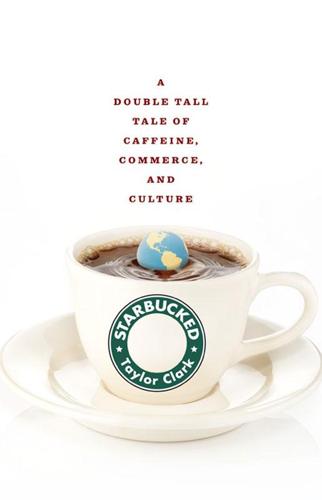
Starbucked: A Double Tall Tale of Caffeine, Commerce, and Culture
by
Taylor Clark
Published 5 Nov 2007
And coffee had another secret weapon in Seattle as well: in the early 1900s, droves of Scandinavians immigrated to the city to work in the fishing industry, and Northern Europeans drink more coffee than anyone else on the planet. Years later, their cultural predilection for coffee hadn’t faded. Add young tech workers with disposable income to the mix, and it becomes obvious why Seattleites took so strongly to the brew. As customer devotion soared to cultish heights, casual observers had to wonder: was this level of fanaticism about a beverage healthy or even rational? Starbucks had always radiated a hint of exclusivity, but this seemed like something else entirely — almost like a religion.

The New New Thing: A Silicon Valley Story
by
Michael Lewis
Published 29 Sep 1999
They could quite easily pick up and go to America, which was paying the highest price for their talent. And, in massive numbers, that is exactly what they did. Indian engineers flooded Silicon Valley in the 1980s and 1990s. By 1996 nearly half of the 55,000 temporary visas issued by the U.S. government to high-tech workers went to Indians. In early 1999 a Berkeley sociologist named AnnaLee Saxenian discovered that nearly half of all Silicon Valley companies were founded by Indian entrepreneurs. The definitive smell inside a Silicon Valley start-up was of curry. So one day when Jim Clark had finished writing his code for the boat, he picked up the phone and called Pavan Nigam and told him about his idea for making him rich.

Practical Doomsday: A User's Guide to the End of the World
by
Michal Zalewski
Published 11 Jan 2022
During the 2007–2009 housing crisis (a comparatively mild recession next to some of the earlier crashes of the 20th century), the number of foreclosures in the United States exceeded 1.6 million,4 with a peak at more than five times the normal annual rate. Part of this involved investors or house flippers purposefully walking away from underwater nonrecourse mortgages, but part involved genuine tears and pain. When it comes to the ability to withstand downturns, high income is not as much of a benefit as many expect. Countless Silicon Valley tech workers collect cozy salaries of $150,000 or more but still live paycheck to paycheck. When the job market dried up overnight in 2007, the number of evictions and foreclosures looked pretty gloomy down here too. Higher cost of living played a role, but so did the phenomenon of lifestyle creep: the tendency to scale up small, everyday purchasing decisions in proportion to one’s income.

Supremacy: AI, ChatGPT, and the Race That Will Change the World
by
Parmy Olson
But ChatGPT could answer pretty much anything eloquently. It was like going from talking to a toddler to a full-blown adult with a college degree. Within the next twenty-four hours, more and more people piled onto ChatGPT, straining its servers and testing its limits. Now it was everyday professionals, tech workers, people in marketing and the media, who were road testing the bot. Itching to make a spectacle on Twitter, they turned their experiments into a public competition to see who could get ChatGPT to write the funniest, smartest, or weirdest text. It was like the fanfare around DALL-E 2 all over again, but bigger.

The Metropolitan Revolution: How Cities and Metros Are Fixing Our Broken Politics and Fragile Economy
by
Bruce Katz
and
Jennifer Bradley
Published 10 Jun 2013
The master plan particularly calls for more density and amenities, including the creation of a vibrant central district, more retail, the building of up to 1,400 multifamily housing units at 06-2151-2 ch6.indd 126 5/20/13 6:53 PM THE RISE OF INNOVATION DISTRICTS 127 the Triangle Commons area, and the possible construction of a light-rail transit line to connect the park with the larger Raleigh-Durham region, as well as a stronger university presence throughout the park.60 As Lydia DePillis notes in a piece titled “Dinosaur Makeover,” “The current generation of tech workers doesn’t want to toil in the soulless Office Space complexes surrounded by moats of parking that dot Research Triangle Park’s sprawling vastness.”61 These examples are not isolated. The “anchor plus” model illustrated by University Park at MIT can be found, to a lesser degree, in San Diego (building from the rich base of Scripps Research Institute, Salk Institute for Biomedical Studies, Burnham Institute, and the University of California at San Diego), St.

Bit Rot
by
Douglas Coupland
Published 4 Oct 2016
But wait. Tesla is sexy. Xapo is kind of sexy. And Houzz is fun. But having said all this, my Bay Area friend Liz continues to write a novel titled Founderfucker, which is about the mothers and daughters of patrician East Coast families going through elaborate rituals to snag socially clueless Valley tech workers with vast amounts of stock—preferably company founders. Get in, have two kids, punch out and…you’re a billionaire! It’s cynical, but at the same time it’s a real thing, all those girls from Brown and Sarah Lawrence, in lambswool sweaters, bored witless, sitting at the kitchen counter, asking earnest questions about motherboards and retail data encryption as they wait for their ten-year stints to come to an end.
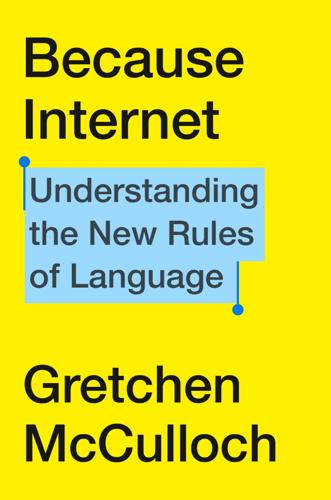
Because Internet: Understanding the New Rules of Language
by
Gretchen McCulloch
Published 22 Jul 2019
The distinctive accents in regions like Boston and Virginia can be traced to founding populations of British settlers from particular regions. But if you get a big enough group of people moving into the same region at the same time, they can alter the local dialect. The vowels of Raleigh, North Carolina, became less Southern after a wave of tech workers from Northern states started arriving in the 1960s, and Cockney has been replaced in working-class central London by Multicultural London English, which draws on a mix of Cockney, Afro-Caribbean English, Indian English, Nigerian English, and Bangladeshi English, especially since many Cockneys moved out to the suburbs after the Second World War.
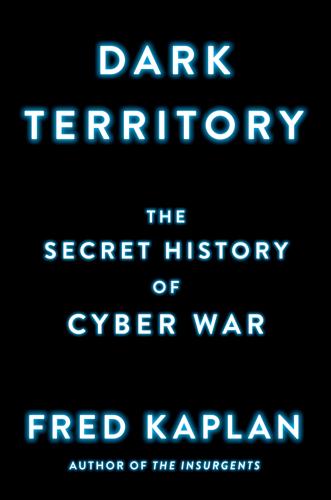
Dark Territory: The Secret History of Cyber War
by
Fred Kaplan
Published 1 Mar 2016
Others, in the NSA, noted that Tehran was in a nearby time zone and made a case for Iran as the hacker’s home. Meanwhile, the FBI was probing all leads. The hacker had hopped through the computers of more than a dozen universities—the University of Cincinnati, Harvard, Bryn Mawr, Duke, Pittsburgh, Auburn, among others—and the bureau sent agents to interview students, tech workers, and faculty on each campus. A few intriguing suspects were tagged here and there—an IT aide who answered questions nervously, a student with a Ukrainian boyfriend—but none of the leads panned out. The colleges weren’t the source of the hack; like the Lawrence Berkeley computer center in Cliff Stoll’s The Cuckoo’s Egg, they were merely convenient transit points from one target site to another.

Don't Be Evil: How Big Tech Betrayed Its Founding Principles--And All of US
by
Rana Foroohar
Published 5 Nov 2019
These partnerships can bring a range of benefits to a campaign, from access to talent and prospective donors to early knowledge of beta products and invitations to participate in pilot programs.”2 But 2016 was the year that Big Tech really blew up the old style of political campaigning. At the 2016 Democratic National Convention in Philadelphia as well as at the 2016 Conservative Political Action Conference (CPAC) in Maryland, Big Tech firms had a huge presence. In Philly, Google took over an entire industrial space where politicians and staff could mingle with tech workers. The company also worked with Republicans like Rand Paul, whose digital director Vincent Harris flew out to Google headquarters for “ideation” sessions on campaign content and advertising. Facebook had prime real estate, too, at both conventions, and also worked “to teach conservative-leaning candidates [at CPAC] how to use its platform to reach new voters.”3 The relationship was rich for both sides.

Sandworm: A New Era of Cyberwar and the Hunt for the Kremlin's Most Dangerous Hackers
by
Andy Greenberg
Published 5 Nov 2019
All across Maersk headquarters, the full scale of the crisis was starting to become clear. Within half an hour, Maersk employees were running down hallways, yelling to their colleagues to turn off computers or disconnect them from Maersk’s network before the malicious software could infect them as it dawned on them that every minute could mean dozens or hundreds more corrupted PCs. Tech workers ran into conference rooms and unplugged machines in the middle of meetings. Soon staffers were hurdling over locked key-card gates, which had been paralyzed by the still-mysterious malware, to spread the warning to other sections of the building. Disconnecting Maersk’s entire global network took the company’s IT staff more than two panicky hours.

file:///C:/Documents%20and%...
by
vpavan
Corporate lobbyists persuaded Congress to hold hearings to condemn the FASB proposal. The pressure from Silicon Valley's high-tech industry, whose lack of revenues and weak profits made cash compensation difficult, was particularly intense. Hundreds of tech executives flew to Washington to lobby. At one point, tech workers held a noisy "rally in the valley," complete with "Stop FASB" signs and T-shirts, to show off their anger. The industry passed around alarming studies predicting that profits would decline, along with economic growth. Even the Clinton administration pressured the FASB to withdraw its rule. Congressional Interference Senator Joe Lieberman, the Connecticut Democrat who would become Al Gore's running mate in 2000, led the charge against the FASB rule.
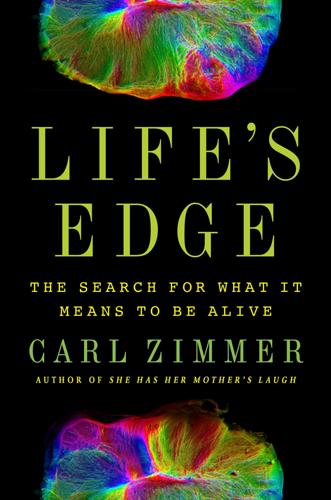
Life's Edge: The Search for What It Means to Be Alive
by
Carl Zimmer
Published 9 Mar 2021
I like to do experiments. I like to watch things happen. I just think, ‘What’s the next simple thing I can do?’” When we got to Santa Cruz, I could see that the damage from the earthquake had healed over since my last visit. But other fissures had opened up since then, ones that would be harder to fix. Wealthy tech workers priced out of Silicon Valley had streamed over the mountains, offering a million dollars for a petite bungalow. Near the town bus station I watched a woman slowly wander barefoot, mimicking a cigarette to passersby as a silent request. Deamer did not take me to the redwood grove where his university laboratory had once been.

Filterworld: How Algorithms Flattened Culture
by
Kyle Chayka
Published 15 Jan 2024
“What if this seemingly accidental—and usually regretted—homogenization was an intentional process, a conscious movement away from difference toward similarity? What if we are witnessing a global liberation movement: ‘down with character!’ ” Koolhaas’s generic city is the place that all urban residents inhabit, with gentrified AirSpace buildings and coffee shops; coworking spaces serving tech workers; and the same set of restaurants and bars. It is the familiar place we arrive at, stepping off a plane, rolling through an airport, and taking a car to a loft-style hotel, where we check in using our phone. Koolhaas poses the international flattening of identity as something that can be positive, or at least include its own advantages: “The stronger identity, the more it imprisons, the more it resists expansion, interpretation, renewal, contradiction.”

Crack-Up Capitalism: Market Radicals and the Dream of a World Without Democracy
by
Quinn Slobodian
Published 4 Apr 2023
What the Financial Times called Dubai’s “paradoxical blend of laissez-faire and rigid authoritarianism” was no paradox to right-wing libertarians.13 One German anarcho-capitalist wrote that Dubai was the best evidence that Hans-Hermann Hoppe was right: monarchy was superior to democracy, since monarchs tended to the long-term wealth of their territories while elected officials plundered theirs during their time in office.14 Two Dutch anarcho-capitalist authors wrote that the absence of democracy was not a problem but rather the key to the city-state’s success. Elections would only decrease economic freedom.15 The meteoric rise of Dubai offered the best evidence yet that democracy and capitalism need not go together. Perhaps the most impassioned take on the emirate came from the self-described neo-reactionary and tech worker Curtis Yarvin, who blogged under the pseudonym Mencius Moldbug and moved in the same circles as Patri Friedman and Peter Thiel.16 Along with Singapore and Hong Kong, Dubai proved to Yarvin that “politics is not necessary to a free, stable and productive modern society.”17 Dubai was run like a business, and this was as it should be, he said.
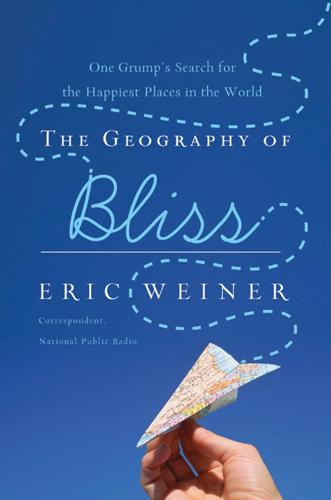
Geography of Bliss
by
Eric Weiner
Published 1 Jan 2008
“How do they do business with all of these power cuts?” “Oh, come on,” says Viki, as if I were terribly naïve, which of course I am. “They have supergenerators, triple redundancy. They’re on a separate grid, their own grid.” “The entire IT world is on a separate grid,” says Chandra, and he’s clearly not talking only about electricity. The high-tech workers, those who have made it big, live in gated communities with names like Dollar Colony. They shop in malls, which also have their own generators. They worship Lakshmi, the goddess of wealth. Every old building in Bangalore that is torn down is replaced with an office park or a shopping complex.

Why We Drive: Toward a Philosophy of the Open Road
by
Matthew B. Crawford
Published 8 Jun 2020
Uber, for instance, encountered difficulty in its deployment of self-driving cars in Pittsburgh, due to a certain “baffling idiosyncrasy” of that city’s drivers known as the “Pittsburgh left.” Apparently it is a matter of some civic pride for Pittsburghers that when the light turns green, they allow a car headed in the opposite direction to turn left before proceeding through an intersection. “I’m a big believer in the Pittsburgh left,” the mayor said, to the consternation of tech workers brought in from elsewhere to work on Uber’s project. The programmers of driverless cars wonder whether they should instruct them to wait a couple of seconds after a light turns green before proceeding. But of course, that in itself could cause testy reactions from other drivers, if turned into a rule.
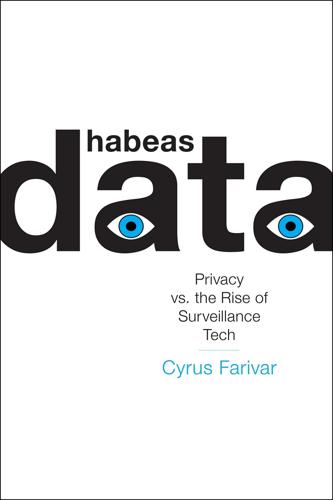
Habeas Data: Privacy vs. The Rise of Surveillance Tech
by
Cyrus Farivar
Published 7 May 2018
Rigmaiden spent weeks at a time camping in the Los Padres National Forest, a large swath of land that stretches from near his childhood home in Monterey, down the coast hundreds of miles to Ventura, California, one county north of Los Angeles. He’d only pop back up in cities when he needed to use the Internet or withdraw cash. In late 2007, Rigmaiden moved to Santa Clara. The city, then as now, is home to students and lots of tech workers. He had a comfortable life in an urban area, and lived near a train station and airport should he need to make a quick getaway. “I didn’t want to go through the stress of moving again,” he thought to himself, as he considered perhaps staying there long term. But he knew that the longer he stayed in one place, the more exposed to law enforcement he would be.
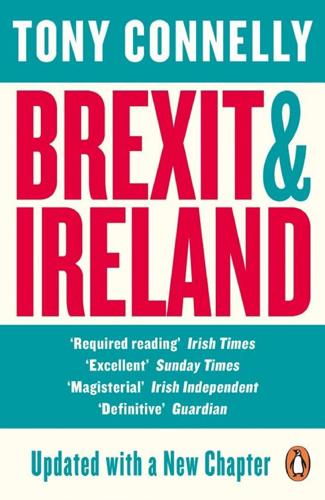
Brexit and Ireland: The Dangers, the Opportunities, and the Inside Story of the Irish Response
by
Tony Connelly
Published 4 Oct 2017
The North had voted to remain in the EU – could it? The 30,000 people who cross the border every day to work – would they have to show passports? Sterling was plunging; exporters would feel the effects within days, because their goods were more expensive in the most important market. A frantic tech worker wondered if he could be stopped crossing a notional new border because he was carrying ‘intellectual property’. It quickly became clear that the delicate constitutional settlement that had underpinned relations between the island of Ireland and the United Kingdom was shifting underfoot. Martin McGuinness, the Deputy First Minister of Northern Ireland, called almost immediately for a referendum on a United Ireland.

On the Clock: What Low-Wage Work Did to Me and How It Drives America Insane
by
Emily Guendelsberger
Published 15 Jul 2019
Nearly every review of my store mentions the homeless, because they are a very aggressive presence. Many are loudly and energetically mentally ill, very persistent about panhandling, strung out, or all three. There’s a surreality to the Sixth District because its huge homeless population coexists with the city’s highest concentrations of skyscrapers, venture capital, tech workers, rich foreign tourists, high-end shopping, and, in my anecdotal experience, Teslas. The contrast between all the wealth and the homeless tent encampments, urine smell, and syringe detritus is truly bizarre. I don’t mind the job job of McDonald’s so far. I have literally zero time to lean outside of what’s mandated by law, but I do get genuine satisfaction from making customers happy, and that’s a lot easier here than it was at Convergys.

The Ransomware Hunting Team: A Band of Misfits' Improbable Crusade to Save the World From Cybercrime
by
Renee Dudley
and
Daniel Golden
Published 24 Oct 2022
As the United States and European nations rallied around Ukraine, there was widespread speculation that Russia would retaliate with cyberattacks. Russian prosecutors appeared to drop the case against the REvil attackers and considered a deal that would draft them to fight Ukraine on the cyber front. With Russia’s economy battered by Western sanctions, it seemed likely that some former tech workers might compensate for lost jobs and income by turning to ransomware. If so, they might shroud their nationality because fewer ransomware victims may be inclined to reward Russian gangs. Unwilling to pay the Putin-geld, Western businesses, schools, hospitals, and government agencies disabled by ransomware would need the Ransomware Hunting Team more than ever
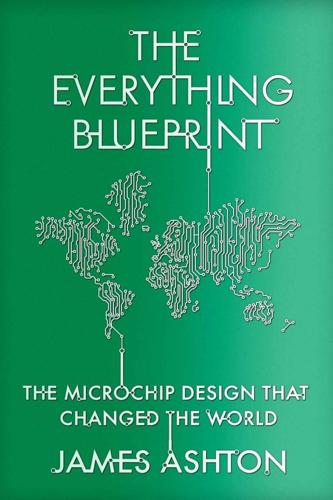
The Everything Blueprint: The Microchip Design That Changed the World
by
James Ashton
Published 11 May 2023
GOING GLOBAL: SOME FURIOUS SOVEREIGN SPENDING 1 https://www.taiwannews.com.tw/en/news/4360807 2 https://investor.tsmc.com/static/annualReports/2021/english/index.html 3 https://www.electronicsweekly.com/news/business/771343-2021-04/ 4 https://www.scmp.com/tech/big-tech/article/3130628/tsmc-founder-morris-chang-says-chinas-semiconductor-industry-still 5 https://www.theregister.com/2022/03/14/taiwan_china_tech_worker_raids/ 6 https://www.reuters.com/technology/us-considers-crackdown-memory-chip-makers-china-2022-08-01/ 7 https://press.armywarcollege.edu/cgi/viewcontent.cgi?article=3089&context=parameters 8 https://www.youtube.com/watch?v=BtYYGcoyWX4 9 https://www.canalys.com/newsroom/Canalys-huawei-samsung-worldwide-smartphone-market-q2-2020?

Machines of Loving Grace: The Quest for Common Ground Between Humans and Robots
by
John Markoff
Published 24 Aug 2015
Today, Microsoft’s corporate campus is a sprawling set of interlocking walkways, buildings, sports fields, cafeterias, and parking garages dotted with fir trees. In some distinct ways it feels different from the Googleplex in Silicon Valley. There are no brightly colored bicycles, but the same cadres of young tech workers who could easily pass for college or even high school students amble around the campus. When you approach the elevator in the lobby of Building 99, where the firm’s corporate research laboratories are housed, the door senses your presence and opens automatically. It feels like Star Trek: Captain Kirk never pushed a button either.

More Everything Forever: AI Overlords, Space Empires, and Silicon Valley's Crusade to Control the Fate of Humanity
by
Adam Becker
Published 14 Jun 2025
But because those datasets are so large, it’s impossible for any human to go over everything in the data. Any biases in the datasets themselves can easily go undetected. And that’s ignoring other sources of bias, like the programmers themselves. The entire US tech industry is overwhelmingly white—68.5 percent of all people in the field—and overwhelmingly male. Less than 36 percent of all tech workers are women, only 7.4 percent are Black, and only 1.7 percent are Black women.111 When your entire professional life is filled with people who look like you, and when people who look a different way and have a different set of life experiences are entirely excluded, it’s easy to forget about their perspectives.

The Optimist: Sam Altman, OpenAI, and the Race to Invent the Future
by
Keach Hagey
Published 19 May 2025
“Prices are high and valuations are high,” Graham told a conference soon after the announcement.4 It was not just that Dropbox and Airbnb were now valued at more than $10 billion, and Stripe at nearly $2 billion. The average value of a YC-funded startup was now more than $22 million, and one of the graduating companies from the last batch had been valued at $50 million.5 As startups filled offices in San Francisco, tech workers flooded formerly edgy neighborhoods like the Mission, pushing up the city’s median home price above $1 million. For the first time, there were more “ultrarich” people, defined as having assets of at least $30 million, in San Francisco than Los Angeles.6 Despite what felt like very high prices, Altman and Thiel agreed to buy out a portion of Graham’s stake in Y Combinator as he departed.

The Myth of the Rational Market: A History of Risk, Reward, and Delusion on Wall Street
by
Justin Fox
Published 29 May 2009
In 1993, the board made the proposal formal: Employee stock options would be valued when granted using the Black-Scholes model, and this amount counted as a charge against earnings. Corporate America, which was then just coming around en masse to options, protested. In Silicon Valley, where options grants penetrated most deeply into the workforce, tech workers held an anti-FASB rally in 1994. “Give stock a chance!” shouted Kathleen Brown, then California’s treasurer and a gubernatorial candidate, to cheers from the crowd. “Don’t stop the engine of economic growth that has absolutely fueled this California economy!” At a public hearing at the FASB’s headquarters in Connecticut, CEO after CEO argued that options had no value, and that expensing them would hurt the economy.
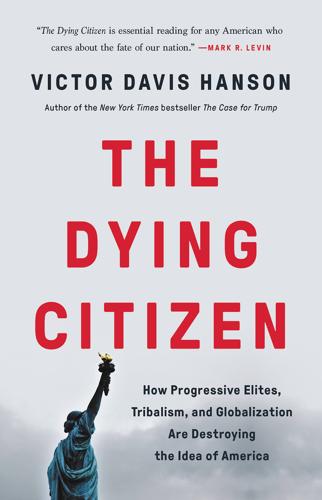
The Dying Citizen: How Progressive Elites, Tribalism, and Globalization Are Destroying the Idea of America
by
Victor Davis Hanson
Published 15 Nov 2021
In sum, globalization rests on a few poorly examined laws: those who draft globalized rules for others have the resources to navigate around them. Discussions of abstract cosmic challenges—achieving world peace, cooling the planet, lowering the seas, dismantling secure borders—are psychological ways to square the circle of failure to solve concrete problems at home from war to poverty. Wealthy tech workers in San Francisco hold frequent conferences and symposia about addressing water, sewage, and disease in Africa, but they have demonstrated no ability to address California’s own fetid city streets, which are home to over three hundred thousand homeless and rife with medieval diseases, refuse, excrement, and rodents.
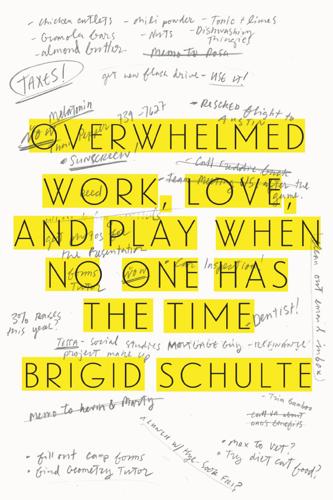
Overwhelmed: Work, Love, and Play When No One Has the Time
by
Brigid Schulte
Published 11 Mar 2014
To Trudi Schraner, Elaine Bergmann, Angelika Olsen, Meg Connelly, Deb Riley, Leslie Turley, Amy Young and David Malakoff, Kathryn Klvana, Kathy Poor, Mark Sullivan, Nancy Needell, Lisa Shuchman, Fara Courtney, Wendy Moniz, and MOAB, the Mothers of Abracadabra, for reading drafts, letting me pick their brains, connecting me with others who became instrumental for the book, and offering truthful and invaluable feedback. To Jon Tilove and Jo Ann Moriarty, who fed me bagels and lox when I got stuck. To Ann Killion and Matt Gillespie, who not only connected me with high-tech workers but graciously let me and my “sewing machine” of a rental car crash at their beautiful house in the Bay Area. To Matthew Hirschmann and Lisa Carey for offering insights on cover design. To the Ragnar Van on the Run crew, the Binders Full of Fun Women, Alexandria Community Rowing, and Sandy Timmons and the B & RB group, for keeping my head clear, and the Del Ray Dads.

The Lonely Century: How Isolation Imperils Our Future
by
Noreena Hertz
Published 13 May 2020
‘What I feel Mission Pie always offered was the chance to be around people and feel community even when you wanted some solitude,’ Kimberly said. Yet outside the walls of Mission Pie, San Francisco was shifting in another direction. The tech economy, having outgrown its original Silicon Valley base, expanded into the city bringing with it an influx of highly paid tech workers. This drove up rent and housing prices, making it one of the most expensive American cities to live in.29 The financial pressure was particularly acute for residents and business owners in neighbourhoods like the Mission District, where Mission Pie was located, an area with a distinctly Latino heritage and a sizeable lower-income constituency, located just two short miles from the Mid-Market neighbourhood where corporations such as Twitter, Uber and Zendesk had moved in during the early 2010s, lured by attractive tax breaks.30 And with the shift in the city’s demographics came a change too in how people interacted with local businesses, particularly with local cafés and restaurants.
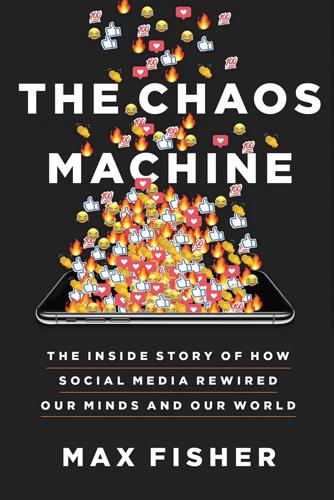
The Chaos Machine: The Inside Story of How Social Media Rewired Our Minds and Our World
by
Max Fisher
Published 5 Sep 2022
Celina Ribeiro, Wired, August 30, 2020. 20 39 percent of Australians: Digital News Report: Australia 2020, University of Canberra News & Media Research Centre, 2020. 21 Much more had gone dark: “Facebook’s New Look in Australia: News and Hospitals Out, Aliens Still In,” Damien Cave, New York Times, February 18, 2021. 22 “calculated for impact”: Tweet by Evelyn Douek (@evelyndouek), February 17, 2021. twitter.com/evelyndouek/status/1362171044136710144 23 Human Rights Watch described: Tweet by Sophie McNeill (@sophiemcneill), February 17, 2021. twitter.com/Sophiemcneill/status/1362187114431975426 24 Australian lawmaker warned: Tweet by Anthony Albanese (@albomp), February 17, 2021. twitter.com/AlboMP/status/1362177819304812544 25 “likely be unable to offer”: “Meta Says It May Shut Down Facebook and Instagram in Europe over Data-Sharing Dispute,” Sam Shead, CNBC, February 7, 2022. 26 “life has been fantastic”: “We’re Fine without Facebook, German and French Ministers Say,” William Horobin and Zoe Schneeweiss, Bloomberg News, February 7, 2022. 27 40 percent of the big-tech workforce: “How Tech Workers Feel about China, AI and Big Tech’s Tremendous Power,” Emily Birnbaum and Issie Lapowsky, Protocol, March 15, 2021. 28 For months, she had been in touch: “Inside the Big Facebook Leak,” Ben Smith, New York Times, October 24, 2021. 29 “I just don’t want to agonize”: “The education of Frances Haugen: How the Facebook Whistleblower Learned to Use Data as a Weapon from Years in Tech”, Cat Zakrzewski and Reed Albergotti, Washington Post, October 11, 2021. 30 “Facebook has realized”: “Whistleblower: Facebook Is Misleading the Public on Progress against Hate Speech, Violence, Misinformation,” Scott Pelley, 60 Minutes, October 4, 2021. 31 “We can have social media we enjoy”: Frances Haugen Opening Statement, Senate Hearing on Children and Social Media, October 5, 2021. 32 “What we see in Myanmar”: Zakrzewski and Albergotti, October 2021.

When McKinsey Comes to Town: The Hidden Influence of the World's Most Powerful Consulting Firm
by
Walt Bogdanich
and
Michael Forsythe
Published 3 Oct 2022
When in fact, he added, the group was trying “to provide an intellectual gloss” on a profit-making endeavor. “They love to focus on the winning side while ignoring or pretending there isn’t even a losing side,” Bivens said. Concerned about the loss of American jobs, Congress held hearings on outsourcing, including one on June 14, 2007, where Marcus Courtney, representing tech workers, estimated that between 3.3 and 14 million service industry jobs were vulnerable to offshoring. Courtney cited one published report that said already more than 1.1 million jobs in software, semiconductors, and telecoms had left the country in the previous five years. McKinsey acknowledged that some American workers may suffer in the short term, but said that shouldn’t overshadow the benefits.

Seven Crashes: The Economic Crises That Shaped Globalization
by
Harold James
Published 15 Jan 2023
In rich countries, some workers, especially older ones, left the labor market in order to pursue new strategies of self-development, often connecting with new ideas and new spiritualities from other countries. Elsewhere, the possibility of remote work allowed individuals to withdraw from crisis-ridden national markets and work internationally and virtually, for foreign currency, rather than in local occupations. Particularly tech workers saw Covid as a new possibility for entering a global labor market. Thus as Turkey hit an inflationary crisis and the value of the currency fell, young Turks shifted to working for foreign companies in a virtual brain drain, or a new form of globalization of the labor market.60 Addressing the issue of a permanently transformed labor market as simply one of overall wages and prices, or overall unemployment, made little sense.

I'm Feeling Lucky: The Confessions of Google Employee Number 59
by
Douglas Edwards
Published 11 Jul 2011
No wonder social networking took root here; we're one big interconnected family whose members are always happy to find out how we're related to one another. "He's a first employer once removed on the Intel side." "She used to be my assistant at Sun, but she left me for some hot new startup over in Cupertino." A surprising number of tech workers have friends and lovers with whom they share intimacy but not the details of their office lives. Google was no more immune to the lure of fraternization within the building than it was to relationships that crossed competitive lines. There were romances. There were marriages. On occasion, there were affairs.

Chaos Monkeys: Obscene Fortune and Random Failure in Silicon Valley
by
Antonio Garcia Martinez
Published 27 Jun 2016
If female servants became pregnant, their contract was extended to compensate for the time out of work. At the end of the contract, servants were given their “freedom dues” (a small cash payment) and set free to seek their fortunes in their new homeland. Not much has changed in Silicon Valley. Skilled immigrant tech workers in the United States have effectively one method of entry: the famous H-1B visa. Capped at a small yearly number, it’s the ticket to the American Dream for a few tens of thousands of foreigners per year. Lasting anywhere from three to six years, the H-1B allows foreigners to prove themselves and eventually apply for permanent residency, the colloquial “green card.”

Connectography: Mapping the Future of Global Civilization
by
Parag Khanna
Published 18 Apr 2016
Building campuses for knowledge industries is so important for the Philippines that it has set up a parastatal Bases Conversion Development Authority to turn military facilities such as Clark Base near Manila into zones for small and medium-sized enterprises (SMEs), start-ups, and joint domestic-foreign R&D centers. If it can train tech workers at a higher standard on its own soil, it is less likely to lose them to brain drain. If the government cannot make basic infrastructure investments or harness its natural resources and human capital, it can at least become a facilitator for the private sector to maximize the country’s comparative advantages.

Economic Dignity
by
Gene Sperling
Published 14 Sep 2020
Department of Labor Investigation Recovers $173,044 in Wages for 12 Technology Employees Due to Violations of the H-1B Visa Program,” news release, May 1, 2018, https://www.dol.gov/newsroom/releases/whd/whd20180501-2. 109. Maria L. Ontiveros, “H-1B Visas, Outsourcing and Body Shops: A Continuum of Exploitation for High Tech Workers,” Berkeley Journal of Employment & Labor Law 38, no. 1 (March 2017): 43–44. 110. Matt Marx, “The Firm Strikes Back: Non-compete Agreements and the Mobility of Technical Professionals,” American Sociological Review 76, no. 5 (October 2011): 695–712. 111. Dave Jamieson, “Jimmy John’s Makes Low-Wage Workers Sign ‘Oppressive’ Noncompete Agreements,” Huffington Post, October 13, 2014, https://www.huffpost.com/entry/jimmy-johns-non-compete_n_5978180?

Daemon
by
Daniel Suarez
Published 1 Dec 2006
But it’s trying to find out—because I’m the only one fighting it.” Merritt regarded him. “So, who are you, Mr. Ross?” “I already told you, no one—” “I don’t want your name. I want to know who you are.” They walked on for a while in silence, Ross considering the question. Before long he turned to Merritt. “I came here on an H1-B visa.” “A foreign tech worker?” “Yes. I was brought in for Y-two-K remediation and stayed through the Internet bubble. They billed us out as expert developers to large multinational corporations at two hundred and twenty dollars an hour.” “Who billed you out?” “The Russian mafia.” Merritt let out an involuntary laugh. Ross sighed.

Good Economics for Hard Times: Better Answers to Our Biggest Problems
by
Abhijit V. Banerjee
and
Esther Duflo
Published 12 Nov 2019
Average rents for one-bedroom apartments have been going up steeply, from $1,900 in 2011 to $2,675 in 2013 and $3,250 in 2014.77 Today, the average rent of an apartment in the Mission District puts it entirely out of reach for someone earning minimum wage.78 The “Mission yuppie eradication project,” a last-ditch effort to drive tech workers away by vandalizing their cars, drew considerable attention to the gentrification of the Mission District, but ultimately was doomed.79 Of course, more houses can be built near booming cities, but it takes time. Moreover, many of the older cities in the United States have zoning regulations designed to make it hard to build up or build densely.
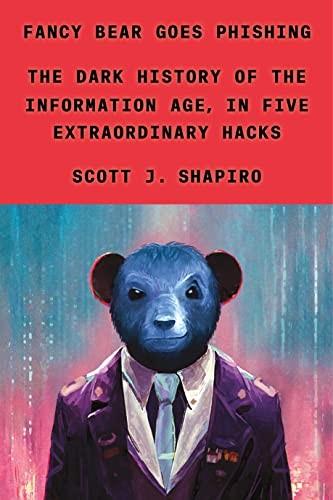
Fancy Bear Goes Phishing: The Dark History of the Information Age, in Five Extraordinary Hacks
by
Scott J. Shapiro
fled the country: Jane Arraf, “Russia Is Losing Tens of Thousands of Outward-Looking Young Professionals,” The New York Times, March 20, 2022; Masha Gessen, “The Russians Fleeing Putin’s Wartime Crackdown,” The New Yorker, March 20, 2022, https://www.newyorker.com/magazine/2022/03/28/the-russians-fleeing-putins-wartime-crackdown. especially severe: Anthony Faiola, “Mass Flight of Tech Workers Turns Russian IT into Another Casualty of War,” The Washington Post, May 1, 2022. “Fucking Visa”: Brian Krebs, Spam Nation (Naperville, IL: Sourcebooks, 2014), 251. Bitcoin: For the original white paper, see the (pseudonymous) Satoshi Nakamoto, “Bitcoin: A Peer-to-Peer Electronic Cash System,” https://bitcoin.org/bitcoin.pdf.

Fodor's Oregon
by
Fodor's Travel Guides
Published 13 Jun 2023
On a related note, the city maintains a strong appreciation for artisanal craftsmanship, which encompasses everything from coffee, beer, chocolate, and other edibles (Oregon was one of the earliest states to legalize recreational marijuana) to furniture, jewelry, apparel, and household goods. These touchstones of modern urbanism have made Portland the kind of place that younger creative spirits, tech workers, and artists want to visit and live in. Planning When to Go Portland’s mild climate is best from June through September, when rain is a rarity and sunny days seem to go on forever. Hotels can fill up quickly during this period, and although a recent hotel building boom has greatly helped to increase supply and soften rates, it’s still a good idea to book reservations in advance.

The Rough Guide to Berlin
by
Rough Guides
The biggest phenomenon in recent years, though, has been the rise of the local start-up scene, which in 2016 spanned around 2500 companies, collected €2.4 billion in venture capital in the previous year (as well as subsidies from the Federal Ministry of Finance) and has spawned social hubs such as Factory Berlin, which houses seven hundred mostly millennial tech workers in a former nineteenth-century brewery, and events such as Tech Open Air. Despite its fast and impressive growth, though, the scene remains comparatively small, and major successes have been few and far between. Meanwhile information technology parks in the southern suburbs continue to grow, as has the research and development sector, thanks largely to the presence of three universities in the city.
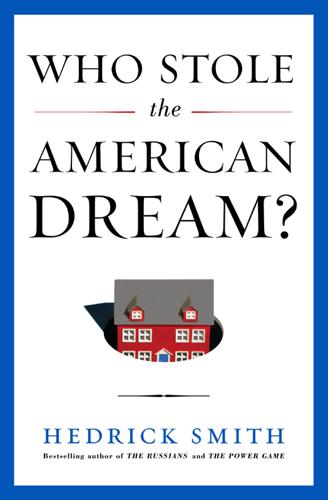
Who Stole the American Dream?
by
Hedrick Smith
Published 10 Sep 2012
To try to curb the importing of foreign workers, Senator Charles Schumer proposed in August 2010 to more than double the H-1B visa fees to $3,750 a head. The New York Democrat lauded companies such as Oracle, Cisco, and Apple for using the H-1B visa program as intended and then sharply attacked firms that violate the spirit of the law by operating “a glorified international temp agency for tech workers.” Schumer claimed that he was not trying “to target Indian companies,” but to penalize firms whose business model was built around importing H-1B workers—a description that mostly fit Indian companies and a few American firms that copied the Indian business model. As Congress passed Schumer’s legislation, the Indian IT industry, treating Schumer’s bill as a salvo at them, protested that the United States was violating international trade practices.
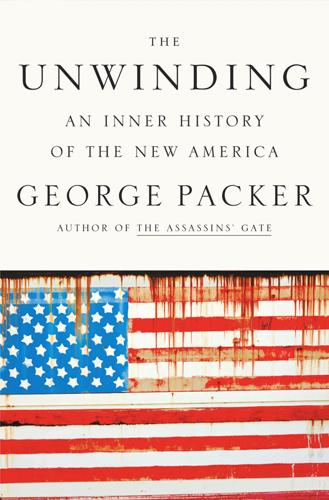
The Unwinding: An Inner History of the New America
by
George Packer
Published 4 Mar 2014
“Tarkovsky is famous for painfully long takes, creating an environment that’s uncomfortable without it being clear why.” Ray lived alone in a one-bedroom apartment. He was an inconspicuous person—small of stature, with short-cropped hair, drab clothes, and a mild manner. After his parents died, he became something of a hermit, with few friends. On the other hand, a lot of tech workers were antisocial. The information economy employed millions of skilled, culturally literate, freelance oddballs. As long as the new economy made room for him, Ray lived the life he wanted. When the recession hit, tech jobs in Seattle started drying up. After the death of the owner of his main client, a company that hired him to do DVD customization, Ray found that he no longer had contacts for other work.

Aerotropolis
by
John D. Kasarda
and
Greg Lindsay
Published 2 Jan 2009
He expects to crack four hundred thousand miles aloft this year upholding a code best expressed by one of John Kasarda’s old professors at Cornell: “Never consummate a deal until you can look them in the eye. Only then will you know if you’re doing the right thing.” No one knows Kasarda’s Law better than the technology executives themselves; in the irony of ironies, they’re some of the most itinerant commuters of all. His studies have shown high-tech workers flying 400 percent more often than civilians, especially between industry hotbeds like Silicon Valley, Austin, Boston, and Raleigh-Durham. American Airlines started running “Nerd Birds” in the early nineties after Cypress Semi-conductor’s founder, T. J. Rodgers, complained about connecting through DFW week after week.

The Man Behind the Microchip: Robert Noyce and the Invention of Silicon Valley
by
Leslie Berlin
Published 9 Jun 2005
Noyce nonetheless proclaimed SEMATECH a “bargain” for the American people—taken together, he pointed out, the consortium’s total annual federal funding would buy only half a B-1 bomber.15 SEMATECH established temporary headquarters in Santa Clara and soon a site-selection committee issued a request for proposals for a permanent site. They expected perhaps a dozen responses but received proposals from some 135 locations in 34 states, all of them lured by SEMATECH’s plan to employ nearly 800 high-tech workers who would collaborate on research and work in the brand new, multimillion-dollar, state-of-the-art fab that SEMATECH planned to build in order to simulate the “realistic production conditions” to which Noyce referred in his Senate testimony.16 286 THE MAN BEHIND THE MICROCHIP The prospect of such a high-profile, high-tech anchor offered a singular appeal to the regions vying for the SEMATECH site.
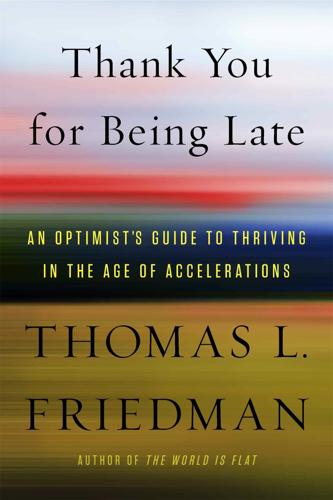
Thank You for Being Late: An Optimist's Guide to Thriving in the Age of Accelerations
by
Thomas L. Friedman
Published 22 Nov 2016
And now you can pair that with Bigbelly garbage cans, which are loaded with sensors that wirelessly announce when they are full and in need of being emptied—so the garbage collectors can optimize their service routes and the city can become cleaner for less money. Yes, even the garbageman is a tech worker now. The company’s website notes that “each Bigbelly receptacle measures 25" W × 26.8" D × 49.8" H and uses built-in solar panels to run motorized compactors, which dramatically reduce waste volumes to help create greener, cleaner streets … The receptacles have built-in cloud computing technology to digitally signal to trash collectors that they have reached capacity and need immediate attention.”
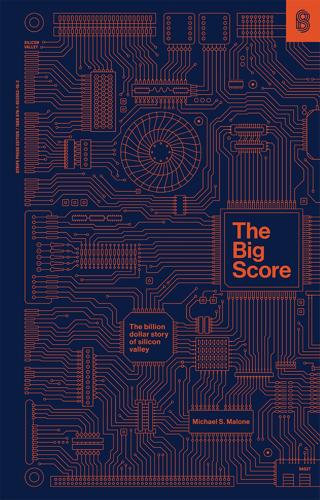
The Big Score
by
Michael S. Malone
Published 20 Jul 2021
But if the workforce is mistreated, disrupted, and, worst of all, feels forgotten by management, then the future of Silicon Valley be damned, those people need the protection of a union. In 1983, Atari, with its layoffs and lack of employee communication, achieved new lows in alienation and found itself facing the first major Silicon Valley union vote. If ever there were high-tech workers deserving of a union, it was the Atari employees. Still, they turned it down. Apparently it was not yet time. But one day it may be, and union experts can already predict the scenario. First, the combination of an economic downturn (to create a stable workforce) and a local company treating its people badly will result in a shocking union victory.

Empire of AI: Dreams and Nightmares in Sam Altman's OpenAI
by
Karen Hao
Published 19 May 2025
Now the talent war had only grown more heated, and Musk himself had poached away one of OpenAI’s key founding scientists, Andrej Karpathy, in June 2017, to direct Tesla’s AI division. On compensation, OpenAI had a major disadvantage: It couldn’t offer equity into the organization, which many Bay Area tech workers viewed as necessary to afford the steep cost of living. Musk soon arrived at his own conclusion for how to solve OpenAI’s money problem. In January 2018, Andrej Karpathy emailed Musk with new data showing how much Google was dominating top AI research publications. “Working at the cutting edge of AI is unfortunately expensive,” Karpathy wrote.

Future Crimes: Everything Is Connected, Everyone Is Vulnerable and What We Can Do About It
by
Marc Goodman
Published 24 Feb 2015
Update,” Daily Kos, Oct. 22, 2013. 20 “computers we ride in”: Cory Doctorow, “Lockdown,” based on a keynote speech to the Chaos Computer Congress in Berlin, Dec. 2011. 21 According to a study by Carnegie Mellon: Michelle Delio, “Linux, Fewer Bugs Than Rivals,” Wired, Dec. 14, 2004. 22 A labyrinthine electrical grid: “Northeast Blackout of 2003,” Wikipedia. 23 Computer failures also: National Commission on the BP Deepwater Horizon Oil Spill and Offshore Drilling, “Deep Water: The Gulf Oil Disaster and the Future of Offshore Drilling,” Report to the President, Jan. 2011; “Deepwater Horizon Explosion,” Wikipedia; Jeremy Repanich, “The Deepwater Horizon Spill by the Numbers,” Popular Mechanics, Aug. 10, 2010. 24 At a government hearing: Gregg Keizer, “Tech Worker Testifies of ‘Blue Screen Death’ on Oil Rig’s Computer,” Computerworld, July 23, 2010; David Hammer, “Oil Spill Hearings: Bypassed General Alarm Doomed Workers in Drilling Area, Technician Testifies,” Times-Picayune, July 23, 2010. 25 We’ve already seen this happen: Tom Simonite, “Stuxnet Tricks Copied by Computer Criminals,” MIT Technology Review, Sept. 19, 2012.
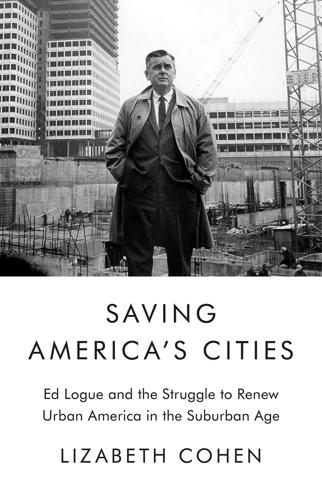
Saving America's Cities: Ed Logue and the Struggle to Renew Urban America in the Suburban Age
by
Lizabeth Cohen
Published 30 Sep 2019
The Charles Center was a large-scale redevelopment project in central Baltimore’s downtown business district built in the late 1950s and early 1960s to stem decline; see Nicholas Dagen Bloom, Merchant of Illusion: James Rouse, America’s Salesman of the Businessman’s Utopia (Columbus: Ohio State University Press, 2004), 37–43. This strategy of a city encouraging its workers to patronize local restaurants persists today; Nellie Bowles, “San Francisco Officials to Tech Workers: Buy Your Lunch,” NYT, July 31, 2018. 66. McKinnell, interview by Cohen; also see Ellen Perry Berkeley, “More Than You May Want to Know About the Boston City Hall,” Architecture Plus 1, no. 1 (1973): 72–77. 67. Hilgenhurst,“Evolution of Boston’s Government Center,” 11 on workforce size, 22 on tax assessments. 68.

Digital Empires: The Global Battle to Regulate Technology
by
Anu Bradford
Published 25 Sep 2023
Among the uncertain questions is whether the Chinese government is able to pursue its ambitions for global technological and economic leadership while simultaneously weakening the very companies that are the engine of the country’s technological progress and innovation. The Chinese government is already seemingly alarmed by the sharp sell-off of Chinese tech company stocks, large-scale layoffs of tech workers, and other market reactions to its harsh policy measures. As a result, the government has pledged to introduce policies that reassure investors and increase the transparency of its policymaking toward the tech industry.190 These promises suggest that its crackdown on the industry might be easing.191 However, significant uncertainty is likely to linger concerning the future of the Chinese state-driven regulatory model and what its next phase will look like in the coming years.